2014 Bannu bombing
The 2014 Bannu Bombing was a bombing attack by the Taliban that killed twenty six Pakistani soldiers. Thirty-eight other people were injured as a result of the bombing.
A bomb attack on an army convoy in the city of Bannu kills at least 26 Pakistani soldiers and injures 38 others.
The 2014 Bannu Bombing was a bombing attack by the Taliban that killed twenty six Pakistani soldiers. Thirty-eight other people were injured as a result of the bombing.

Bannu is a city located on the Kurram River in southern Khyber Pakhtunkhwa, Pakistan. It is the capital of Bannu Division. Bannu's residents are primarily members of the Banuchi tribe and speak Banuchi (Baniswola) dialect of Pashto which is similar to the distinct Waziristani dialect. Total 5 Tehsil in Bannu.
The Hong Kong–based file-sharing website Megaupload was shut down by the FBI.
File sharing is the practice of distributing or providing access to digital media, such as computer programs, multimedia, documents or electronic books. Common methods of storage, transmission and dispersion include removable media, centralized servers on computer networks, Internet-based hyperlinked documents, and the use of distributed peer-to-peer networking.
Megaupload Ltd was a Hong Kong-based online company established in 2005 that operated from 2005 to 2012 providing online services related to file storage and viewing.

The Federal Bureau of Investigation (FBI) is the domestic intelligence and security service of the United States and its principal federal law enforcement agency. Operating under the jurisdiction of the United States Department of Justice, the FBI is also a member of the U.S. Intelligence Community and reports to both the Attorney General and the Director of National Intelligence. A leading U.S. counterterrorism, counterintelligence, and criminal investigative organization, the FBI has jurisdiction over violations of more than 200 categories of federal crimes.
The Hong Kong-based file-sharing website Megaupload is shut down by the FBI.
Megaupload Ltd was a Hong Kong-based online company established in 2005 that operated from 2005 to 2012 providing online services related to file storage and viewing.

The Federal Bureau of Investigation (FBI) is the domestic intelligence and security service of the United States and its principal federal law enforcement agency. Operating under the jurisdiction of the United States Department of Justice, the FBI is also a member of the U.S. Intelligence Community and reports to both the Attorney General and the Director of National Intelligence. A leading U.S. counterterrorism, counterintelligence, and criminal investigative organization, the FBI has jurisdiction over violations of more than 200 categories of federal crimes.
Turkish-Armenian journalist and human-rights activist Hrant Dink was assassinated by a Turkish nationalist in Istanbul.
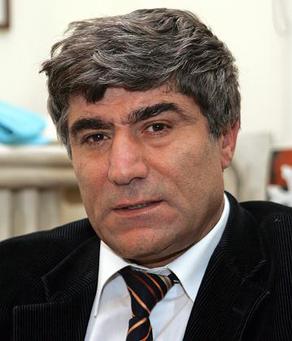
Hrant Dink was a Turkish-Armenian intellectual, editor-in-chief of Agos, journalist and columnist.

The prominent Turkish-Armenian journalist Hrant Dink was assassinated in Istanbul on 19 January 2007. Dink was a newspaper editor who had written and spoken about the Armenian genocide, and was well known for his efforts for reconciliation between Turks and Armenians and his advocacy of human and minority rights in Turkey. At the time of his death, he was on trial for violating Article 301 of the Turkish Penal Code and "denigrating Turkishness". His murder sparked both massive national protests in Turkey itself as well as widespread international outrage.
A four-man team, using only skis and kites, completed a 1,093-mile (1,759 km) trek to reach the Southern Pole of Inaccessibility, the first people to get there since 1967, and the first to do so on foot.
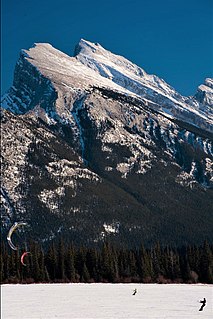
Snowkiting or kite skiing is an outdoor winter sport where people use kite power to glide on snow or ice. The skier uses a kite to give them power over large jumps. The sport is similar to water-based kiteboarding, but with the footwear used in snowboarding or skiing. The principles of using the kite are the same, but in different terrain. In the early days of snowkiting, foil kites were the most common type; nowadays many kiteboarders use inflatable kites. However, since 2013, newly developed racing foil kites seem to dominate speed races and expedition races, like Red Bull Ragnarok and the Vake mini-expedition race. Snowkiting differs from other alpine sports in that it is possible for the snowkiter to travel uphill and downhill with any wind direction. Like kiteboarding, snowkiting can be very hazardous and should be learned and practiced with care. Snowkiting has become more popular in places often associated with skiing and snowboarding, such as Russia, Canada, Iceland, France, Switzerland, Austria, Norway, Sweden, Finland and the Northern and Central United States. The sport has become more diverse as adventurers use kites to travel great distances and sports enthusiasts push the boundaries of freestyle, big air, speed and back country exploration.

The Pole of Inaccessibility research station is a defunct Soviet research station in Kemp Land, Antarctica, at the southern pole of inaccessibility as defined in 1958 when the station was established. Later definitions give other locations, all relatively near this point. It performed meteorological observations from 14 to 26 December 1958. The Pole of Inaccessibility has the world's coldest year-round average temperature of −58.2 °C (−72.8 °F).
Turkish-Armenian journalist Hrant Dink is assassinated in front of his newspaper's Istanbul office by 17-year-old Turkish ultra-nationalist Ogün Samast.

Hrant Dink was a Turkish-Armenian intellectual, editor-in-chief of Agos, journalist and columnist.

The prominent Turkish-Armenian journalist Hrant Dink was assassinated in Istanbul on 19 January 2007. Dink was a newspaper editor who had written and spoken about the Armenian genocide, and was well known for his efforts for reconciliation between Turks and Armenians and his advocacy of human and minority rights in Turkey. At the time of his death, he was on trial for violating Article 301 of the Turkish Penal Code and "denigrating Turkishness". His murder sparked both massive national protests in Turkey itself as well as widespread international outrage.
Four-man Team N2i, using only skis and kites, completes a 1,093-mile (1,759 km) trek to reach the Antarctic pole of inaccessibility for the first time since 1965 and for the first time ever without mechanical assistance.

Henry John R Cookson, FRGS is a British polar explorer and adventurer. On 19 January 2007 he, alongside fellow Britons Rory Sweet and Rupert Longsdon, and their Canadian polar guide Paul Landry, became the first team to reach the southern pole of Inaccessibility (POI) by foot, the last visitors being a research team using tracked vehicles & planes in 1965.

Snowkiting or kite skiing is an outdoor winter sport where people use kite power to glide on snow or ice. The skier uses a kite to give them power over large jumps. The sport is similar to water-based kiteboarding, but with the footwear used in snowboarding or skiing. The principles of using the kite are the same, but in different terrain. In the early days of snowkiting, foil kites were the most common type; nowadays many kiteboarders use inflatable kites. However, since 2013, newly developed racing foil kites seem to dominate speed races and expedition races, like Red Bull Ragnarok and the Vake mini-expedition race. Snowkiting differs from other alpine sports in that it is possible for the snowkiter to travel uphill and downhill with any wind direction. Like kiteboarding, snowkiting can be very hazardous and should be learned and practiced with care. Snowkiting has become more popular in places often associated with skiing and snowboarding, such as Russia, Canada, Iceland, France, Switzerland, Austria, Norway, Sweden, Finland and the Northern and Central United States. The sport has become more diverse as adventurers use kites to travel great distances and sports enthusiasts push the boundaries of freestyle, big air, speed and back country exploration.

The Pole of Inaccessibility research station is a defunct Soviet research station in Kemp Land, Antarctica, at the southern pole of inaccessibility as defined in 1958 when the station was established. Later definitions give other locations, all relatively near this point. It performed meteorological observations from 14 to 26 December 1958. The Pole of Inaccessibility has the world's coldest year-round average temperature of −58.2 °C (−72.8 °F).
In the deadliest aviation accident in Slovak history, an Antonov An-24 aircraft operated by the Slovak Air Force crashed in northern Hungary, killing 42 of the 43 people on board.

The Antonov An-24 is a 44-seat twin turboprop transport/passenger aircraft designed in 1957 in the Soviet Union by the Antonov Design Bureau and manufactured by Kyiv, Irkutsk and Ulan-Ude Aviation Factories.

The Slovak Air Force, known since 2002 as the Air Force of the Armed Forces of the Slovak Republic, is the aviation and air defense branch of the Slovak Armed Forces. Operating 23 aircraft and 10 helicopters from three air bases : Malacky–Kuchyňa, Sliač, Prešov. It succeeded the Czechoslovak Air Force together with the Czech Air Force in 1993. The Slovak Air Force is part of NATO Integrated Air Defense System – NATINADS.

On 19 January 2006 an Antonov An-24 aircraft operated by the Slovak Air Force crashed in northern Hungary, near the village of Hejce and town of Telkibánya. The airplane was carrying Slovak peacekeepers from Kosovo. Of the 43 people on board, there was only one survivor. The crash remains the deadliest in Hungarian and Slovak history.
The key of Majulah Singapura, the national anthem of Singapore, was changed to F major.

"Majulah Singapura" is the national anthem of the Republic of Singapore. Composed by Zubir Said in 1958 as a theme song for official functions of the City Council of Singapore, the song was selected in 1959 as the nation's anthem when it attained self-government. Upon full independence in 1965, "Majulah Singapura" was formally adopted as Singapore's national anthem. By law, the anthem must be sung with Malay lyrics, but there are authorised translations of the lyrics of the anthem in Singapore's three other official languages: English, Mandarin and Tamil.
A national anthem is a patriotic musical composition symbolizing and evoking eulogies of the history and traditions of a country or nation. The majority of national anthems are marches or hymns in style. American, Central Asian, and European nations tend towards more ornate and operatic pieces, while those in the Middle East, Oceania, Africa, and the Caribbean use a more simplistic fanfare. Some countries that are devolved into multiple constituent states have their own official musical compositions for them ; their constituencies' songs are sometimes referred to as national anthems even though they are not sovereign states.
F major is a major scale based on F, with the pitches F, G, A, B♭, C, D, and E. Its key signature has one flat. Its relative minor is D minor and its parallel minor is F minor.
British Aerospace agrees to acquire the defence subsidiary of the General Electric Company plc, forming BAE Systems in November 1999.

British Aerospace plc (BAe) was a British aircraft, munitions and defence-systems manufacturer. Its head office was at Warwick House in the Farnborough Aerospace Centre in Farnborough, Hampshire. Formed in 1977, in 1999 it purchased Marconi Electronic Systems, the defence electronics and naval shipbuilding subsidiary of the General Electric Company plc, to form BAE Systems.
The General Electric Company (GEC) was a major British industrial conglomerate involved in consumer and defence electronics, communications, and engineering. The company was founded in 1886, was Britain's largest private employer with over 250,000 employees in the 1980s, and at its peak in the 1990s, made profits of over £1 billion a year.
BAE Systems plc (BAE) is a British multinational arms, security, and aerospace company based in London, England. It is the largest defence contractor in Europe, and ranked the seventh-largest in the world based on applicable 2021 revenues. As of 2017, it is the biggest manufacturer in Britain. Its largest operations are in the United Kingdom and United States, where its BAE Systems Inc. subsidiary is one of the six largest suppliers to the US Department of Defense. Other major markets include Australia, Canada, Japan, India, Saudi Arabia, Turkey, Qatar, Oman and Sweden, where Saudi Arabia is regularly among its top three sources of revenue. The company was formed on 30 November 1999 by the £7.7 billion purchase of and merger with Marconi Electronic Systems (MES), the defence electronics and naval shipbuilding subsidiary of the General Electric Company plc (GEC), by British Aerospace, an aircraft, munitions and naval systems manufacturer.
Yasser Arafat returns to Hebron after more than 30 years and joins celebrations over the handover of the last Israeli-controlled West Bank city.

Mohammed Abdel Rahman Abdel Raouf al-Qudwa al-Husseini, popularly known as Yasser Arafat or by his kunya Abu Ammar, was a Palestinian political leader. He was Chairman of the Palestine Liberation Organization (PLO) from 1969 to 2004 and President of the Palestinian National Authority (PNA) from 1994 to 2004. Ideologically an Arab nationalist and a socialist, he was a founding member of the Fatah political party, which he led from 1959 until 2004.

Hebron is a Palestinian city in the southern West Bank, 30 kilometres (19 mi) south of Jerusalem. Nestled in the Judaean Mountains, it lies 930 metres (3,050 ft) above sea level. The second-largest city in the West Bank, and the third-largest in the Palestinian territories, it has a population of over 215,000 Palestinians (2016), and seven hundred Jewish settlers concentrated on the outskirts of its Old City. It includes the Cave of the Patriarchs, which Jewish, Christian, and Islamic traditions all designate as the burial site of three key patriarchal/matriarchal couples. The city is often considered one of the four holy cities in Judaism as well as in Islam.

The West Bank is a landlocked territory near the coast of the Mediterranean in Western Asia that forms the main bulk of the Palestinian territories. It is bordered by Jordan and the Dead Sea to the east and by Israel to the south, west, and north. Under an Israeli military occupation since 1967, its area is split into 165 Palestinian "islands" that are under total or partial civil administration by the Palestinian National Authority (PNA), and 230 Israeli settlements into which Israeli law is "pipelined". The West Bank includes East Jerusalem.
A tank barge and a tug grounded on a beach in Rhode Island, U.S., spilling an estimated 828,000 U.S. gallons (3,130,000 l) of home heating oil.

Barge nowadays generally refers to a flat-bottomed inland waterway vessel which does not have its own means of mechanical propulsion. The first modern barges were pulled by tugs, but nowadays most are pushed by pusher boats, or other vessels. The term barge has a rich history, and therefore there are many other types of barges.
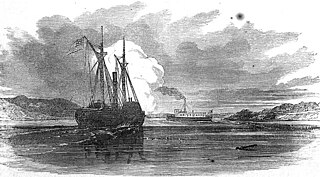
A tugboat or tug is a marine vessel that manoeuvres other vessels by pushing or pulling them, with direct contact or a tow line. These boats typically tug ships in circumstances where they can or should not move under their own power, such as in crowded harbour or narrow canals, or cannot move at all, such as barges, disabled ships, log rafts, or oil platforms. Some are ocean-going, some are icebreakers or salvage tugs. Early models were powered by steam engines, long ago superseded by diesel engines. Many have deluge gun water jets, which help in firefighting, especially in harbours.

Rhode Island is a state in the New England region of the Northeastern United States. It is the smallest U.S. state by area and the seventh-least populous, with slightly fewer than 1.1 million residents as of 2020, but it is the second-most densely populated after New Jersey. It takes its name from the eponymous island, though most of its land area is on the mainland. Rhode Island borders Connecticut to the west; Massachusetts to the north and east; and the Atlantic Ocean to the south via Rhode Island Sound and Block Island Sound. It also shares a small maritime border with New York. Providence is its capital and most populous city.
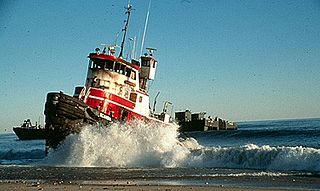
The North Cape oil spill took place on January 19, 1996, when the tank barge North Cape and the tug Scandia grounded on Moonstone Beach in South Kingstown, Rhode Island, after the tug caught fire in its engine room during a winter storm. An estimated 828,000 US gallons (3,130 m3) of home heating oil was spilled. Oil spread throughout a large area of Block Island Sound, including Trustom Pond National Wildlife Refuge, resulting in the closure of a 250-square-mile (650 km2) area of the sound for fishing.
Heating oil is any petroleum product or other oil used for heating; a fuel oil. Most commonly, it refers to low viscosity grades of fuel oil used for furnaces or boilers use for home heating and in other buildings. Home heating oil is often abbreviated as HHO.
The barge North Cape oil spill occurs as an engine fire forces the tugboat Scandia ashore on Moonstone Beach in South Kingstown, Rhode Island.

The North Cape oil spill took place on January 19, 1996, when the tank barge North Cape and the tug Scandia grounded on Moonstone Beach in South Kingstown, Rhode Island, after the tug caught fire in its engine room during a winter storm. An estimated 828,000 US gallons (3,130 m3) of home heating oil was spilled. Oil spread throughout a large area of Block Island Sound, including Trustom Pond National Wildlife Refuge, resulting in the closure of a 250-square-mile (650 km2) area of the sound for fishing.

South Kingstown is a town in, and the county seat of, Washington County, Rhode Island, United States. The population was 31,931 at the 2020 census. South Kingstown is the second largest town in Rhode Island by total geographic area, behind New Shoreham, and the third largest town in Rhode Island by geographic land area, behind Exeter and Coventry.
After being struck by lightning the crew of Bristow Helicopters Flight 56C are forced to ditch. All 18 aboard are later rescued.

Bristow Helicopters Flight 56C was a helicopter flight that flew between Aberdeen and the Brae Alpha oil rig in the North Sea. On 19 January 1995, the AS 332L Super Puma helicopter operating the route, registered G-TIGK and named Cullen, was struck by lightning. The flight was carrying 16 oil workers from Aberdeen to an oil platform at the Brae oilfield. All 18 people on board survived.
Czech Republic and Slovakia join the United Nations.

The Czech Republic, also known as Czechia, is a landlocked country in Central Europe. Historically known as Bohemia, it is bordered by Austria to the south, Germany to the west, Poland to the northeast, and Slovakia to the southeast. The Czech Republic has a hilly landscape that covers an area of 78,871 square kilometers (30,452 sq mi) with a mostly temperate continental and oceanic climate. The capital and largest city is Prague; other major cities and urban areas include Brno, Ostrava, Plzeň and Liberec.

Slovakia, officially the Slovak Republic, is a landlocked country in Central Europe. It is bordered by Poland to the north, Ukraine to the east, Hungary to the south, Austria to the southwest, and the Czech Republic to the northwest. Slovakia's mostly mountainous territory spans about 49,000 square kilometres (19,000 sq mi), with a population of over 5.4 million. The capital and largest city is Bratislava, while the second largest city is Košice.

The United Nations (UN) is an intergovernmental organization whose stated purposes are to maintain international peace and security, develop friendly relations among nations, achieve international cooperation, and be a centre for harmonizing the actions of nations. It is the world's largest and most familiar international organization. The UN is headquartered on international territory in New York City, and has other main offices in Geneva, Nairobi, Vienna, and The Hague.
Gulf War: Iraq fires a second Scud missile into Israel, causing 15 injuries.

The Gulf War was a 1990–1991 armed campaign waged by a 35-country military coalition in response to the Iraqi invasion of Kuwait. Spearheaded by the United States, the coalition's efforts against Iraq were carried out in two key phases: Operation Desert Shield, which marked the military buildup from August 1990 to January 1991; and Operation Desert Storm, which began with the aerial bombing campaign against Iraq on 17 January 1991 and came to a close with the American-led Liberation of Kuwait on 28 February 1991.

Iraq, officially the Republic of Iraq, is a country in Western Asia. It is bordered by Turkey to the north, Iran to the east, the Persian Gulf and Kuwait to the southeast, Saudi Arabia to the south, Jordan to the southwest and Syria to the west. The capital and largest city is Baghdad. Iraq is home to diverse ethnic groups including Iraqi Arabs, Kurds, Turkmens, Assyrians, Armenians, Yazidis, Mandaeans, Persians and Shabakis with similarly diverse geography and wildlife. The vast majority of the country's 44 million residents are Muslims – the notable other faiths are Christianity, Yazidism, Mandaeism, Yarsanism and Zoroastrianism. The official languages of Iraq are Arabic and Kurdish; others also recognised in specific regions are Neo-Aramaic, Turkish and Armenian.
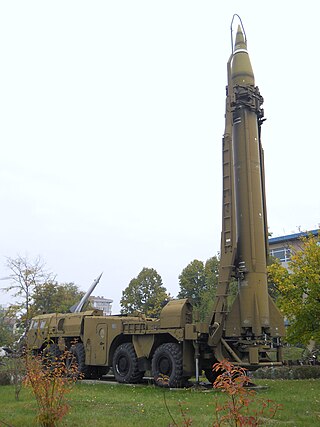
A Scud missile is one of a series of tactical ballistic missiles developed by the Soviet Union during the Cold War. It was exported widely to both Second and Third World countries. The term comes from the NATO reporting name attached to the missile by Western intelligence agencies. The Russian names for the missile are the R-11, and the R-17 Elbrus. The name Scud has been widely used to refer to these missiles and the wide variety of derivative variants developed in other countries based on the Soviet design.
The first IBM PC computer virus is released into the wild. A boot sector virus dubbed (c)Brain, it was created by the Farooq Alvi Brothers in Lahore, Pakistan, reportedly to deter unauthorized copying of the software they had written.

The IBM Personal Computer is the first microcomputer released in the IBM PC model line and the basis for the IBM PC compatible de facto standard. Released on August 12, 1981, it was created by a team of engineers and designers directed by Don Estridge in Boca Raton, Florida.

A computer virus is a type of computer program that, when executed, replicates itself by modifying other computer programs and inserting its own code. If this replication succeeds, the affected areas are then said to be "infected" with a computer virus, a metaphor derived from biological viruses.

Brain is the industry standard name for a computer virus that was released in its first form on 19 January 1986, and is considered to be the first computer virus for the IBM Personal Computer and compatibles.

Lahore is the second most populous city in Pakistan after Karachi and 26th most populous city in the world, with a population of over 13 million. It is the capital of the province of Punjab where it is the largest city. Lahore is one of Pakistan's major industrial and economic hubs, with an estimated GDP (PPP) of $84 billion as of 2019. It is the largest city as well as historic and cultural capital of the wider Punjab region, and is one of Pakistan's most socially liberal, progressive, and cosmopolitan cities. It is situated in north-east of the country, close to the International border with India.
Nazi war criminal Klaus Barbie is arrested in Bolivia.
Nazism, the common name in English for National Socialism, is the far-right totalitarian political ideology and practices associated with Adolf Hitler and the Nazi Party (NSDAP) in Nazi Germany. During Hitler's rise to power in 1930s Europe, it was frequently referred to as Hitlerism. The later related term "neo-Nazism" is applied to other far-right groups with similar ideas which formed after the Second World War.

Nikolaus "Klaus" Barbie was a German operative of the SS and SD who worked in Vichy France during World War II. He became known as the "Butcher of Lyon" for having personally tortured prisoners—primarily Jews and members of the French Resistance—as the head of the Gestapo in Lyon. After the war, United States intelligence services, which employed him for his anti-communist efforts, aided his escape to Bolivia, where he advised the regime on how to repress opposition through torture. The United States later offered France a formal apology for aiding Barbie's escape from an outstanding arrest warrant.

Bolivia, officially the Plurinational State of Bolivia, is a landlocked country located in western-central South America. It is bordered by Brazil to the north and east, Paraguay to the southeast, Argentina to the south, Chile to the southwest and Peru to the west. The seat of government and executive capital is La Paz, while the constitutional capital is Sucre. The largest city and principal industrial center is Santa Cruz de la Sierra, located on the Llanos Orientales, a mostly flat region in the east of the country.
The Apple Lisa, the first commercial personal computer from Apple Computer to have a graphical user interface and a computer mouse, is announced.

Lisa is a desktop computer developed by Apple, released on January 19, 1983. It is one of the first personal computers to present a graphical user interface (GUI) in a machine aimed at individual business users. Its development began in 1978. It underwent many changes before shipping at US$9,995 with a five-megabyte hard drive. It was affected by its high price, insufficient software, unreliable Apple FileWare floppy disks, and the immediate release of the cheaper and faster Macintosh. Only 10,000 were sold in two years.

A personal computer (PC) is a multi-purpose microcomputer whose size, capabilities, and price make it feasible for individual use. Personal computers are intended to be operated directly by an end user, rather than by a computer expert or technician. Unlike large, costly minicomputers and mainframes, time-sharing by many people at the same time is not used with personal computers. Primarily in the late 1970s and 1980s, the term home computer was also used.

Apple Inc. is an American multinational technology company headquartered in Cupertino, California, United States. Apple is the largest technology company by revenue and, as of June 2022, is the world's biggest company by market capitalization, the fourth-largest personal computer vendor by unit sales and second-largest mobile phone manufacturer. It is one of the Big Five American information technology companies, alongside Alphabet, Amazon, Meta, and Microsoft.
The GUI, graphical user interface, is a form of user interface that allows users to interact with electronic devices through graphical icons and audio indicator such as primary notation, instead of text-based UIs, typed command labels or text navigation. GUIs were introduced in reaction to the perceived steep learning curve of CLIs, which require commands to be typed on a computer keyboard.

A computer mouse is a hand-held pointing device that detects two-dimensional motion relative to a surface. This motion is typically translated into the motion of a pointer on a display, which allows a smooth control of the graphical user interface of a computer.
Iran hostage crisis: United States and Iranian officials sign an agreement to release 52 American hostages after 14 months of captivity.

On November 4, 1979, 52 United States diplomats and citizens were held hostage after a group of militarized Iranian college students belonging to the Muslim Student Followers of the Imam's Line, who supported the Iranian Revolution, took over the U.S. Embassy in Tehran and took them as hostages. A diplomatic standoff ensued. The hostages were held for 444 days, being released on January 20, 1981.

Iran, officially the Islamic Republic of Iran, and also called Persia, is a country in Western Asia. It is bordered by Iraq and Turkey to the west, by Azerbaijan and Armenia to the northwest, by the Caspian Sea and Turkmenistan to the north, by Afghanistan and Pakistan to the east, and by the Gulf of Oman and the Persian Gulf to the south. It covers an area of 1.64 million square kilometres, making it the 17th-largest country. Iran has a population of 86 million, making it the 17th-most populous country in the world, and the second-largest in the Middle East. Its largest cities, in descending order, are the capital Tehran, Mashhad, Isfahan, Karaj, Shiraz, and Tabriz.
The last Volkswagen Beetle made in Germany leaves VW's plant in Emden. Beetle production in Latin America continues until 2003.

The Volkswagen Beetle—officially the Volkswagen Type 1, informally in German der Käfer, in parts of the English-speaking world the Bug, and known by many other nicknames in other languages—is a two-door, rear-engine economy car, intended for five occupants, that was manufactured and marketed by German automaker Volkswagen (VW) from 1938 until 2003.
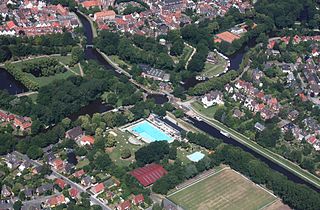
Emden is an independent city and seaport in Lower Saxony in the northwest of Germany, on the river Ems. It is the main city of the region of East Frisia and, in 2011, had a total population of 51,528.
Iva Toguri, convicted of treason for broadcasting Japanese propaganda, was granted a full pardon by U.S. president Gerald Ford.
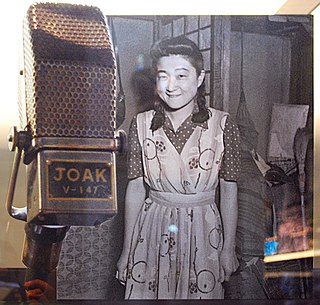
Iva Ikuko Toguri D'Aquino was a Japanese-American disc jockey and radio personality who participated in English-language radio broadcasts transmitted by Radio Tokyo to Allied troops in the South Pacific during World War II on The Zero Hour radio show.

Tokyo Rose was a name given by Allied troops in the South Pacific during World War II to all female English-speaking radio broadcasters of Japanese propaganda. The programs were broadcast in the South Pacific and North America to demoralize Allied forces abroad and their families at home by emphasizing troops' wartime difficulties and military losses. Several female broadcasters operated using different aliases and in different cities throughout the territories occupied by the Japanese Empire, including Tokyo, Manila, and Shanghai. The name "Tokyo Rose" was never actually used by any Japanese broadcaster, but it first appeared in US newspapers in the context of these radio programs during 1943.

Gerald Rudolph Ford Jr. was an American politician who served as the 38th president of the United States from 1974 to 1977. He was the only president never to have been elected to the office of president or vice president. He previously served as the leader of the Republican Party in the House of Representatives, and was appointed to be the 40th vice president in 1973. When President Richard Nixon resigned in 1974, Ford succeeded to the presidency, but was defeated for election to a full term in 1976.
President Gerald Ford pardons Iva Toguri D'Aquino (a.k.a. "Tokyo Rose").

Gerald Rudolph Ford Jr. was an American politician who served as the 38th president of the United States from 1974 to 1977. He was the only president never to have been elected to the office of president or vice president. He previously served as the leader of the Republican Party in the House of Representatives, and was appointed to be the 40th vice president in 1973. When President Richard Nixon resigned in 1974, Ford succeeded to the presidency, but was defeated for election to a full term in 1976.

Iva Ikuko Toguri D'Aquino was a Japanese-American disc jockey and radio personality who participated in English-language radio broadcasts transmitted by Radio Tokyo to Allied troops in the South Pacific during World War II on The Zero Hour radio show.

Tokyo Rose was a name given by Allied troops in the South Pacific during World War II to all female English-speaking radio broadcasters of Japanese propaganda. The programs were broadcast in the South Pacific and North America to demoralize Allied forces abroad and their families at home by emphasizing troops' wartime difficulties and military losses. Several female broadcasters operated using different aliases and in different cities throughout the territories occupied by the Japanese Empire, including Tokyo, Manila, and Shanghai. The name "Tokyo Rose" was never actually used by any Japanese broadcaster, but it first appeared in US newspapers in the context of these radio programs during 1943.
An earthquake registering 6.8 Ms struck northern Himachal Pradesh in India, causing extensive damage to the region.
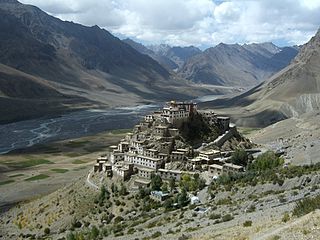
The 1975 Kinnaur earthquake occurred in the early afternoon of 19 January. It had a magnitude of 6.8 on the surface wave magnitude scale and a maximum perceived intensity of IX (Violent) on the Mercalli intensity scale, causing extensive damage in Himachal Pradesh, in northern India. Its epicentre was in Kinnaur district in the southeastern part of Himachal Pradesh and caused 47 casualties. Landslides, rock falls and avalanches caused major damage to the Hindustan-Tibet Road. The earthquake affected many monasteries and buildings in the state and led to an extensive restoration work in the late 1970s and early 1980s in Himachal Pradesh. The Spiti and Parachu valleys in particular suffered the greatest damage being on the north–south Kaurik-Chango fault, causing damage to landmarks such as Key Monastery and Tabo Monastery.
The surface wave magnitude scale is one of the magnitude scales used in seismology to describe the size of an earthquake. It is based on measurements of Rayleigh surface waves that travel along the uppermost layers of the Earth. This magnitude scale is related to the local magnitude scale proposed by Charles Francis Richter in 1935, with modifications from both Richter and Beno Gutenberg throughout the 1940s and 1950s. It is currently used in People's Republic of China as a national standard for categorising earthquakes.The successful development of the local-magnitude scale encouraged Gutenberg and Richter to develop magnitude scales based on teleseismic observations of earthquakes. Two scales were developed, one based on surface waves, , and one on body waves, . Surface waves with a period near 20 s generally produce the largest amplitudes on a standard long-period seismograph, and so the amplitude of these waves is used to determine , using an equation similar to that used for .
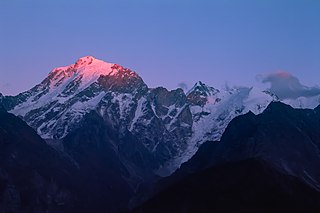
Himachal Pradesh is a state in the northern part of India. Situated in the Western Himalayas, it is one of the thirteen mountain states and is characterized by an extreme landscape featuring several peaks and extensive river systems. Himachal Pradesh is the northernmost state of India and shares borders with the union territories of Jammu and Kashmir and Ladakh to the north, and the states of Punjab to the west, Haryana to the southwest, Uttarakhand to the southeast and a very narrow border with Uttar Pradesh to the south. The state also shares an international border to the east with the Tibet Autonomous Region in China. Himachal Pradesh is also known as Dev Bhoomi, meaning 'Land of Gods' and Veer Bhoomi which means 'Land of the Brave'.
The French newspaper L'Aurore revealed that the former Nazi SS officer Klaus Barbie (pictured), the "Butcher of Lyon", had been found to be living in Peru.
L'Aurore [lo.ʁɔʁ] was a French newspaper first sold on 11 September 1944, soon after the Liberation of Paris. Its name refers to the previous, unrelated publication, L'Aurore (1897–1914). Publication ended in 1985.

The Schutzstaffel was a major paramilitary organization under Adolf Hitler and the Nazi Party in Nazi Germany, and later throughout German-occupied Europe during World War II.

Nikolaus "Klaus" Barbie was a German operative of the SS and SD who worked in Vichy France during World War II. He became known as the "Butcher of Lyon" for having personally tortured prisoners—primarily Jews and members of the French Resistance—as the head of the Gestapo in Lyon. After the war, United States intelligence services, which employed him for his anti-communist efforts, aided his escape to Bolivia, where he advised the regime on how to repress opposition through torture. The United States later offered France a formal apology for aiding Barbie's escape from an outstanding arrest warrant.
Student Jan Palach dies after setting himself on fire three days earlier in Prague's Wenceslas Square to protest about the invasion of Czechoslovakia by the Soviet Union in 1968. His funeral turns into another major protest.
Jan Palach was a Czech student of history and political economics at Charles University in Prague. His self-immolation was a political protest against the end of the Prague Spring resulting from the 1968 invasion of Czechoslovakia by the Warsaw Pact armies.

Prague is the capital and largest city in the Czech Republic, and the historical capital of Bohemia. On the Vltava river, Prague is home to about 1.3 million people. The city has a temperate oceanic climate, with relatively warm summers and chilly winters.

Wenceslas Square is one of the main city squares and the centre of the business and cultural communities in the New Town of Prague, Czech Republic. Many historical events occurred there, and it is a traditional setting for demonstrations, celebrations, and other public gatherings. It is also the place with the busiest pedestrian traffic in the whole country. The square is named after Saint Wenceslas, the patron saint of Bohemia. It is part of the historic centre of Prague, a World Heritage Site.

The Warsaw Pact invasion of Czechoslovakia refers to the events of 20–21 August 1968, when the Czechoslovak Socialist Republic was jointly invaded by four Warsaw Pact countries: the Soviet Union, the Polish People's Republic, the People's Republic of Bulgaria and the Hungarian People's Republic. The invasion stopped Alexander Dubček's Prague Spring liberalisation reforms and strengthened the authoritarian wing of the Communist Party of Czechoslovakia (KSČ).

Czechoslovakia was a sovereign state in Central Europe, created in 1918, when it declared its independence from Austria-Hungary. In 1938, after the Munich Agreement, the Sudetenland became part of Germany, while the country lost further territories to Hungary and Poland. Between 1939 and 1945 the state ceased to exist, as Slovakia proclaimed its independence and the remaining territories in the east became part of Hungary, while in the remainder of the Czech Lands the German Protectorate of Bohemia and Moravia was proclaimed. In 1939, after the outbreak of World War II, former Czechoslovak President Edvard Beneš formed a government-in-exile and sought recognition from the Allies.

The Soviet Union, officially the Union of Soviet Socialist Republics (USSR), was a transcontinental country that spanned much of Eurasia from 1922 to 1991. A flagship communist state, it was nominally a federal union of fifteen national republics; in practice, both its government and its economy were highly centralized until its final years. It was a one-party state governed by the Communist Party of the Soviet Union, with the city of Moscow serving as its capital as well as that of its largest and most populous republic: the Russian SFSR. Other major cities included Leningrad, Kiev, Minsk, Tashkent, Alma-Ata, and Novosibirsk. It was the largest country in the world, covering over 22,402,200 square kilometres (8,649,500 sq mi) and spanning eleven time zones.
Japan and the United States sign the US–Japan Mutual Security Treaty

The Treaty of Mutual Cooperation and Security between the United States and Japan , more commonly known as the U.S.-Japan Security Treaty in English and as the Anpo jōyaku (安保条約) or just Anpo (安保) in Japanese, is a treaty that permits the presence of U.S. military bases on Japanese soil, and commits the two nations to defend each other if one or the other is attacked "in the territories under the administration of Japan". Over time, it has had the effect of establishing a military alliance between the United States and Japan.
Scandinavian Airlines System Flight 871 crashes near Ankara Esenboğa Airport in Turkey, killing all 42 aboard.

Scandinavian Airlines System Flight 871 was a scheduled flight from Copenhagen in Denmark to the Egyptian capital of Cairo, with several intermediate stop, operated by Scandinavian Airlines System. On 19 January 1960, the Sud Aviation Caravelle flying the service crashed while operating a leg between Yeşilköy Airport and Esenboğa International Airport in Turkey. The flight was on approach but crashed six nautical miles from the airport, killing all 42 occupants on board. This was the first fatal crash of a Caravelle.

Ankara Esenboğa Airport is the international airport of Ankara, the capital city of Turkey. It has been operating since 1955. In 2017, the airport has served more than 15 million passengers in total, 13 million of which were domestic passengers. It ranked 4th in terms of total passenger traffic, 3rd in terms of domestic passenger traffic among airports in Turkey.
Almost 72 percent of all television sets in the United States are tuned into I Love Lucy to watch Lucy give birth.

I Love Lucy is an American television sitcom that originally aired on CBS from October 15, 1951, to May 6, 1957, with a total of 180 half-hour episodes, spanning six seasons. The show starred Lucille Ball, her husband, Desi Arnaz, along with Vivian Vance and William Frawley. The series followed the life of Lucy Ricardo (Ball), a young, middle-class housewife living in New York City, who often concocted plans with her best friends and landlords, Ethel and Fred Mertz, to appear alongside her bandleader husband, Ricky Ricardo (Arnaz), in his nightclub. Lucy is depicted trying numerous schemes to mingle with and be a part of show business. After the series ended in 1957, a modified version of the show continued for three more seasons, with 13 one-hour specials, which ran from 1957 to 1960. It was first known as The Lucille Ball–Desi Arnaz Show, and later, in reruns, as The Lucy–Desi Comedy Hour.

Lucy and Ricky Ricardo, also known simply as Lucy and Ricky or the Ricardos, are fictional characters from the American television sitcom I Love Lucy, portrayed respectively by Lucille Ball and Desi Arnaz. The Ricardos also appear in The Lucy–Desi Comedy Hour, and Lucy also appears in one episode of The Ann Sothern Show.
"Lucy Goes to the Hospital" is an episode of the 1950s American television show I Love Lucy in which the title character, Lucy Ricardo, gives birth to a baby boy after a chaotic sequence of events. Twelve hours before the original broadcast on January 19, 1953, the actress who played Lucy, Lucille Ball, had given birth to Desi Arnaz, Jr. by cesarean section. The episode had actually been filmed on November 14, 1952.
General Douglas MacArthur establishes the International Military Tribunal for the Far East in Tokyo to try Japanese war criminals.

Douglas MacArthur was an American military leader who served as General of the Army for the United States, as well as a field marshal to the Philippine Army. He had served with distinction in World War I, was Chief of Staff of the United States Army during the 1930s, and he played a prominent role in the Pacific theater during World War II. MacArthur was nominated for the Medal of Honor three times, and received it for his service in the Philippines campaign. This made him along with his father Arthur MacArthur Jr. the first father and son to be awarded the medal. He was one of only five men to rise to the rank of General of the Army in the U.S. Army, and the only one conferred the rank of field marshal in the Philippine Army.

The International Military Tribunal for the Far East (IMTFE), also known as the Tokyo Trial or the Tokyo War Crimes Tribunal, was a military trial convened on April 29, 1946 to try leaders of the Empire of Japan for crimes against peace, conventional war crimes, and crimes against humanity leading up to and during the Second World War. It was modeled after the International Military Tribunal (IMT) formed several months earlier in Nuremberg, Germany to prosecute senior officials of Nazi Germany.
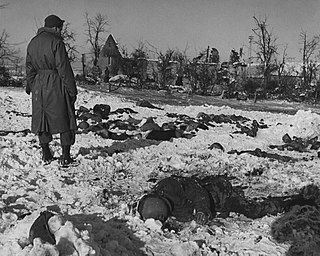
A war crime is a violation of the laws of war that gives rise to individual criminal responsibility for actions by combatants in action, such as intentionally killing civilians or intentionally killing prisoners of war, torture, taking hostages, unnecessarily destroying civilian property, deception by perfidy, wartime sexual violence, pillaging, and for any individual that is part of the command structure who orders any attempt to committing mass killings including genocide or ethnic cleansing, the granting of no quarter despite surrender, the conscription of children in the military and flouting the legal distinctions of proportionality and military necessity.
World War II: Soviet forces liberate the Łódź Ghetto. Of more than 200,000 inhabitants in 1940, less than 900 had survived the Nazi occupation.

The Workers' and Peasants' Red Army, often shortened to the Red Army, was the army and air force of the Russian Soviet Federative Socialist Republic and, after 1922, the Union of Soviet Socialist Republics. The army was established in January 1918. The Bolsheviks raised an army to oppose the military confederations of their adversaries during the Russian Civil War. Starting in February 1946, the Red Army, along with the Soviet Navy, embodied the main component of the Soviet Armed Forces; taking the official name of "Soviet Army", until its dissolution in 1991.

The Łódź Ghetto or Litzmannstadt Ghetto was a Nazi ghetto established by the German authorities for Polish Jews and Roma following the Invasion of Poland. It was the second-largest ghetto in all of German-occupied Europe after the Warsaw Ghetto. Situated in the city of Łódź, and originally intended as a preliminary step upon a more extensive plan of creating the Judenfrei province of Warthegau, the ghetto was transformed into a major industrial centre, manufacturing war supplies for Nazi Germany and especially for the Wehrmacht. The number of people incarcerated in it was increased further by the Jews deported from Nazi-controlled territories.
Nazism, the common name in English for National Socialism, is the far-right totalitarian political ideology and practices associated with Adolf Hitler and the Nazi Party (NSDAP) in Nazi Germany. During Hitler's rise to power in 1930s Europe, it was frequently referred to as Hitlerism. The later related term "neo-Nazism" is applied to other far-right groups with similar ideas which formed after the Second World War.
World War II: The Japanese conquest of Burma begins.

The Japanese invasion of Burma was the opening phase of the Burma campaign in the South-East Asian theatre of World War II, which took place over four years from 1942 to 1945. During the first year of the campaign, the Japanese Army drove British Empire and Chinese forces out of Burma, then began the Japanese occupation of Burma and formed a nominally independent Burmese administrative government.
World War II: HMS Greyhound and other escorts of convoy AS-12 sink Italian submarine Neghelli with all hands 64 kilometres (40 mi) northeast of Falkonera.

World War II or the Second World War, often abbreviated as WWII or WW2, was a world war that lasted from 1939 to 1945. It involved the vast majority of the world's countries—including all of the great powers—forming two opposing military alliances: the Allies and the Axis powers. World War II was a total war that directly involved more than 100 million personnel from more than 30 countries.

HMS Greyhound was a G-class destroyer built for the Royal Navy in the 1930s. Greyhound participated in the Norwegian Campaign in April 1940, the Dunkirk evacuation in May and the Battle of Dakar in September before being transferred to the Mediterranean Fleet in November. The ship generally escorted the larger ships of the Mediterranean Fleet as they protected convoys against attacks from the Italian Fleet. She sank two Italian submarines while escorting convoys herself in early 1941. Greyhound was sunk by German Junkers Ju 87 Stuka dive bombers north-west of Crete on 22 May 1941 as she escorted the battleships of the Mediterranean Fleet attempting to intercept the German sea-borne invasion forces destined for Crete.

Italian submarine Neghelli was an Adua-class submarine built for the Royal Italian Navy during the 1930s. It was named after a town of Negele in Ethiopia.
Falkonera or Gerakoulia (Γερακούλια), anciently known as Hierakia (Ἱεράκια), is a small uninhabited Greek island in the southwestern Aegean Sea, between the island of Milos and the Peloponnese. Although outside the Saronic Gulf, it is generally included among the Saronic Islands. The islet marks the summit of a horst tending WNW-ESE, which separates the Myrtoon basin to the north from the Cretan basin to the south.
Howard Hughes sets a new air record by flying from Los Angeles to New York City in seven hours, 28 minutes, 25 seconds.

Howard Robard Hughes Jr. was an American business magnate, record-setting pilot, engineer, film producer, and philanthropist, known during his lifetime as one of the most influential and richest people in the world. He first became prominent as a film producer, and then as an important figure in the aviation industry. Later in life, he became known for his eccentric behavior and reclusive lifestyle—oddities that were caused in part by his worsening obsessive-compulsive disorder (OCD), chronic pain from a near-fatal plane crash, and increasing deafness.
A transcontinental flight is a non-stop passenger flight from one side of a continent to the other. The term usually refers to flights across the United States, between the east and west coast.
In Watsonville, California, tensions between nativists and Filipino Americans escalated into riots that later spread to other cities in the state.

Watsonville is a city in Santa Cruz County, California, located in the Monterey Bay Area of the Central Coast of California. The population was 52,590 according to the 2020 census. Predominantly Latino and Democratic, Watsonville is a self-designated sanctuary city.
Nativism is the political policy of promoting or protecting the interests of native or indigenous inhabitants over those of immigrants, including the support of immigration-restriction measures.

Filipino Americans are Americans of Filipino ancestry. Filipinos and other Asian ethnicities in North America were first documented in the 16th century as slaves and prisoners on ships sailing to and from New Spain (Mexico) and a handful of inhabitants in other minute settlements during the time Louisiana was an administrative district of the Viceroyalty of New Spain (Mexico). Mass migration did not begin until the 20th century, when the Philippines was a U.S. territory.
The Watsonville riots was a period of racial violence that took place in Watsonville, California, from January 19 to 23, 1930. Involving violent assaults on Filipino American farm workers by local residents opposed to immigration, the riots highlighted the racial and socioeconomic tensions in California's agricultural communities.
The American Civil Liberties Union was founded by the directors of the National Civil Liberties Bureau.

The American Civil Liberties Union (ACLU) is a nonprofit organization founded in 1920 "to defend and preserve the individual rights and liberties guaranteed to every person in this country by the Constitution and laws of the United States". The ACLU works through litigation and lobbying, and has over 1,800,000 members as of July 2018, with an annual budget of over $300 million. Affiliates of the ACLU are active in all 50 states, the District of Columbia, and Puerto Rico. The ACLU provides legal assistance in cases where it considers civil liberties to be at risk. Legal support from the ACLU can take the form of direct legal representation or preparation of amicus curiae briefs expressing legal arguments when another law firm is already providing representation.
The National Civil Liberties Bureau (NCLB) was an American civil rights organization founded in 1917, dedicated to opposing World War I, and specifically focusing on assisting conscientious objectors.
The United States Senate votes against joining the League of Nations.

The United States Senate is the upper chamber of the United States Congress, with the House of Representatives being the lower chamber. Together they compose the national bicameral legislature of the United States.
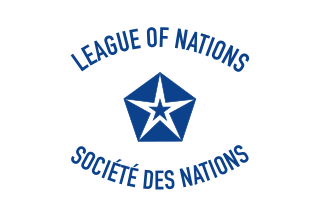
The League of Nations was the first worldwide intergovernmental organisation whose principal mission was to maintain world peace. It was founded on 10 January 1920 by the Paris Peace Conference that ended the First World War. The main organization ceased operations on 20 April 1946 but many of its components were relocated into the new United Nations.
The American Civil Liberties Union (ACLU) is founded.

The American Civil Liberties Union (ACLU) is a nonprofit organization founded in 1920 "to defend and preserve the individual rights and liberties guaranteed to every person in this country by the Constitution and laws of the United States". The ACLU works through litigation and lobbying, and has over 1,800,000 members as of July 2018, with an annual budget of over $300 million. Affiliates of the ACLU are active in all 50 states, the District of Columbia, and Puerto Rico. The ACLU provides legal assistance in cases where it considers civil liberties to be at risk. Legal support from the ACLU can take the form of direct legal representation or preparation of amicus curiae briefs expressing legal arguments when another law firm is already providing representation.
Silvertown explosion: A blast at a munitions factory in London kills 73 and injures over 400. The resulting fire causes over £2,000,000 worth of damage.

The Silvertown explosion occurred in Silvertown in West Ham, Essex on Friday, 19 January 1917 at 6:52 pm. The blast occurred at a munitions factory that was manufacturing explosives for Britain's First World War military effort. Approximately 50 long tons of trinitrotoluene (TNT) exploded, killing 73 people and injuring 400 more, as well as causing substantial damage in the local area. This was not the first, last, largest, or the most deadly explosion at a munitions facility in Britain during the war; an explosion at Faversham involving 200 long tons of TNT killed 105 in 1916, and the National Shell Filling Factory, Chilwell, exploded in 1918, killing 137.
World War I: The first major attack of the German bombing campaign against Britain took place when Zeppelins bombed several towns in Norfolk.

World War I or the First World War, often abbreviated as WWI or WW1, and referred to by some Anglophone authors as the "Great War" or the "War to End All Wars", was a global conflict which lasted from 1914 to 1918, and is considered one of the deadliest conflicts in history. Belligerents included much of Europe, the Russian Empire, the United States, and the Ottoman Empire, with fighting occurring throughout Europe, the Middle East, Africa, the Pacific, and parts of Asia. An estimated 9 million soldiers were killed in combat, plus another 23 million wounded, while 5 million civilians died as a result of military action, hunger, and disease. Millions more died in genocides within the Ottoman Empire and in the 1918 influenza pandemic, which was exacerbated by the movement of combatants during the war.
The best-known German air campaign of the First World War was carried out against Britain. After several attacks by seaplanes, the main campaign began in January 1915 with airships. Until the Armistice the Marine-Fliegerabteilung and Die Fliegertruppen des deutschen Kaiserreiches mounted over fifty bombing raids. The raids were generally referred to in Britain as Zeppelin raids but Schütte-Lanz airships also being used. The Zeppelin Company was much better known and was responsible for producing the majority of the airships.

A Zeppelin is a type of rigid airship named after the German inventor Count Ferdinand von Zeppelin who pioneered rigid airship development at the beginning of the 20th century. Zeppelin's notions were first formulated in 1874 and developed in detail in 1893. They were patented in Germany in 1895 and in the United States in 1899. After the outstanding success of the Zeppelin design, the word zeppelin came to be commonly used to refer to all rigid airships. Zeppelins were first flown commercially in 1910 by Deutsche Luftschiffahrts-AG (DELAG), the world's first airline in revenue service. By mid-1914, DELAG had carried over 10,000 fare-paying passengers on over 1,500 flights. During World War I, the German military made extensive use of Zeppelins as bombers and as scouts, resulting in over 500 deaths in bombing raids in Britain.

Norfolk is a ceremonial and non-metropolitan county in East Anglia in England. It borders Lincolnshire to the north-west, Cambridgeshire to the west and south-west, and Suffolk to the south. Its northern and eastern boundaries are the North Sea, with The Wash to the north-west. The county town is the city of Norwich. With an area of 2,074 square miles (5,370 km2) and a population of 859,400, Norfolk is a largely rural county with a population density of 401 per square mile. Of the county's population, 40% live in four major built up areas: Norwich (213,000), Great Yarmouth (63,000), King's Lynn (46,000) and Thetford (25,000).
Georges Claude patents the neon discharge tube for use in advertising.

Georges Claude was a French engineer and inventor. He is noted for his early work on the industrial liquefaction of air, for the invention and commercialization of neon lighting, and for a large experiment on generating energy by pumping cold seawater up from the depths. He has been considered by some to be "the Edison of France". Claude was an active collaborator with the German occupiers of France during the Second World War, for which he was imprisoned in 1945 and stripped of his honors.

A gas-filled tube, also commonly known as a discharge tube or formerly as a Plücker tube, is an arrangement of electrodes in a gas within an insulating, temperature-resistant envelope. Gas-filled tubes exploit phenomena related to electric discharge in gases, and operate by ionizing the gas with an applied voltage sufficient to cause electrical conduction by the underlying phenomena of the Townsend discharge. A gas-discharge lamp is an electric light using a gas-filled tube; these include fluorescent lamps, metal-halide lamps, sodium-vapor lamps, and neon lights. Specialized gas-filled tubes such as krytrons, thyratrons, and ignitrons are used as switching devices in electric devices.
German strategic bombing during World War I: German zeppelins bomb the towns of Great Yarmouth and King's Lynn in the United Kingdom killing at least 20 people, in the first major aerial bombardment of a civilian target.
The best-known German air campaign of the First World War was carried out against Britain. After several attacks by seaplanes, the main campaign began in January 1915 with airships. Until the Armistice the Marine-Fliegerabteilung and Die Fliegertruppen des deutschen Kaiserreiches mounted over fifty bombing raids. The raids were generally referred to in Britain as Zeppelin raids but Schütte-Lanz airships also being used. The Zeppelin Company was much better known and was responsible for producing the majority of the airships.

Great Yarmouth, often called Yarmouth, is a seaside town and unparished area in, and the main administrative centre of, the Borough of Great Yarmouth in Norfolk, England; it straddles the River Yare and is located 20 miles (30 km) east of Norwich. A population of 38,693 in the 2011 Census made it Norfolk's third most populous. Its fishing industry, mainly for herring, shrank after the mid-20th century and has all but ended. North Sea oil from the 1960s supplied an oil-rig industry that services offshore natural gas rigs; more recently, offshore wind power and other renewable energy industries have ensued.
King's Lynn, known until 1537 as Bishop's Lynn and colloquially as Lynn, is a port and market town in the borough of King's Lynn and West Norfolk in the county of Norfolk, England. It is located 98 miles (158 km) north of London, 36 miles (58 km) north-east of Peterborough, 44 miles (71 km) north-north-east of Cambridge and 44 miles (71 km) west of Norwich.
Queen Victoria, Queen of the United Kingdom, stricken with paralysis. She dies three days later at the age of 81.

Victoria was Queen of the United Kingdom of Great Britain and Ireland from 20 June 1837 until her death in 1901. Her reign of 63 years and seven months was longer than that of any previous British monarch and is known as the Victorian era. It was a period of industrial, political, scientific, and military change within the United Kingdom, and was marked by a great expansion of the British Empire. In 1876, the British Parliament voted to grant her the additional title of Empress of India.
Anglo-Egyptian Sudan is formed.

Anglo-Egyptian Sudan was a condominium of the United Kingdom and Egypt in the Sudans region of northern Africa between 1899 and 1956, corresponding mostly to the territory of present-day Sudan and South Sudan. Legally, sovereignty and administration were shared between both Egypt and the United Kingdom, but in practice the structure of the condominium ensured effective British control over Sudan, with Egypt having limited, local power influence in reality. In the mean time, Egypt itself fell under increasing British influence. Following the Egyptian Revolution of 1952, Egypt pushed for an end to the condominium, and the independence of Sudan. By agreement between Egypt and the United Kingdom in 1953, Sudan was granted independence as the Republic of the Sudan on 1 January 1956. In 2011, the south of Sudan itself became independent as the Republic of South Sudan.
The first electric lighting system employing overhead wires, built by Thomas Edison, begins service at Roselle, New Jersey.

Thomas Alva Edison was an American inventor and businessman. He developed many devices in fields such as electric power generation, mass communication, sound recording, and motion pictures. These inventions, which include the phonograph, the motion picture camera, and early versions of the electric light bulb, have had a widespread impact on the modern industrialized world. He was one of the first inventors to apply the principles of organized science and teamwork to the process of invention, working with many researchers and employees. He established the first industrial research laboratory.

Roselle is a borough located in Union County in the state of New Jersey, United States. As of the 2010 United States Census, the borough's population was 21,085, reflecting a decline of 189 (−0.9%) from the 21,274 counted in the 2000 Census, which had in turn increased by 960 (+4.7%) from the 20,314 counted in the 1990 Census.
Franco-Prussian War: In the Siege of Paris, Prussia wins the Battle of St. Quentin. Meanwhile, the French attempt to break the siege in the Battle of Buzenval will end unsuccessfully the following day.
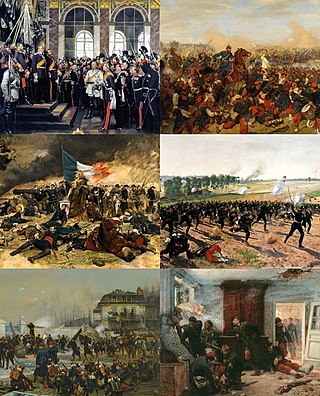
The Franco-Prussian War or Franco-German War, often referred to in France as the War of 1870, was a conflict between the Second French Empire and the North German Confederation led by the Kingdom of Prussia. Lasting from 19 July 1870 to 28 January 1871, the conflict was caused primarily by France's determination to reassert its dominant position in continental Europe, which appeared in question following the decisive Prussian victory over Austria in 1866. According to some historians, Prussian chancellor Otto von Bismarck deliberately provoked the French into declaring war on Prussia in order to induce four independent southern German states—Baden, Württemberg, Bavaria and Hesse-Darmstadt—to join the North German Confederation; other historians contend that Bismarck exploited the circumstances as they unfolded. All agree that Bismarck recognized the potential for new German alliances, given the situation as a whole.

The siege of Paris took place from 19 September 1870 to 28 January 1871 and ended in the capture of the city by forces of the various states of the North German Confederation, led by the Kingdom of Prussia. The siege was the culmination of the Franco-Prussian War, which saw the Second French Empire attempt to reassert its dominance over continental Europe by declaring war on the North German Confederation. The Prussian-dominated North German Confederation had recently emerged victorious in the Austro-Prussian War of 1866, which led to the questioning of France’s status as the dominant power of continental Europe. With a declaration of war by the French parliament on 16 July 1870, Imperial France soon faced a series of defeats at German hands over the following months, leading to the Battle of Sedan, which, on 2 September 1870, saw a decisive defeat of French forces and the capture of the French emperor, Napoleon III.
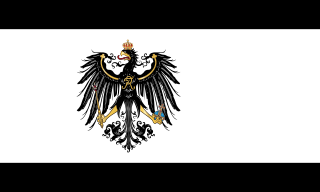
The Kingdom of Prussia was a German kingdom that constituted the state of Prussia between 1701 and 1918. It was the driving force behind the unification of Germany in 1871 and was the leading state of the German Empire until its dissolution in 1918. Although it took its name from the region called Prussia, it was based in the Margraviate of Brandenburg. Its capital was Berlin.

The Battle of St. Quentin was a battle of the Franco-Prussian War in which Prussian forces defeated French attempts to relieve the besieged city of Paris.
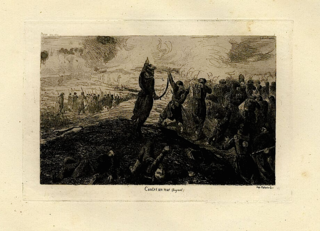
The (Second) Battle of Buzenval, also known as the Battle of Mont Valérien, was part of the siege of Paris during the Franco-Prussian War. On 19 January 1871, the day after Wilhelm I was proclaimed German Emperor, Louis Jules Trochu attacked the Germans west of Paris in Buzenval Park. The attackers seized the town of Saint-Cloud, coming close to the new Emperor's headquarters at Versailles. Trochu was able to maintain his position at St. Cloud for most of the day, but the failure of other French forces to hold their positions left him isolated and the Crown Prince's army was able to force Trochu's salient back into Paris by the next day. This was the last effort to break out of Paris. Trochu turned over command of the Paris defenses to Joseph Vinoy who surrendered the city ten days later.
American Civil War: Battle of Mill Springs: The Confederacy suffers its first significant defeat in the conflict.

The Battle of Mill Springs, also known as the Battle of Fishing Creek in Confederate terminology, and the Battle of Logan's Cross Roads in Union terminology, was fought in Wayne and Pulaski counties, near current Nancy, Kentucky, on January 19, 1862, as part of the American Civil War. The Union victory concluded an early Confederate offensive campaign in south central Kentucky.

The Confederate States of America (CSA), commonly referred to as the Confederate States, the Confederacy, or "the South", was an unrecognized breakaway republic in North America that existed from February 8, 1861, to May 9, 1865. The Confederacy comprised U.S. states that declared secession and warred against the United States during the American Civil War. Eleven U.S. states, nicknamed Dixie, declared secession and formed the main part of the CSA. They were South Carolina, Mississippi, Florida, Alabama, Georgia, Louisiana, Texas, Virginia, Arkansas, Tennessee, and North Carolina. Kentucky, and Missouri also had declarations of secession and full representation in the Confederate Congress during their Union army occupation.
American Civil War: Georgia joins South Carolina, Florida, Mississippi, and Alabama in declaring secession from the United States.

The American Civil War was a civil war in the United States. It was fought between the Union and the Confederacy, the latter formed by states that had seceded. The central cause of the war was the dispute over whether slavery would be permitted to expand into the western territories, leading to more slave states, or be prevented from doing so, which was widely believed would place slavery on a course of ultimate extinction.

Georgia is a state in the Southeastern region of the United States, bordered to the north by Tennessee and North Carolina; to the northeast by South Carolina; to the southeast by the Atlantic Ocean; to the south by Florida; and to the west by Alabama. Georgia is the 24th-largest state in area and 8th most populous of the 50 United States. Its 2020 population was 10,711,908, according to the U.S. Census Bureau. Atlanta, a "beta(+)" global city, is both the state's capital and its largest city. The Atlanta metropolitan area, with a population of more than 6 million people in 2020, is the 9th most populous metropolitan area in the United States and contains about 57% of Georgia's entire population.

South Carolina is a state in the coastal Southeastern region of the United States. It is bordered to the north by North Carolina, to the southeast by the Atlantic Ocean, and to the southwest by Georgia across the Savannah River. South Carolina is the 40th most extensive and 23rd most populous U.S. state with a recorded population of 5,124,712 according to the 2020 census. In 2019, its GDP was $213.45 billion. South Carolina is composed of 46 counties. The capital is Columbia with a population of 137,300 in 2020; while its largest city is Charleston with a 2020 population of 150,277. The Greenville–Spartanburg-Anderson metropolitan area is the most populous in the state, with a 2020 population estimate of 1,455,892.

Florida is a state located in the Southeastern region of the United States. Florida is bordered to the west by the Gulf of Mexico, to the northwest by Alabama, to the north by Georgia, to the east by the Bahamas and Atlantic Ocean, and to the south by the Straits of Florida and Cuba; it is the only state that borders both the Gulf of Mexico and the Atlantic Ocean. Spanning 65,758 square miles (170,310 km2), Florida ranks 22nd in area among the 50 states, and with a population of over 21 million, is the third-most populous. The state capital is Tallahassee and the most populous city is Jacksonville. The Miami metropolitan area, with a population of almost 6.2 million, is the most populous urban area in Florida and the ninth-most populous in the United States; other urban conurbations with over one million people are Tampa Bay, Orlando, and Jacksonville.

Mississippi is a state in the Southeastern region of the United States, bordered to the north by Tennessee; to the east by Alabama; to the south by the Gulf of Mexico; to the southwest by Louisiana; and to the northwest by Arkansas. Mississippi's western boundary is largely defined by the Mississippi River. Mississippi is the 32nd largest and 35th-most populous of the 50 U.S. states and has the lowest per-capita income in the United States. Jackson is both the state's capital and largest city. Greater Jackson is the state's most populous metropolitan area, with a population of 591,978 in 2020.

Alabama is a state in the Southeastern region of the United States, bordered by Tennessee to the north; Georgia to the east; Florida and the Gulf of Mexico to the south; and Mississippi to the west. Alabama is the 30th largest by area and the 24th-most populous of the U.S. states. With a total of 1,500 miles (2,400 km) of inland waterways, Alabama has among the most of any state.
Secession is the withdrawal of a group from a larger entity, especially a political entity, but also from any organization, union or military alliance. Some of the most famous and significant secessions have been: the former Soviet republics leaving the Soviet Union after its dissolution, Texas leaving Mexico during the Texas Revolution, Biafra leaving Nigeria and returning after losing the Nigerian Civil War, and Ireland leaving the United Kingdom. Threats of secession can be a strategy for achieving more limited goals. It is, therefore, a process, which commences once a group proclaims the act of secession. A secession attempt might be violent or peaceful, but the goal is the creation of a new state or entity independent from the group or territory it seceded from.
Giuseppe Verdi's opera Il trovatore receives its premiere performance in Rome.

Giuseppe Fortunino Francesco Verdi was an Italian composer best known for his operas. He was born near Busseto to a provincial family of moderate means, receiving a musical education with the help of a local patron. Verdi came to dominate the Italian opera scene after the era of Gioachino Rossini, Gaetano Donizetti, and Vincenzo Bellini, whose works significantly influenced him.
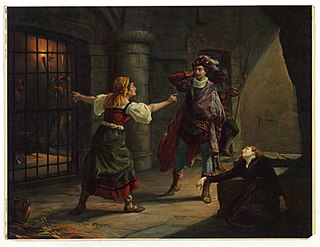
Il trovatore is an opera in four acts by Giuseppe Verdi to an Italian libretto largely written by Salvadore Cammarano, based on the play El trovador (1836) by Antonio García Gutiérrez. It was García Gutiérrez's most successful play, one which Verdi scholar Julian Budden describes as "a high flown, sprawling melodrama flamboyantly defiant of the Aristotelian unities, packed with all manner of fantastic and bizarre incident."
The British East India Company captures Aden.

The East India Company (EIC) was an English, and later British, joint-stock company founded in 1600 and dissolved in 1874. It was formed to trade in the Indian Ocean region, initially with the East Indies, and later with East Asia. The company seized control of large parts of the Indian subcontinent, colonised parts of Southeast Asia and Hong Kong. At its peak, the company was the largest corporation in the world. The EIC had its own armed forces in the form of the company's three Presidency armies, totalling about 260,000 soldiers, twice the size of the British army at the time. The operations of the company had a profound effect on the global balance of trade, almost single-handedly reversing the trend of eastward drain of Western bullion, seen since Roman times.

Aden is a city, and since 2015, the temporary capital of Yemen, near the eastern approach to the Red Sea, some 170 km (110 mi) east of the strait Bab-el-Mandeb. Its population is approximately 800,000 people. Aden's natural harbour lies in the crater of a dormant volcano, which now forms a peninsula joined to the mainland by a low isthmus. This harbour, Front Bay, was first used by the ancient Kingdom of Awsan between the 7th to 5th centuries BC. The modern harbour is on the other side of the peninsula. Aden gets its name from the Gulf of Aden.
Johann Wolfgang von Goethe's Faust: The First Part of the Tragedy receives its premiere performance.

Johann Wolfgang von Goethe was a German poet, playwright, novelist, scientist, statesman, theatre director, and critic. His works include plays, poetry, literature, and aesthetic criticism, as well as treatises on botany, anatomy, and colour. He is widely regarded as the greatest and most influential writer in the German language, his work having a profound and wide-ranging influence on Western literary, political, and philosophical thought from the late 18th century to the present day.

Faust: A Tragedy is the first part of the tragic play Faust by Johann Wolfgang von Goethe, and is considered by many as the greatest work of German literature. It was first published in 1808.
An army of 5,423 soldiers, led by General José de San Martín, crosses the Andes from Argentina to liberate Chile and then Peru.

José Francisco de San Martín y Matorras, known simply as José de San Martín or the Liberator of Argentina, Chile and Peru, was an Argentine general and the primary leader of the southern and central parts of South America's successful struggle for independence from the Spanish Empire who served as the Protector of Peru. Born in Yapeyú, Corrientes, in modern-day Argentina, he left the Viceroyalty of the Río de la Plata at the early age of seven to study in Málaga, Spain.

The Crossing of the Andes was one of the most important feats in the Argentine and Chilean wars of independence, in which a combined army of Argentine soldiers and Chilean exiles invaded Chile crossing the Andes range separating Argentina from Chile, leading to Chile's liberation from Spanish rule.

Argentina, officially the Argentine Republic, is a country in the southern half of South America. Argentina covers an area of 2,780,400 km2 (1,073,500 sq mi), making it the second-largest country in South America after Brazil, the fourth-largest country in the Americas, and the eighth-largest country in the world. It shares the bulk of the Southern Cone with Chile to the west, and is also bordered by Bolivia and Paraguay to the north, Brazil to the northeast, Uruguay and the South Atlantic Ocean to the east, and the Drake Passage to the south. Argentina is a federal state subdivided into twenty-three provinces, and one autonomous city, which is the federal capital and largest city of the nation, Buenos Aires. The provinces and the capital have their own constitutions, but exist under a federal system. Argentina claims sovereignty over the Falkland Islands, South Georgia and the South Sandwich Islands, and a part of Antarctica.

Chile, officially the Republic of Chile, is a country in the western part of South America. It is the southernmost country in the world, and the closest to Antarctica, occupying a long and narrow strip of land between the Andes to the east and the Pacific Ocean to the west. Chile covers an area of 756,096 square kilometers (291,930 sq mi), with a population of 17.5 million as of 2017. It shares land borders with Peru to the north, Bolivia to the north-east, Argentina to the east, and the Drake Passage in the far south. Chile also controls the Pacific islands of Juan Fernández, Isla Salas y Gómez, Desventuradas, and Easter Island in Oceania. It also claims about 1,250,000 square kilometers (480,000 sq mi) of Antarctica under the Chilean Antarctic Territory. The country's capital and largest city is Santiago, and its national language is Spanish.

Peru, officially the Republic of Peru, is a country in western South America. It is bordered in the north by Ecuador and Colombia, in the east by Brazil, in the southeast by Bolivia, in the south by Chile, and in the south and west by the Pacific Ocean. Peru is a megadiverse country with habitats ranging from the arid plains of the Pacific coastal region in the west to the peaks of the Andes mountains extending from the north to the southeast of the country to the tropical Amazon basin rainforest in the east with the Amazon River. Peru has a population of 32 million, and its capital and largest city is Lima. At 1.28 million km2, Peru is the 19th largest country in the world, and the third largest in South America.
The Batavian Republic was established the day after William V fled the Dutch Republic as a result of the Batavian Revolution in Amsterdam.

The Batavian Republic was the successor state to the Republic of the Seven United Netherlands. It was proclaimed on 19 January 1795 and ended on 5 June 1806, with the accession of Louis Bonaparte to the Dutch throne. From October 1801 onward, it was known as the Batavian Commonwealth. Both names refer to the Germanic tribe of the Batavi, representing both the Dutch ancestry and their ancient quest for liberty in their nationalistic lore.

William V was a prince of Orange and the last stadtholder of the Dutch Republic. He went into exile to London in 1795. He was furthermore ruler of the Principality of Orange-Nassau until his death in 1806. In that capacity he was succeeded by his son William.

The United Provinces of the Netherlands, also known as the (Seven) United Provinces, officially as the Republic of the Seven United Netherlands, and commonly referred to in historiography as the Dutch Republic, was a federal republic that existed from 1579, during the Dutch Revolt, to 1795. It was a predecessor state of the Netherlands and the first fully independent Dutch nation state.

The Batavian Revolution in Amsterdam refers to the transfer of power in the city of Amsterdam on 18 January 1795 to a Revolutionary Committee of the new Batavian Republic. The same day the stadtholder of the Dutch Republic, William V, Prince of Orange fled the country. Amsterdam was the first city that declared itself in the Batavian Revolution that brought about the Batavian Republic.
The Batavian Republic is proclaimed in the Netherlands, replacing the Dutch Republic.

The Batavian Republic was the successor state to the Republic of the Seven United Netherlands. It was proclaimed on 19 January 1795 and ended on 5 June 1806, with the accession of Louis Bonaparte to the Dutch throne. From October 1801 onward, it was known as the Batavian Commonwealth. Both names refer to the Germanic tribe of the Batavi, representing both the Dutch ancestry and their ancient quest for liberty in their nationalistic lore.

The United Provinces of the Netherlands, also known as the (Seven) United Provinces, officially as the Republic of the Seven United Netherlands, and commonly referred to in historiography as the Dutch Republic, was a federal republic that existed from 1579, during the Dutch Revolt, to 1795. It was a predecessor state of the Netherlands and the first fully independent Dutch nation state.
The second group of ships of the First Fleet arrive at Botany Bay.

The First Fleet was a fleet of 11 ships that brought the first European and African settlers to Australia. It was made up of two Royal Navy vessels, three store ships and six convict transports. On 13 May 1787 the fleet under the command of Captain Arthur Phillip, with over 1400 people, left from Portsmouth, England and took a journey of over 24,000 kilometres (15,000 mi) and over 250 days to eventually arrive in Botany Bay, New South Wales, where a penal colony would become the first European settlement in Australia.

Botany Bay, an open oceanic embayment, is located in Sydney, New South Wales, Australia, 13 km (8 mi) south of the Sydney central business district. Its source is the confluence of the Georges River at Taren Point and the Cooks River at Kyeemagh, which flows 10 km (6 mi) to the east before meeting its mouth at the Tasman Sea, midpoint between the suburbs of La Perouse and Kurnell. The northern headland of the entrance to the bay from the Tasman Sea is Cape Banks and, on the southern side, the outer headland is Cape Solander and the inner headland is Sutherland Point.
John Wilkes is expelled from the British House of Commons for seditious libel.

John Wilkes was an English radical journalist and politician, as well as a magistrate, essayist and soldier. He was first elected a Member of Parliament in 1757. In the Middlesex election dispute, he fought for the right of his voters—rather than the House of Commons—to determine their representatives. In 1768, angry protests of his supporters were suppressed in the Massacre of St George's Fields. In 1771, he was instrumental in obliging the government to concede the right of printers to publish verbatim accounts of parliamentary debates. In 1776, he introduced the first bill for parliamentary reform in the British Parliament.

The House of Commons is the lower house of the Parliament of the United Kingdom. Like the upper house, the House of Lords, it meets in the Palace of Westminster in London, England.
Sedition and seditious libel were criminal offences under English common law, and are still criminal offences in Canada. Sedition is overt conduct, such as speech and organization, that is deemed by the legal authority to tend toward insurrection against the established order: if the statement is in writing or some other permanent form it is seditious libel. Libel denotes a printed form of communication such as writing or drawing.
Bolle Willum Luxdorph records in his diary that a mail bomb, possibly the world's first, has severely injured the Danish Colonel Poulsen, residing at Børglum Abbey.

Bolle Willum Luxdorph was a Danish government official, historian, writer and book collector.

A letter bomb, also called parcel bomb, mail bomb, package bomb, note bomb, message bomb, gift bomb, present bomb, delivery bomb, surprise bomb, postal bomb, or post bomb, is an explosive device sent via the postal service, and designed with the intention to injure or kill the recipient when opened. They have been used in terrorist attacks such as those of the Unabomber. Some countries have agencies whose duties include the interdiction of letter bombs and the investigation of letter bombings. The letter bomb may have been in use for nearly as long as the common postal service has been in existence, as far back as 1764.

Børglum Abbey was an important Premonstratensian abbey of medieval Denmark, located in Børglum parish, in the commune of Hjørring, approximately five kilometers east of Løkken in north central Jutland from the 12th century until reformation.
Hämeenlinna (Swedish: Tavastehus) was granted privileges after it separated from the Vanaja parish as its own city in Tavastia.

Hämeenlinna is a city and municipality of about 68,000 inhabitants in the heart of the historical province of Tavastia and the modern province of Kanta-Häme in the south of Finland. Hämeenlinna is the oldest inland city of Finland and was one of the most important Finnish cities until the 19th century. It remains an important regional center. The medieval Häme Castle is located in the city.

Swedish is a North Germanic language spoken predominantly in Sweden and in parts of Finland. It has at least 10 million native speakers, the fourth most spoken Germanic language and the first among any other of its type in the Nordic countries overall.

A privilege is a certain entitlement to immunity granted by the state or another authority to a restricted group, either by birth or on a conditional basis. Land-titles and taxi medallions are examples of transferable privilege – they can be revoked in certain circumstances. In modern democratic states, a privilege is conditional and granted only after birth. By contrast, a right is an inherent, irrevocable entitlement held by all citizens or all human beings from the moment of birth. Various Examples of old common law privilege still exist – to title deeds, for example. Etymologically, a privilege (privilegium) means a "private law", or rule relating to a specific individual or institution.
Vanaja is a former municipality of Finland. It was located in Tavastia Proper about 100 kilometres (60 mi) north of Helsinki. It is also speculated that it might have been the name for an Iron Age and early Middle Ages settlement found opposite to the Häme Castle.
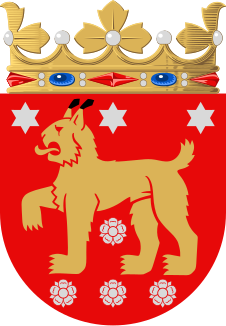
Tavastia is a historical province in the south of Finland. It borders Finland Proper, Satakunta, Ostrobothnia, Savonia and Uusimaa.
San Agustin Church in Manila, the oldest extant church in the Philippines, was completed.

San Agustin Church, also known as the Archdiocesan Shrine of Our Lady of Consolation and Cincture or the Immaculate Conception Parish, is a Roman Catholic church under the auspices of the Order of St. Augustine located inside the historic walled city of Intramuros in Manila. Completed in 1607, it is the oldest stone church in the country.

Manila, known officially as the City of Manila, is the capital of the Philippines, and its second-most populous city. It is highly urbanized and as of 2019 was the world's most densely populated city proper. Manila is considered to be a global city and rated as an Alpha – City by Globalization and World Cities Research Network (GaWC). It was the first chartered city in the country, designated as such by the Philippine Commission Act 183 of July 31, 1901. It became autonomous with the passage of Republic Act No. 409, "The Revised Charter of the City of Manila", on June 18, 1949. Manila is considered to be part of the world's original set of global cities because its commercial networks were the first to extend across the Pacific Ocean and connect Asia with the Spanish Americas through the galleon trade; when this was accomplished, it marked the first time in world history that an uninterrupted chain of trade routes circling the planet had been established. It is among the most populous and fastest growing cities in Southeast Asia.
San Agustin Church in Manila is officially completed; it is the oldest church still standing in the Philippines.

San Agustin Church, also known as the Archdiocesan Shrine of Our Lady of Consolation and Cincture or the Immaculate Conception Parish, is a Roman Catholic church under the auspices of the Order of St. Augustine located inside the historic walled city of Intramuros in Manila. Completed in 1607, it is the oldest stone church in the country.

The Philippines, officially the Republic of the Philippines, is an archipelagic country in Southeast Asia. It is situated in the western Pacific Ocean and consists of around 7,641 islands that are broadly categorized under three main geographical divisions from north to south: Luzon, Visayas, and Mindanao. The Philippines is bounded by the South China Sea to the west, the Philippine Sea to the east, and the Celebes Sea to the southwest. It shares maritime borders with Taiwan to the north, Japan to the northeast, Palau to the east and southeast, Indonesia to the south, Malaysia to the southwest, Vietnam to the west, and China to the northwest. The Philippines covers an area of 300,000 km2 (120,000 sq mi) and, as of 2021, it had a population of around 109 million people, making it the world's thirteenth-most populous country. The Philippines has diverse ethnicities and cultures throughout its islands. Manila is the country's capital, while the largest city is Quezon City; both lie within the urban area of Metro Manila.
Sten Sture the Younger, the Regent of Sweden, is mortally wounded at the Battle of Bogesund and dies on February 3.

Sten Sture the Younger, was a Swedish nobleman who served as the regent of Sweden, during the era of the Kalmar Union.

This is a list of Swedish kings, queens, regents and viceroys of the Kalmar Union.

The Battle of Bogesund was an important conflict in the campaign of Christian II to gain power over Sweden. In 1520, Christian's army of mercenaries had landed in Sweden, seeking to consolidate Christian's powers over Sweden within the Kalmar Union and to unseat the rebellious Swedish viceroy Sten Sture the Younger. On the ice of lake Åsunden near Bogesund, Christian's army led by Otte Krumpen was intercepted by a force led by Sten Sture.
War of the League of Cambrai: Troops led by Pope Julius II captured Mirandola after a brief siege.

The War of the League of Cambrai, sometimes known as the War of the Holy League and several other names, was fought from February 1508 to December 1516 as part of the Italian Wars of 1494–1559. The main participants of the war, who fought for its entire duration, were France, the Papal States, and the Republic of Venice; they were joined at various times by nearly every significant power in Western Europe, including Spain, the Holy Roman Empire, England, the Duchy of Milan, the Republic of Florence, the Duchy of Ferrara, and the Swiss.

Pope Julius II was head of the Catholic Church and ruler of the Papal States from 1503 to his death in February 1513. Nicknamed the Warrior Pope or the Fearsome Pope, he chose his papal name not in honour of Pope Julius I but in emulation of Julius Caesar. One of the most powerful and influential popes, Julius II was a central figure of the High Renaissance and left a significant cultural and political legacy. As a result of his policies during the Italian Wars, the Papal States remained independent and centralized, and the office of the papacy continued to be crucial, diplomatically and politically, during the entirety of the 16th century in Italy and Europe.

The siege of Mirandola occurred in January 1511 as a part of Pope Julius II's campaign to keep France from dominating northern Italy during the War of the League of Cambrai. At that time Mirandola was the capital of the Duchy of Mirandola in the Italian region of Emilia. The siege was conducted by Julius after he had broken away from the League of Cambrai and entered into a treaty with Venice.
The Italian Duchy of Mirandola surrenders to the Pope.

The siege of Mirandola occurred in January 1511 as a part of Pope Julius II's campaign to keep France from dominating northern Italy during the War of the League of Cambrai. At that time Mirandola was the capital of the Duchy of Mirandola in the Italian region of Emilia. The siege was conducted by Julius after he had broken away from the League of Cambrai and entered into a treaty with Venice.
Hundred Years' War: The Siege of Rouen ended with English troops capturing the city from Norman French forces.

The Hundred Years' War was a series of armed conflicts between the kingdoms of England and France during the Late Middle Ages. It originated from disputed claims to the French throne between the English House of Plantagenet and the French royal House of Valois. Over time, the war grew into a broader power struggle involving factions from across Western Europe, fuelled by emerging nationalism on both sides.

The siege of Rouen was a major event in the Hundred Years' War, where English forces loyal to Henry V captured Rouen, the capital of Normandy, from the Norman French.
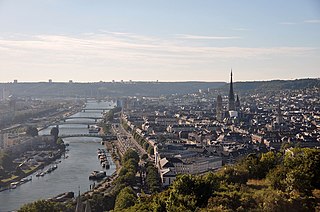
Rouen is a city on the River Seine in northern France. It is the prefecture of the region of Normandy and the department of Seine-Maritime. Formerly one of the largest and most prosperous cities of medieval Europe, the population of the metropolitan area is 702,945 (2018). People from Rouen are known as Rouennais.
Hundred Years' War: Rouen surrenders to Henry V of England, completing his reconquest of Normandy.

The Hundred Years' War was a series of armed conflicts between the kingdoms of England and France during the Late Middle Ages. It originated from disputed claims to the French throne between the English House of Plantagenet and the French royal House of Valois. Over time, the war grew into a broader power struggle involving factions from across Western Europe, fuelled by emerging nationalism on both sides.

Rouen is a city on the River Seine in northern France. It is the prefecture of the region of Normandy and the department of Seine-Maritime. Formerly one of the largest and most prosperous cities of medieval Europe, the population of the metropolitan area is 702,945 (2018). People from Rouen are known as Rouennais.
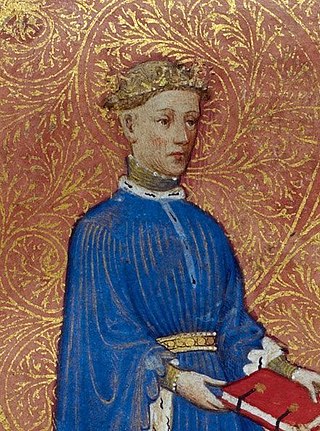
Henry V, also called Henry of Monmouth, was King of England and Lord of Ireland from 1413 until his death in 1422. Despite his relatively short reign, Henry's outstanding military successes in the Hundred Years' War against France made England one of the strongest military powers in Europe. Immortalised in Shakespeare's "Henriad" plays, Henry is known and celebrated as one of the greatest warrior-kings of medieval England.

Normandy is a geographical and cultural region in Northwestern Europe, roughly coextensive with the historical Duchy of Normandy.
Conquest of the Western Turks: Kuchean forces surrendered after a siege, establishing Tang control over the northern Tarim Basin in present-day Xinjiang, China.

The conquest of the Western Turks, known as the Western Tujue in Chinese sources, was a military campaign in 655–657 led by the Tang dynasty generals Su Dingfang and Cheng Zhijie against the Western Turkic Khaganate ruled by Ashina Helu. The Tang campaigns against the Western Turks began in 640 with the annexation of the Tarim Basin oasis state Gaochang, an ally of the Western Turks. Several of the oasis states had once been vassals of the Tang dynasty, but switched their allegiance to the Western Turks when they grew suspicious of the military ambitions of the Tang. Tang expansion into Central Asia continued with the conquest of Karasahr in 644 and Kucha in 648. Cheng Zhijie commanded the first foray against the West Tujue, and in 657 Su Dingfang commanded the main army dispatched against the Western Turks, while the Turkic generals Ashina Mishe and Ashina Buzhen led the side divisions. The Tang troops were reinforced by cavalry supplied by the Uyghurs, a tribe that had been allied with the Tang since their support for the Uyghur revolt against the Xueyantuo. Su Dingfang's army defeated Helu at the battle of Irtysh River.

Kucha, or Kuche, was an ancient Buddhist kingdom located on the branch of the Silk Road that ran along the northern edge of what is now the Taklamakan Desert in the Tarim Basin and south of the Muzat River.

The Tang campaign against Kucha was a military campaign led by the Tang dynasty general Ashina She'er against the Tarim Basin oasis state of Kucha in Xinjiang, which was aligned with the Western Turkic Khaganate. The campaign began in 648 and ended on 19 January 649, after the surrender of the Kuchan forces following a forty-day siege in Aksu. Kuchean soldiers tried to recapture the kingdom with the assistance of the Western Turkic Khaganate, but were defeated by the Tang army.

The Tang dynasty, or Tang Empire, was an imperial dynasty of China that ruled from 618 to 907 AD, with an interregnum between 690 and 705. It was preceded by the Sui dynasty and followed by the Five Dynasties and Ten Kingdoms period. Historians generally regard the Tang as a high point in Chinese civilization, and a golden age of cosmopolitan culture. Tang territory, acquired through the military campaigns of its early rulers, rivaled that of the Han dynasty.

The Tarim Basin is an endorheic basin in Northwest China occupying an area of about 888,000 km2 (343,000 sq mi) and one of the largest basins in Northwest China. Located in China's Xinjiang region, it is sometimes used synonymously to refer to the southern half of the province, or Nanjiang, as opposed to the northern half of the province known as Dzungaria or Beijiang. Its northern boundary is the Tian Shan mountain range and its southern boundary is the Kunlun Mountains on the edge of the Tibetan Plateau. The Taklamakan Desert dominates much of the basin. The historical Uyghur name for the Tarim Basin is Altishahr, which means 'six cities' in Uyghur.

Xinjiang, aka East Turkistan, officially the Xinjiang Uygur Autonomous Region (XUAR), is an autonomous region of the People's Republic of China (PRC), located in the northwest of the country at the crossroads of Central Asia and East Asia. Being the largest province-level division of China by area and the 8th-largest country subdivision in the world, Xinjiang spans over 1.6 million square kilometres (620,000 sq mi) and has about 25 million inhabitants. Xinjiang borders the countries of Mongolia, Russia, Kazakhstan, Kyrgyzstan, Tajikistan, Afghanistan, Pakistan and India. The rugged Karakoram, Kunlun and Tian Shan mountain ranges occupy much of Xinjiang's borders, as well as its western and southern regions. The Aksai Chin and Trans-Karakoram Tract regions, both administered by China, are claimed by India. Xinjiang also borders the Tibet Autonomous Region and the provinces of Gansu and Qinghai. The most well-known route of the historic Silk Road ran through the territory from the east to its northwestern border.
Conquest of Kucha: The forces of Kucha surrender after a forty-day siege led by Tang dynasty general Ashina She'er, establishing Tang control over the northern Tarim Basin in Xinjiang.

The Tang campaign against Kucha was a military campaign led by the Tang dynasty general Ashina She'er against the Tarim Basin oasis state of Kucha in Xinjiang, which was aligned with the Western Turkic Khaganate. The campaign began in 648 and ended on 19 January 649, after the surrender of the Kuchan forces following a forty-day siege in Aksu. Kuchean soldiers tried to recapture the kingdom with the assistance of the Western Turkic Khaganate, but were defeated by the Tang army.

A siege is a military blockade of a city, or fortress, with the intent of conquering by attrition, or a well-prepared assault. This derives from Latin: sedere, lit. 'to sit'. Siege warfare is a form of constant, low-intensity conflict characterized by one party holding a strong, static, defensive position. Consequently, an opportunity for negotiation between combatants is common, as proximity and fluctuating advantage can encourage diplomacy. The art of conducting and resisting sieges is called siege warfare, siegecraft, or poliorcetics.

The Tang dynasty, or Tang Empire, was an imperial dynasty of China that ruled from 618 to 907 AD, with an interregnum between 690 and 705. It was preceded by the Sui dynasty and followed by the Five Dynasties and Ten Kingdoms period. Historians generally regard the Tang as a high point in Chinese civilization, and a golden age of cosmopolitan culture. Tang territory, acquired through the military campaigns of its early rulers, rivaled that of the Han dynasty.

The Tarim Basin is an endorheic basin in Northwest China occupying an area of about 888,000 km2 (343,000 sq mi) and one of the largest basins in Northwest China. Located in China's Xinjiang region, it is sometimes used synonymously to refer to the southern half of the province, or Nanjiang, as opposed to the northern half of the province known as Dzungaria or Beijiang. Its northern boundary is the Tian Shan mountain range and its southern boundary is the Kunlun Mountains on the edge of the Tibetan Plateau. The Taklamakan Desert dominates much of the basin. The historical Uyghur name for the Tarim Basin is Altishahr, which means 'six cities' in Uyghur.

Xinjiang, aka East Turkistan, officially the Xinjiang Uygur Autonomous Region (XUAR), is an autonomous region of the People's Republic of China (PRC), located in the northwest of the country at the crossroads of Central Asia and East Asia. Being the largest province-level division of China by area and the 8th-largest country subdivision in the world, Xinjiang spans over 1.6 million square kilometres (620,000 sq mi) and has about 25 million inhabitants. Xinjiang borders the countries of Mongolia, Russia, Kazakhstan, Kyrgyzstan, Tajikistan, Afghanistan, Pakistan and India. The rugged Karakoram, Kunlun and Tian Shan mountain ranges occupy much of Xinjiang's borders, as well as its western and southern regions. The Aksai Chin and Trans-Karakoram Tract regions, both administered by China, are claimed by India. Xinjiang also borders the Tibet Autonomous Region and the provinces of Gansu and Qinghai. The most well-known route of the historic Silk Road ran through the territory from the east to its northwestern border.
Emperor Gratian elevates Flavius Theodosius at Sirmium to Augustus, and gives him authority over all the eastern provinces of the Roman Empire.

Gratian was emperor of the Western Roman Empire from 367 to 383. The eldest son of Valentinian I, Gratian accompanied his father on several campaigns along the Rhine and Danube frontiers and was raised to the rank of Augustus in 367. Upon the death of Valentinian in 375, Gratian took over government of the west while his half-brother Valentinian II was also acclaimed emperor in Pannonia. Gratian governed the western provinces of the empire, while his uncle Valens was already the emperor over the east.
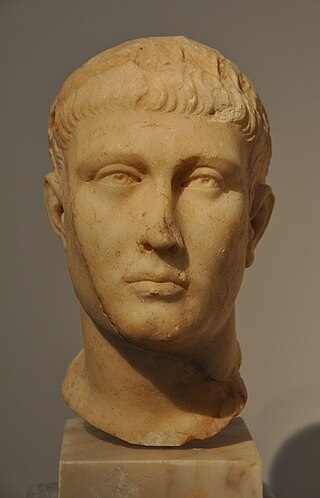
Theodosius I, also called Theodosius the Great, was Roman emperor from 379 to 395. During his reign, he succeeded in a crucial war against the Goths, as well as in two civil wars, and was instrumental in establishing the creed of Nicaea as the doctrine for Christianity. Theodosius was the last emperor to rule the entire Roman Empire before its administration was permanently split between two separate courts.

Sirmium was a city in the Roman province of Pannonia, located on the Sava river, on the site of modern Sremska Mitrovica in the Vojvodina autonomous provice of Serbia. First mentioned in the 4th century BC and originally inhabited by Illyrians and Celts, it was conquered by the Romans in the 1st century BC and subsequently became the capital of the Roman province of Pannonia Inferior. In 294 AD, Sirmium was proclaimed one of four capitals of the Roman Empire. It was also the capital of the Praetorian prefecture of Illyricum and of Pannonia Secunda. The site is protected as an archaeological Site of Exceptional Importance. The modern region of Syrmia was named after the city.

Augustus was an ancient Roman title given as both name and title to Gaius Julius Caesar Octavianus, Rome's first Emperor. On his death, it became an official title of his successor, and was so used by Roman emperors thereafter. The feminine form Augusta was used for Roman empresses and other female members of the Imperial family. The masculine and feminine forms originated in the time of the Roman Republic, in connection with things considered divine or sacred in traditional Roman religion. Their use as titles for major and minor Roman deities of the Empire associated the Imperial system and Imperial family with traditional Roman virtues and the divine will, and may be considered a feature of the Roman Imperial cult.

The Roman Empire was the post-Republican period of ancient Rome. As a polity, it included large territorial holdings around the Mediterranean Sea in Europe, North Africa, and Western Asia, and was ruled by emperors. From the accession of Caesar Augustus as the first Roman emperor to the military anarchy of the 3rd century, it was a principate with Italia as the metropole of its provinces and the city of Rome as its sole capital. The Empire was later ruled by multiple emperors who shared control over the Western Roman Empire and the Eastern Roman Empire. The city of Rome remained the nominal capital of both parts until AD 476 when the imperial insignia were sent to Constantinople following the capture of the Western capital of Ravenna by the Germanic barbarians. The adoption of Christianity as the state church of the Roman Empire in AD 380 and the fall of the Western Roman Empire to Germanic kings conventionally marks the end of classical antiquity and the beginning of the Middle Ages. Because of these events, along with the gradual Hellenization of the Eastern Roman Empire, historians distinguish the medieval Roman Empire that remained in the Eastern provinces as the Byzantine Empire.
Miguel Ferrer, American actor (b. 1955) deaths

Miguel José Ferrer was an American actor. His breakthrough role was as Bob Morton in the 1987 film RoboCop. Other film roles include Quigley in Blank Check (1994), Harbinger in Hot Shots! Part Deux (1993), Shan Yu in Mulan (1998), Eduardo Ruiz in Traffic (2000) and Vice President Rodriguez in Iron Man 3 (2013). Ferrer's notable television roles include FBI Agent Albert Rosenfield on Twin Peaks, Tarakudo on Jackie Chan Adventures (2000–2005), Dr. Garret Macy on Crossing Jordan (2001–2007) and NCIS Assistant Director Owen Granger on NCIS: Los Angeles (2012–2017).
Richard Levins, American ecologist and geneticist (b. 1930) deaths

Richard "Dick" Levins was an ex-tropical farmer turned ecologist, a population geneticist, biomathematician, mathematical ecologist, and philosopher of science who researched diversity in human populations. Until his death, Levins was a university professor at the Harvard T.H. Chan School of Public Health and a long-time political activist. He was best known for his work on evolution and complexity in changing environments and on metapopulations.
Ettore Scola, Italian director and screenwriter (b. 1931) deaths
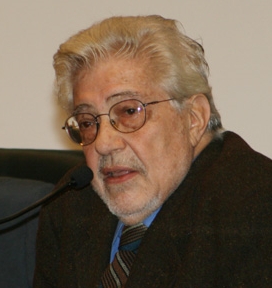
Ettore Scola was an Italian screenwriter and film director. He received a Golden Globe for Best Foreign Film in 1978 for his film A Special Day and over the course of his film career was nominated for five Academy Awards for Best Foreign Language Film.
Sheila Sim (Lady Attenborough), English actress (b. 1922) deaths
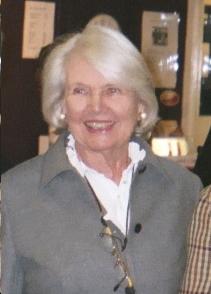
Sheila Beryl Grant Sim, Baroness Attenborough was an English film and theatre actress. She was also the wife of the actor, director and peer Richard Attenborough.
Justin Capră, Romanian engineer and academic (b. 1933) deaths

Virgilius Justin Capră was a Romanian engineer and inventor.
Michel Guimond, Canadian lawyer and politician (b. 1953) deaths
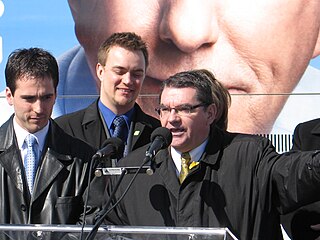
Michel Guimond was a Canadian politician. From 1987 to 1993 he served as a city councillor in Boischatel, Quebec. After this, he ran in the 1993 federal election for the Bloc Québécois. He was elected into the House of Commons of Canada as the member from Beauport—Montmorency—Orléans. He was re-elected in the 1997 and 2000 federal elections and in the 2004 federal election. In the 2004 and 2008 elections, he won in Montmorency—Charlevoix—Haute-Côte-Nord before being defeated in the 2011 federal election. A lawyer, he has served as the Bloc critic of Parliamentary Affairs, Transport and to the Auditor General. He then served as whip and deputy whip of the Bloc Québécois, and was also the vice-chair of the Standing Committee on Procedure and House Affairs.
Ward Swingle, American-French singer-songwriter and conductor (b. 1927) deaths
Ward Lamar Swingle was an American vocalist and jazz musician who founded The Swingle Singers in France in 1962.
Azaria Alon, Ukrainian-Israeli environmentalist, co-founded the Society for the Protection of Nature in Israel (b. 1918) deaths
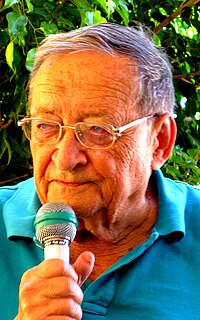
Azaria Alon was an Israel Prize-winning environmentalist, and a co-founder of the Society for the Protection of Nature in Israel (SPNI).

Society for the Protection of Nature in Israel, or SPNI, is an Israeli non-profit environmental organization working to preserve plants, animals, and natural environments that represent bio-diversity, by protecting the lands and waters needed for their survival, and is Israel's oldest and largest conservation organization.
Christopher Chataway, English runner, journalist, and politician (b. 1931) deaths

Sir Christopher John Chataway was a British middle- and long-distance runner, television news broadcaster, and Conservative politician.
Taihō Kōki, Japanese sumo wrestler, the 48th Yokozuna (b. 1940) deaths

Taihō Kōki was a Japanese professional sumo wrestler. He became the 48th yokozuna in 1961 at the age of 21, the youngest ever at the time.

Makuuchi (幕内), or makunouchi (幕の内), is the top division of the six divisions of professional sumo. Its size is fixed at 42 wrestlers (rikishi), ordered into five ranks according to their ability as defined by their performance in previous tournaments.
Stan Musial, American baseball player and manager (b. 1920) deaths

Stanley Frank Musial, nicknamed "Stan the Man", was an American baseball outfielder and first baseman. Widely considered to be one of the greatest and most consistent hitters in baseball history, Musial spent 22 seasons in Major League Baseball (MLB), playing for the St. Louis Cardinals, from 1941 to 1944 and from 1946 to 1963, before becoming a first-ballot inductee into the Baseball Hall of Fame in 1969. He batted .331 over the course of his career and set National League (NL) records for career hits (3,630), runs batted in (1,951), games played (3,026), at bats (10,972), runs scored (1,949) and doubles (725). His 475 career home runs then ranked second in NL history behind Mel Ott's total of 511. A seven-time batting champion, he was named the National League's (NL) Most Valuable Player (MVP) three times and was a member of three World Series championship teams. He also shares the major league record for the most All-Star Games played (24) with Hank Aaron and Willie Mays.
Frank Pooler, American conductor and composer (b. 1926) deaths
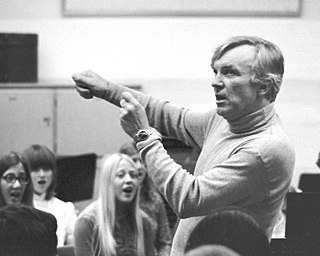
Frank Mairich Pooler was an American choirmaster, and former Director of Choral Studies at California State University, Long Beach. He also collaborated with pop music group The Carpenters.
Earl Weaver, American baseball player and manager (b. 1930) deaths

Earl Sidney Weaver was an American professional baseball manager, author, and television broadcaster. After playing in minor league baseball, he retired without playing in Major League Baseball (MLB). He became a minor league manager, and then managed in MLB for 17 years with the Baltimore Orioles. Weaver's style of managing was summed up in the quote: "pitching, defense, and the three-run homer." He did not believe in placing emphasis on "small ball" tactics such as stolen bases, hit and run plays, or sacrifice bunts. He was inducted into the Baseball Hall of Fame in 1996.
Toktamış Ateş, Turkish academician, political commentator, columnist and writer (b. 1944) deaths

Toktamış Ateş was a Turkish academician, political commentator, columnist and writer. He was professor of political sciences at Istanbul University.
Peter Åslin, Swedish ice hockey player (b. 1962) deaths
Peter Karl Åslin was a Swedish national team ice hockey goaltender.
Sarah Burke, Canadian skier (b. 1982) deaths

Sarah Jean Burke was a Canadian freestyle skier who was a pioneer of the superpipe event. She was a five-time Winter X Games gold medallist, and won the world championship in the halfpipe in 2005. She successfully lobbied the International Olympic Committee (IOC) to have the event added to the Olympic program for the 2014 Winter Olympics. She was considered a medal favourite in the event. Burke died following a training accident in Utah in 2012.
Winston Riley, Jamaican singer-songwriter and producer (b. 1943) deaths
Winston Riley was a Jamaican singer, songwriter and record producer. The Jamaica Gleaner notes he was one of the most successful reggae producers.
Rudi van Dantzig, Dutch ballet dancer and choreographer (b. 1933) deaths

Rudi van Dantzig was a Dutch choreographer, company director, and writer. He was a pivotal figure in the rise to world renown of Dutch ballet in the latter half of the twentieth century.
Bill McLaren, Scottish rugby player and sportscaster (b. 1923) deaths
William Pollock McLaren was a Scottish rugby union commentator, teacher, journalist and one time rugby player. Known as 'the voice of rugby', he retired from commentating in 2002. Renowned throughout the sport, his enthusiasm and memorable turn of phrase endeared him to many.
Suzanne Pleshette, American actress (b. 1937) deaths

Suzanne Pleshette was an American theatre, film, television, and voice actress. Pleshette started her career in the theatre and began appearing in films in the late 1950s and later appeared in prominent films such as Rome Adventure (1962), Alfred Hitchcock's The Birds (1963), and Spirited Away (2001). She later appeared in various television productions, often in guest roles, and played Emily Hartley on The Bob Newhart Show from 1972 until 1978, receiving several Emmy Award nominations for her work.
John Stewart, American singer-songwriter and guitarist (b. 1939) deaths
John Coburn Stewart was an American songwriter and singer. He is known for his contributions to the American folk music movement of the 1960s while with the Kingston Trio (1961–1967) and as a popular music songwriter of the Monkees' No. 1 hit "Daydream Believer" and his own No. 5 hit "Gold" during a solo career spanning 40 years that included almost four dozen albums and more than 600 recorded songs.
Don Wittman, Canadian sportscaster (b. 1936) deaths

Donald Rae Wittman was a Canadian sportscaster.
Hrant Dink, Turkish-Armenian journalist and activist (b. 1954) deaths

Hrant Dink was a Turkish-Armenian intellectual, editor-in-chief of Agos, journalist and columnist.
Denny Doherty, Canadian singer-songwriter (b. 1940) deaths
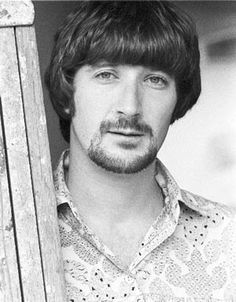
Dennis Gerrard Stephen Doherty was a Canadian singer. He was a founding member of the 1960s musical group the Mamas and the Papas for which he was inducted into the Rock and Roll Hall of Fame in 1998.
Murat Nasyrov, Russian singer-songwriter (b. 1969) deaths
Murat Ismailovich Nasyrov was a Russian pop singer of Uyghur ethnicity.
Anthony Franciosa, American actor (b. 1928) deaths

Anthony George Franciosa was an American actor most often billed as Tony Franciosa at the height of his career. He began his career on stage and made a breakthrough portraying the brother of the drug addict in the play A Hatful of Rain, which earned him a nomination for the Tony Award for Best Featured Actor in a Play. He reprised his role in its subsequent film adaptation, for which he won the 1957 Venice Film Festival Award for Best Actor, and was nominated for the Academy Award for Best Actor in a Leading Role.
Wilson Pickett, American singer-songwriter (b. 1941) deaths

Wilson Pickett was an American singer and songwriter.
K. Sello Duiker, South African author and screenwriter (b. 1974) deaths
Kabelo Sello Duiker was a South African novelist. His debut novel, Thirteen Cents, won the 2001 Commonwealth Writers Prize for Best First Book, Africa Region. His second novel, The Quiet Violence of Dreams, won the 2002 Herman Charles Bosman Prize. He also worked in advertising and as a screenwriter.
Harry E. Claiborne, American lawyer and judge (b. 1917) deaths
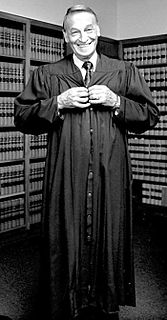
Harry Eugene Claiborne was a United States district judge of the United States District Court for the District of Nevada from 1978 until his impeachment and removal in 1986. Appointed by President Jimmy Carter in 1978, Claiborne was only the fifth person in United States history to be removed from office through impeachment by the United States Congress and the first since Halsted Ritter in 1936.
David Hookes, Australian cricketer and coach (b. 1955) deaths
David William Hookes grew up in Torrensville and was a South Australian and Australian cricketer, broadcaster and coach of the Victorian cricket team. An aggressive left-handed batsman, Hookes usually batted in the middle order. His international career got off to a sensational start in the Centenary Test at Melbourne in 1977 when he hit England captain Tony Greig for five consecutive boundaries, but a combination of circumstances ensured that he never became a regular in the Australian team. He wrote in his autobiography, "I suspect history will judge me harshly as a batsman because of my modest record in 23 Tests and I can't complain about that".
Milton Flores, Honduran footballer (b. 1974) deaths
Milton Javier Flores Miranda was a Honduran football player.
Françoise Giroud, French journalist, screenwriter, and politician, French Minister of Culture (b. 1916) deaths

Françoise Giroud, born Lea France Gourdji was a French journalist, screenwriter, writer, and politician.

The Ministry of Culture is the ministry of the Government of France in charge of national museums and the monuments historiques. Its goal is to maintain the French identity through the promotion and protection of the arts on national soil and abroad. Its budget is mainly dedicated to the management of the Archives Nationales and the regional Maisons de la culture.
Vavá, Brazilian footballer and manager (b. 1934) deaths

Edvaldo Izidio Neto, commonly known as Vavá, was a Brazilian footballer who is widely considered one of the best strikers of his generation. His nickname was "Peito de Aço". He played as a main striker for Sport Club do Recife, C.R. Vasco da Gama, S.E. Palmeiras and the Brazil national football team.
Amatu'l-Bahá Rúhíyyih Khánum, a Baháʼí Faith Hand of the Cause of God and wife of Shoghi Effendi (b. 1910) deaths

Rúhíyyih Rabbání, born as Mary Sutherland Maxwell and best known by the title Amatu'l-Bahá Rúhíyyih Khánum, was the wife of Shoghi Effendi, the Guardian of the Baháʼí Faith, from 1937 to 1957. In 1952, she was elevated to the office of Hand of the Cause of God, for which she attended to issues related to the expansion and protection of the Baháʼí Faith, and served an important role in the transfer of authority from 1957 to 1963.

The Baháʼí Faith is a relatively new religion teaching the essential worth of all religions and the unity of all people. Established by Baháʼu'lláh in the 19th century, it initially developed in Iran and parts of the Middle East, where it has faced ongoing persecution since its inception. The religion is estimated to have 5–8 million adherents, known as Baháʼís, spread throughout most of the world's countries and territories.
Hand of the Cause was a title given to prominent early members of the Baháʼí Faith, appointed for life by the religion's founders. Of the fifty individuals given the title, the last living was ʻAlí-Muhammad Varqá who died in 2007. Hands of the Cause played a significant role in propagating the religion, and protecting it from schism.

Shoghí Effendi (; 1 March 1897 – 4 November 1957) was the grandson and successor of ʻAbdu'l-Bahá, appointed to the role of Guardian of the Baháʼí Faith from 1921 until his death in 1957. He created a series of teaching plans that oversaw the expansion of the faith to many new countries, and also translated many of the writings of the Baháʼí central figures. He was succeeded by an interim arrangement of the Hands of the Cause until the election of the Universal House of Justice in 1963.
Bettino Craxi, Italian lawyer and politician, 45th Prime Minister of Italy (b. 1934) deaths

Benedetto "Bettino" Craxi was an Italian politician, leader of the Italian Socialist Party (PSI) from 1976 to 1993, and the 45th prime minister of Italy from 1983 to 1987. He was the first PSI member to become prime minister and the third from a socialist party to hold the office. He led the third-longest government in the Italian Republic and he is considered one of the most powerful and prominent politicians of the First Italian Republic.

The prime minister, officially the president of the Council of Ministers, of Italy is the head of government of the Italian Republic. The office of president of the Council of Ministers is established by articles 92–96 of the Constitution of Italy; the president of the Council of Ministers is appointed by the president of the Republic and must have the confidence of the Parliament to stay in office.
Hedy Lamarr, Austrian-American actress, singer, and mathematician (b. 1914) deaths

Hedy Lamarr was an Austrian-born American film actress and inventor. A film star during Hollywood's golden age, Lamarr has been described as one of the greatest movie actresses of all time.
Ivan Francescato, Italian rugby player (b. 1967) deaths
Ivan Francescato was an Italian rugby union player.
Carl Perkins, American singer-songwriter and guitarist (b. 1932) deaths
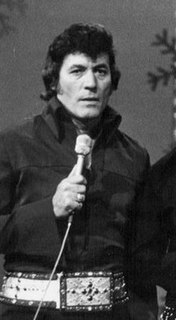
Carl Lee Perkins was an American guitarist, singer and songwriter. A rockabilly great and pioneer of rock and roll, he began his recording career at the Sun Studio, in Memphis, beginning in 1954. Among his best-known songs are "Blue Suede Shoes", "Honey Don't", "Matchbox" and "Everybody's Trying to Be My Baby".
James Dickey, American poet and novelist (b. 1923) deaths
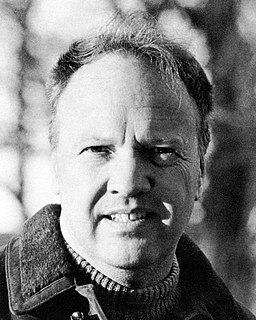
James Lafayette Dickey was an American poet and novelist. He was appointed the eighteenth United States Poet Laureate in 1966. He also received the Order of the South award.
Don Simpson, American actor, producer, and screenwriter (b. 1943) deaths
Donald Clarence Simpson was an American film producer, screenwriter, and actor. Simpson and his producing partner Jerry Bruckheimer produced hit films such as Flashdance (1983), Beverly Hills Cop (1984), Top Gun (1986), and The Rock (1996). At the time of his death in 1996, Simpson's films grossed $3 billion worldwide.
Gene MacLellan, Canadian singer-songwriter (b. 1938) deaths
Gene MacLellan was a Canadian singer-songwriter from Prince Edward Island. Among his compositions were "Snowbird", made famous by Anne Murray, "Put Your Hand in the Hand", "The Call", "Pages of Time" and "Thorn in My Shoe". Elvis Presley, Lynn Anderson, Loretta Lynn, Joan Baez, and Bing Crosby were among the many artists who recorded MacLellan's songs.
Matthias Ginter, German footballer births

Matthias Lukas Ginter is a German professional footballer who plays as a centre-back for Bundesliga club SC Freiburg and the Germany national team.
Alfie Mawson, English footballer births

Alfie Robert John Mawson is an English professional footballer who plays as a centre back for EFL League One club Wycombe Wanderers.
Erick Torres Padilla, Mexican footballer births

Erick Estéfano Torres Padilla is a Mexican professional footballer who plays as a striker, most recently playing for USL Championship club Orange County. He is nicknamed "El Cubo" due to his large, cubical shaped head.
Shawn Johnson, American gymnast births

Shawn Johnson East is an American former artistic gymnast. She is the 2008 Olympic balance beam gold medalist and team, all-around and floor exercise silver medalist. Johnson is also the 2007 all-around World Champion, and a five-time Pan American Games gold medalist, winning the team titles in 2007 and 2011, as well as titles in the all-around, uneven bars, and balance beam in 2007.
Mac Miller, American rapper (d. 2018) births
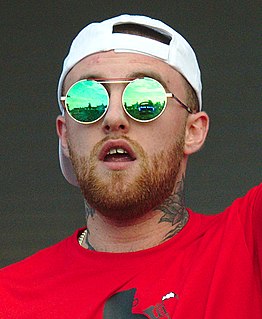
Malcolm James McCormick, known professionally as Mac Miller, was an American rapper and record producer. Miller began his career in Pittsburgh's hip hop scene in 2007, at the age of fifteen. In 2010, he signed a record deal with independent label Rostrum Records and released his breakthrough mixtapes K.I.D.S. (2010) and Best Day Ever (2011). Miller's debut studio album, Blue Slide Park (2011), became the first independently distributed debut album to top the US Billboard 200 since 1995.
Petra Martić, Croatian tennis player births

Petra Martić is a Croatian professional tennis player. She has a career-high singles ranking of world No. 14, achieved in January 2020. Martić has won two singles titles on the WTA Tour, one singles and one doubles tournament on WTA Challenger Tour, plus four singles and five doubles titles on the ITF Circuit.
Erin Sanders, American actress births
Erin Sanders is an American actress. She is known for her roles as Quinn Pensky on Zoey 101, Camille Roberts on Big Time Rush, and for portraying Eden Baldwin on The Young and the Restless in 2008. She appeared as Chris on ABC Family's Melissa and Joey and starred in the film Guilty at 17, which premiered on Lifetime.
Marcel Chaput, Canadian biochemist and journalist (b. 1918) deaths
Marcel Chaput was a scientist and a militant for the independence of Quebec from Canada. Along with some 20 other people including André D'Allemagne and Jacques Bellemare, he was a founding member of the Rassemblement pour l'indépendance nationale (RIN).
Tatiana Búa, Argentine tennis player births

Tatiana Búa is a former professional tennis player from Argentina.
Bhagwan Shree Rajneesh, Indian guru and mystic (b. 1931) deaths

Rajneesh, also known as Acharya Rajneesh, Bhagwan Shree Rajneesh, and later as Osho, was an Indian godman, mystic, and founder of the Rajneesh movement. He was viewed as a controversial new religious movement leader during his life. He rejected institutional religions, insisting that spiritual experience could not be organized into any one system of religious dogma. As a guru, he taught a form of meditation called dynamic meditation and advocated that his followers live fully but without attachment, a rejection of traditional ascetic practices. In advocating a more progressive attitude to human sexuality he caused controversy in India during the late 1960s and became known as "the sex guru".
Alberto Semprini, English pianist, composer, and conductor (b. 1908) deaths

Alberto Fernando Riccardo Semprini, known as Alberto Semprini, or by his stage name Semprini, was an English pianist, composer and conductor, known for his appearances on the BBC, mainly on radio.
Herbert Wehner, German politician, sixth Minister of Intra-German Relations (b. 1906) deaths

Herbert Richard Wehner was a German politician. A former member of the Communist Party, he joined the Social Democrats (SPD) after World War II. He served as Federal Minister of Intra-German Relations from 1966 to 1969 and thereafter as chairman of the SPD parliamentary group in the Bundestag until 1983.

The Federal Minister of Intra-German Relations was a federal cabinet minister of the Federal Republic of Germany. The office was created under the title of Federal Minister of All-German Affairs in 1949, being also in charge of the German lands east of the Oder–Neisse line which had been put under Polish or Soviet administration. In 1951, the first Minister of All-German Affairs Jakob Kaiser openly raised claim to even greater territories including Austria, parts of Switzerland, the Saar area and Alsace-Lorraine.
JaVale McGee, American basketball player births

JaVale Lindy McGee is an American professional basketball player who plays for the Dallas Mavericks of the National Basketball Association (NBA). He played college basketball for the Nevada Wolf Pack. He was selected 18th overall by the Washington Wizards in the 2008 NBA draft. He is a three-time NBA champion, having won consecutive titles with the Golden State Warriors in 2017 and 2018 before winning a third title with the Los Angeles Lakers in 2020. The son of Olympic gold medalist Pamela McGee, he won a gold medal with the 2020 U.S. Olympic team.
Tyler Breeze, Canadian wrestler births

Matthew Clement is a Canadian professional wrestler and professional wrestling trainer. He is currently signed to WWE under the ring name Tyler Breeze as a trainer at the WWE Performance Center.
Edgar Manucharyan, Armenian footballer births

Edgar Manucharyan is a former Armenian football player who played as a forward.
Lawrence Kohlberg, American psychologist and academic (b. 1927) deaths
Lawrence Kohlberg was an American psychologist best known for his theory of stages of moral development.
Claudio Marchisio, Italian footballer births

Claudio Marchisio is an Italian former professional footballer who played as a midfielder.
Oleksandr Miroshnychenko, Ukrainian footballer births
Oleksandr Miroshnychenko is a retired Ukrainian professional footballer. He played as a midfielder.
Moussa Sow, Senegalese footballer births

Moussa Sow is a professional footballer who plays as a forward. Born in France, he represented Senegal at international level, scoring 18 goals in 50 appearances. He was known for his bicycle kick goals and emotional reactions such as crying when he failed to score, or when the team has lost.
Jake Allen, American football player births
Jjathus Illimski "Jake" Allen is a former American football wide receiver. He was signed by the Green Bay Packers of the National Football League as an undrafted free agent in 2008. He played college football at Mississippi College. He also played for the Cleveland Browns.
Pascal Behrenbruch, German decathlete births

Pascal Behrenbruch is a German decathlete. He is a member of the Eintracht Frankfurt athletics team and placed tenth at the 2012 Olympic Games.
Benny Feilhaber, American soccer player births

Benny Feilhaber is an American soccer coach and former professional player who is currently head coach of MLS Next Pro side Sporting Kansas City II, an affiliate of Sporting Kansas City. A midfielder, Feilhaber played for clubs in Germany, Denmark, England, and the United States. Born in Brazil but raised in the United States, he represented the United States internationally, including at the 2010 FIFA World Cup.
Esteban Guerrieri, Argentinian race car driver births
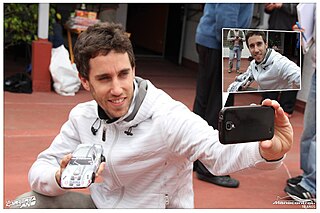
Esteban Guerrieri is an Argentine racing driver.
Rika Ishikawa, Japanese singer and actress births

Rika Ishikawa , is a Japanese actress and model associated with Hello! Project and best known as a former member of the pop group Morning Musume. She was the leader of the Japanese pop idol trio v-u-den until June 2008. She has performed as a solo singer, as a member of the Japanese pop idol group Ongaku Gatas, in the pop duo Hangry & Angry as Angry, and as a current member of Dream Morning Musume.
Elliott Ward, English footballer births

Elliott Leslie Ward is a retired English professional footballer who played as a defender. He played in the Premier League for West Ham United and Norwich City.
Aleksandr Yevgenyevich Nikulin, Russian footballer births
Aleksandr Yevgenyevich Nikulin is a former Russian professional football player.
Fabio Catacchini, Italian footballer births
Fabio Catacchini is an Italian footballer who plays for Tiferno 1919.
Karun Chandhok, Indian race car driver births
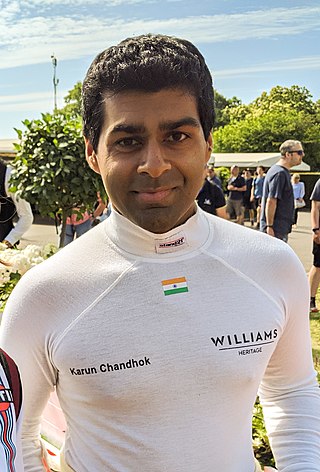
Karun Chandhok is an Indian racing driver and television presenter who last competed in Formula E for Mahindra Racing. Previously, Chandhok has competed for Hispania Racing in Formula One in 2010. Before this, he drove in the GP2 Series for three years, winning two races. In 2013, Chandhok competed in the FIA GT Series for Seyffarth Motorsport.
Jimmy Kébé, Malian footballer births

Jimmy Boubou Kébé is a former professional footballer who played as a right winger. Born in France, he represented Mali at international level.
Thomas Vanek, Austrian ice hockey player births

Thomas Vanek is an Austrian former professional ice hockey left winger. He played fourteen years in the National Hockey League (NHL) for the Buffalo Sabres, New York Islanders, Montreal Canadiens, Minnesota Wild, Detroit Red Wings, Florida Panthers, Vancouver Canucks and Columbus Blue Jackets. Vanek was drafted by the Sabres fifth overall in the 2003 NHL Entry Draft, making him the highest-drafted Austrian in NHL history.
Max Bentley, Canadian ice hockey player and coach (b. 1920) deaths

Maxwell Herbert Lloyd Bentley was a Canadian professional ice hockey player who played for the Chicago Black Hawks, Toronto Maple Leafs, and New York Rangers in the National Hockey League (NHL) as part of a professional and senior career that spanned 20 years. He was the NHL's leading scorer twice in a row, and in 1946 won the Hart Trophy as most valuable player. He played in four All-Star Games and was twice named to a post-season All-Star team.
Hikaru Utada, American-Japanese singer-songwriter and producer births

Hikaru Utada , who is also known by the mononym Utada, is a Japanese-American pop singer, songwriter and producer. By 2010, Utada had become one of the most influential, and best-selling, musical artists in Japan.
Pete Buttigieg, American politician births

Peter Paul Montgomery Buttigieg is an American politician and former military officer who is currently serving as the United States secretary of transportation. A member of the Democratic Party, he was the 32nd mayor of South Bend, Indiana, from 2012 to 2020, which earned him the nickname "Mayor Pete".
Mike Komisarek, American ice hockey player births

Michael Komisarek is an American former professional ice hockey defenseman who spent his career with the Montreal Canadiens, Toronto Maple Leafs and Carolina Hurricanes of the National Hockey League (NHL).
Jodie Sweetin, American actress and singer births

Jodie Lee Ann Sweetin is an American actress and television personality. She is best known for her role as Stephanie Tanner in the ABC comedy series Full House and its Netflix sequel series Fuller House.
Shane Tronc, Australian rugby league player births
Shane Tronc is an Australian former professional rugby league footballer who played for the Brisbane Broncos and the North Queensland Cowboys in the National Rugby League, and the Wakefield Trinity Wildcats in the Super League.
Kim Yoo-suk, South Korean pole vaulter births

Kim Yoo-suk is a South Korean pole vaulter.
Robin tom Rink, German singer-songwriter births

Robin tom Rink, is a German singer-songwriter and poet from Münster.
Elis Regina, Brazilian soprano (b. 1945) deaths

Elis Regina Carvalho Costa, known professionally as Elis Regina, was a Brazilian singer of popular and jazz music. She is also the mother of the singers Maria Rita and Pedro Mariano.
Paolo Bugia, Filipino basketball player births
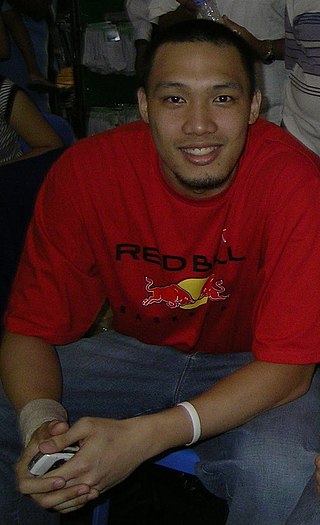
Ramon Paolo Vlajar Bugia is a Filipino former professional basketball player and executive who currently serves as the team manager for the Phoenix Super LPG Fuel Masters of the Philippine Basketball Association (PBA). He was drafted seventeenth overall by the Red Bull Barako in the 2005 PBA draft.
Asier del Horno, Spanish footballer births

Asier del Horno Cosgaya is a Spanish retired footballer who played as a left back.
Lucho González, Argentinian footballer births

Luis Óscar "Lucho" González is an Argentine former professional footballer, currently a manager. A versatile midfielder who was able to play in different positions but mainly in the centre, he was well known for his fierce shot, passing and work rate, being affectionately known as El Comandante due to his leadership skills.
Francesca Woodman, American photographer (b. 1958) deaths

Francesca Stern Woodman was an American photographer best known for her black and white pictures featuring either herself or female models.
Jenson Button, English race car driver births
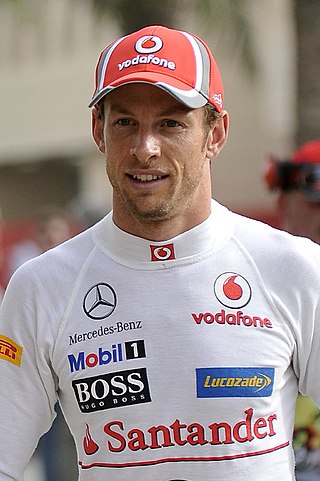
Jenson Alexander Lyons Button is a British racing driver. He won the 2009 Formula One World Championship when he drove for the Brawn GP team. After his F1 career, he became champion of the 2018 season of the Super GT Series alongside Naoki Yamamoto, with whom he shared a Honda racing car at Team Kunimitsu.
Pasha Kovalev, Russian-American dancer and choreographer births
Pavel "Pasha" Kovalev is a Russian professional Latin and ballroom dancer.
Luke Macfarlane, Canadian-American actor and singer births

Thomas Luke Macfarlane is a Canadian-American actor and former singer. He is known for playing Scotty Wandell on the ABC television drama Brothers & Sisters (2006–2011), RAC Agent D'avin Jaqobis on the Space television science fiction series Killjoys (2015–2019) and the romantic lead in a number of Hallmark Channel movies.
Arvydas Macijauskas, Lithuanian basketball player births
Arvydas Macijauskas is a Lithuanian former professional basketball player. Standing at 1.93 m tall, he played at the shooting guard position. He was one of the greatest Lithuanian players of the 2000s, as he won numerous individual awards, as well as club and national team titles.
Michael Vandort, Sri Lankan cricketer births
Michael Graydon Vandort is a Sri Lankan cricketer. He is a left-handed batsman and a right-arm medium-pace bowler. He is one of the tallest batsmen ever to play test cricket and stands at 6 feet 5 inches. He made his Twenty20 debut on 17 August 2004, for Colombo Cricket Club in the 2004 SLC Twenty20 Tournament. He is of Dutch Burgher ancestry and was educated at St. Joseph's College.
William O. Douglas, American lawyer and jurist (b. 1898) deaths

William Orville Douglas was an American jurist who served as an associate justice of the Supreme Court of the United States, who was known for his strong progressive and civil libertarian views, and is often cited as the U.S. Supreme Court's most liberal justice ever. In 1975, Time called Douglas "the most doctrinaire and committed civil libertarian ever to sit on the court." He is the longest-serving associate justice in history, with his term lasting 36 years and 211 days (1939–1975).
Svetlana Khorkina, Russian gymnast and sportscaster births
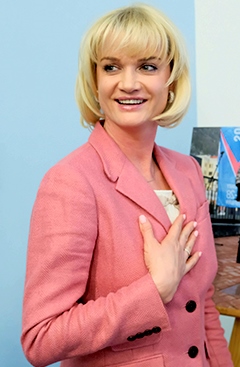
Svetlana Vasilyevna Khorkina is a retired Russian artistic gymnast. She competed at the 1996 Summer Olympics, the 2000 Summer Olympics, and the 2004 Summer Olympics. During her career, Khorkina won seven Olympic medals and twenty World Championship medals. Over time, she medaled in every event at the World Artistic Gymnastics Championships. She was also the first gymnast to win three all-around titles at the World Championships and only the second female artistic gymnast ever, after Nadia Comăneci, to win three European All-Around titles. Khorkina is regarded as one of the most successful female gymnasts of all time.
Josu Sarriegi, Spanish footballer births

Josu Sarriegi Zumarraga is a Spanish former footballer who played as a central defender.
Wiley, English rapper and producer births

Richard Kylea Cowie Jr. MBE, better known by his stage name Wiley, is a British grime MC, rapper, songwriter, DJ and record producer from Bow, London.
Moritz Jahn, German novelist and poet (b. 1884) deaths
Moritz Jahn was a Lower German novelist and an educator. He was also a poet, best known for writing poetry as well such as ballad, lyric, and narratives. Jahn was born in Lilienthal, a suburb in Lower Saxony to a Low German family. He was the member for Nazi Party. He has written notable books with narration such as Frangula and Lucifer. He was active from the 1920s to 1950s.
Benjamin Ayres, Canadian actor, director, and photographer births

Benjamin James Ayres is a Canadian actor best known for his role as Dr. Zach Miller of the CTV series Saving Hope. He also recurred on the Gemini Award–winning HBO Canada series Less Than Kind for which he was nominated for a Canadian Screen Award. His first series regular role was Casper Jesperson, the chain-smoking sex addict who is morbidly obsessed with death, in the critically acclaimed cult hit CBC Television series jPod, based on the Douglas Coupland novel of the same title.
Natale Gonnella, Italian footballer births
Natale Gonnella is an Italian retired footballer.
Tarso Marques, Brazilian race car driver births

Tarso Anibal Santanna Marques is a Brazilian racing driver who competes part-time in the NASCAR Cup Series and the NASCAR Xfinity Series, driving the No. 79 Ford Mustang for Team Stange Racing in both series. He previously participated in 24 Formula One Grands Prix, all driving for the Minardi team, but scored no championship points in three separate seasons and never completed a full year in the sport.
Hidetsugu Yagi, Japanese engineer and academic (b. 1886) deaths

Hidetsugu Yagi was a Japanese electrical engineer from Osaka, Japan. When working at Tohoku Imperial University, he wrote several articles that introduced a new antenna designed by his assistant Shintaro Uda to the English-speaking world.
Natalie Cook, Australian volleyball player births
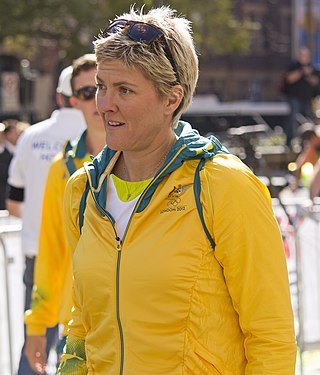
Natalie Louise Cook is an Australian professional beach volleyball player and Olympic gold medallist. She became the first Australian woman to compete at five Olympic Games.
Zdeňka Málková, Czech tennis player births
Zdeňka Málková is a former Czech tennis player who was crowned 1991 ITF World Champion in girls' singles.
Thomas Hart Benton, American painter and educator (b. 1889) deaths
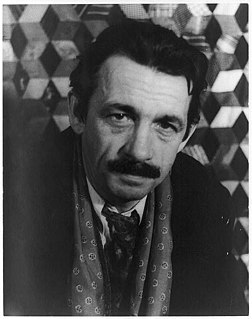
Thomas Hart Benton was an American painter, muralist, and printmaker. Along with Grant Wood and John Steuart Curry, he was at the forefront of the Regionalist art movement. The fluid, sculpted figures in his paintings showed everyday people in scenes of life in the United States.
Dainius Adomaitis, Lithuanian basketball player and coach births

Dainius Adomaitis is a Lithuanian former professional basketball player and the head coach for Alvark Tokyo of Japan's B.League.
Frank Caliendo, American comedian, actor, and screenwriter births
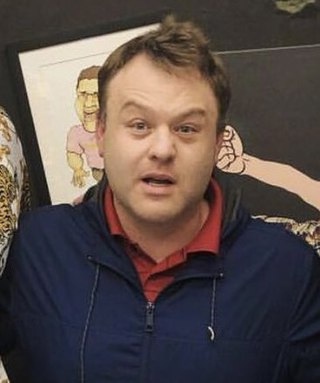
Frank Caliendo Jr. is an American comedian, actor and impressionist, best known for his impersonations on the Fox Network television series MADtv, and as the in-house prognosticator for Fox NFL Sunday. In 2007 and 2008, he performed his impersonations on his own show, Frank TV, which aired on TBS. He is known for his impressions and for his frequent appearances on The Bob & Tom Show. He has released six solo CDs. From 2009 to 2011 he had a show at the Monte Carlo Resort and Casino in Las Vegas.
Ian Laperrière, Canadian ice hockey player and coach births

Ian Laperrière is a Canadian-American former professional ice hockey winger who played 16 seasons in the National Hockey League (NHL) and serves as the current head coach for the Lehigh Valley Phantoms, the American Hockey League affiliate and primary development team for the Philadelphia Flyers of the NHL.
Jaime Moreno, Bolivian footballer and manager births

Jaime Moreno Morales is a Bolivian former professional footballer now serving as Youth Academy Technical Training Coach for D.C. United in Major League Soccer, and as the head coach of D.C. United's U-23 side.
Antero Manninen, Finnish cellist births

Antero Manninen, also known as ‘‘‘Mr. Cool’’’, is a session musician and former band member of Finnish Cello metal quartet Apocalyptica. He was an official member but did not write the music and left in 1999 due to prior commitments, although he has come back to help the band several years ago. His seated, calm composure playing style is at stark contrast with the headbanging antics of the others when playing live. Besides his job in Apocalyptica he used to work as a musician in a Tapiola Sinfonietta Avanti! and Finnish Radio Symphony Orchestra and in the orchestra of the Finnish National Opera. He is also one of the founders of Sibelius-Academy’s Cellosextet (SSS). Antero has also been performing at funerals. Currently he is a member of the Lahti Symphony Orchestra.
Yevgeny Sadovyi, Russian swimmer and coach births
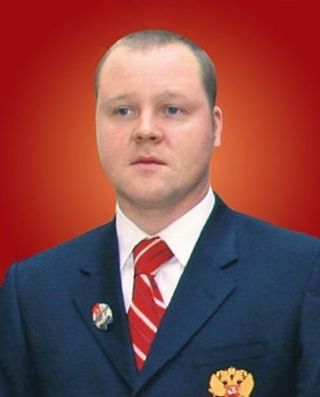
Yevgeny Viktorovich Sadovyi is a retired Russian freestyle swimmer who won three gold medals at the 1992 Summer Olympics at Barcelona and was subsequently chosen by Swimming World magazine as the Male World Swimmer of the Year.
Max Adrian, Irish-English actor (b. 1903) deaths

Max Adrian was an Irish stage, film and television actor and singer. He was a founding member of both the Royal Shakespeare Company and the National Theatre.
Ron Killings, American wrestler and rapper births

Ronnie Aaron Killings is an American professional wrestler and rapper. He is currently signed to WWE, performing on the Raw brand under the ring name R-Truth.
Troy Wilson, Australian footballer and race car driver births

Troy Wilson is a speedway driver and former Australian rules footballer. Wilson played for West Coast in the Australian Football League (AFL), and for West Perth and East Perth in the West Australian Football League (WAFL). He now competes in the V8 and Porsche racing circuits.
Sergei Zjukin, Estonian chess player and coach births
Sergei Zjukin is an Estonian chess player who won the Estonian Chess Championship. He received the FIDE title of International Master (IM) in 2000.
Yoon Hae-young, South Korean actress births

Yoon Hae-young is a South Korean actress. She began acting after passing the SBS Open Auditions in 1993, and has starred in television dramas such as See and See Again (1998), This Is Love (2001), Elephant (2008), The Tale of Janghwa and Hongryeon, Special Task Force MSS (2011) and I Like You (2012).
Michael Rabin, American violinist (b. 1936) deaths
Michael Rabin was an American violinist. He has been described as "one of the most talented and tragic violin virtuosi of his generation". His complete Paganini "24 Caprices" for solo violin are available as a single CD, and an additional 6-CD set contains most of his concerto recordings. Despite his brief career—he died at 35—they remain seminal interpretations.
Phil Nevin, American baseball player births

Phillip Joseph Nevin is an American professional baseball player, coach, and manager. He is the manager for the Los Angeles Angels of Major League Baseball (MLB). He played in MLB for 12 seasons, appearing in 1,217 games played between 1995 and 2006 for the Houston Astros, Detroit Tigers, Anaheim Angels, San Diego Padres, Texas Rangers, Chicago Cubs and Minnesota Twins. He has previously served as a coach in MLB for the San Francisco Giants and New York Yankees.
Shawn Wayans, American actor, producer, and screenwriter births
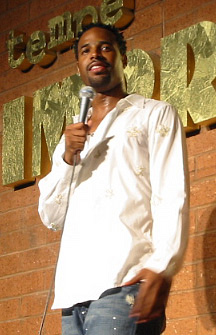
Shawn Mathis Wayans is an American actor, comedian, writer, and producer. Along with his brother Marlon Wayans, he wrote and starred in The WB's sitcom The Wayans Bros.(1995–1999) and in the comedy films Don't Be a Menace (1996), Scary Movie (2000), Scary Movie 2 (2001), White Chicks (2004), Little Man (2006), and Dance Flick (2009). He made his debut on In Living Color (1990–1993).
John Wozniak, American singer-songwriter and guitarist births
John Keith Wozniak is an American musician best known as the lead singer, guitarist and songwriter of the band Marcy Playground.
Steffen Freund, German footballer and manager births
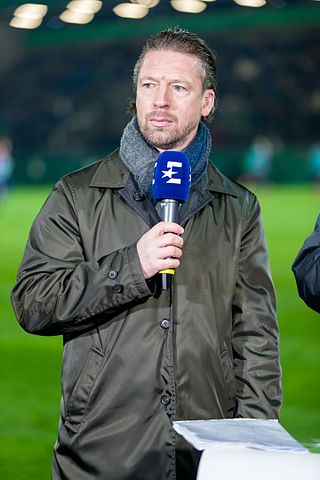
Steffen Freund is a German former professional footballer who played as a defensive midfielder in both the German and English top flights. He was capped 21 times for his country and played a significant part in Germany's UEFA Euro 1996 winning campaign. He is currently working for Tottenham Hotspur.
Kathleen Smet, Belgian triathlete births

Kathleen Smet is an athlete from Belgium who competes in triathlon, becoming European champion in 2000 and 2002. She competes in Olympic and Long Distance Triathlons.
Udo Suzuki, Japanese comedian and singer births
Udo Suzuki , also known as Udo, is a Japanese musician and comedian. He used to be a member of the Japanese band UltraCats and is a member of the owarai group Kyaeen (キャイ~ン).
Edwidge Danticat, Haitian-American novelist and short story writer births

Edwidge Danticat is a Haitian-American novelist and short story writer. Her first novel, Breath, Eyes, Memory, was published in 1994 and went on to become an Oprah's Book Club selection. Danticat has since written or edited several books and has been the recipient of many awards and honors.
Luc Longley, Australian basketball player and coach births
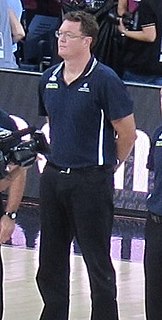
Lucien James Longley is an Australian professional basketball coach and former player. He was the first Australian to play in the National Basketball Association (NBA), where he played for four teams over 10 seasons. Longley most notably played for the Chicago Bulls, with whom he won three championships from 1996 to 1998. He represented Australia as a player at three Olympic Games in 1988, 1992 and 2000, and has worked as an assistant coach for the Australian national basketball team.
Predrag Mijatović, Montenegrin footballer and manager births

Predrag "Peđa" Mijatović is a Montenegrin retired professional footballer who played as a striker. At club level, Mijatović played for six clubs: Budućnost, Partizan, Valencia, Real Madrid, Fiorentina and Levante. Internationally, he played for FR Yugoslavia at the 1998 FIFA World Cup and at the UEFA Euro 2000.
Junior Seau, American football player (d. 2012) births
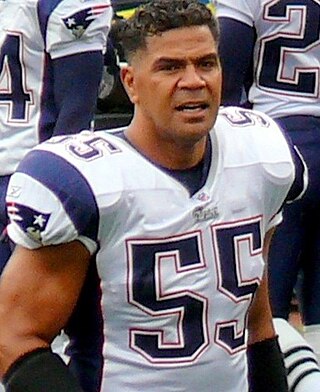
Tiaina Baul "Junior" Seau Jr. was an American professional football player who was a linebacker in the National Football League (NFL), mostly with the San Diego Chargers. Known for his passionate play, he was a six-time first-team All-Pro, 12-time Pro Bowl selection, and named to the NFL 1990s All-Decade Team. He was elected posthumously to the Pro Football Hall of Fame in 2015.
Steve Staunton, Irish footballer and manager births

Stephen Staunton is an Irish football manager, scout and former professional footballer.
David Bartlett, Australian politician, 43rd Premier of Tasmania births

David John Bartlett is an Australian former politician in the state of Tasmania, serving as the 43rd Premier of Tasmania from May 2008 until January 2011. He was a Labor Party member of the Tasmanian House of Assembly seat of Denison from 2004 to 2011 when he retired.

The premier of Tasmania is the head of the executive government in the Australian state of Tasmania. By convention, the leader of the party or political grouping which has majority support in the House of Assembly is invited by the governor of Tasmania to be premier and principal adviser.
Whitfield Crane, American singer-songwriter births

William Whitfield Crane IV is an American singer and founding member and lead vocalist of the rock band Ugly Kid Joe, which was formed in 1989. He has also worked in music outside his band, from performing guest vocals on numerous songs to contributing to musical efforts with other rock bands such as Life of Agony, Another Animal, and Richards/Crane.
Ray Harroun, American race car driver and engineer (b. 1879) deaths

Ray Harroun was an American racecar driver and pioneering constructor most famous for winning the inaugural Indianapolis 500 in 1911. He is the inventer of the open-wheel car
Sylvain Côté, Canadian ice hockey player births
Sylvain Côté is a Canadian former professional ice hockey player who spent 19 seasons in the NHL, the majority of them with the Washington Capitals. He also played for the Hartford Whalers, Toronto Maple Leafs, Chicago Blackhawks and Dallas Stars.
Stefan Edberg, Swedish tennis player and coach births

Stefan Bengt Edberg is a Swedish former professional tennis player. A major proponent of the serve-and-volley style of tennis, he won six Grand Slam singles titles and three Grand Slam men's doubles titles between 1985 and 1996. He is one of only two men in the Open Era to have been ranked world No. 1 in both singles and doubles. He also won the Masters Grand Prix and was a part of the Swedish Davis Cup-winning team four times. In addition, he won four Masters Series titles, four Championship Series titles and the unofficial 1984 Olympic tournament, was ranked in the singles top 10 for ten successive years, and ranked nine years in the top 5.After retirement, Edberg began coaching Roger Federer in January 2014, with this partnership ending in December 2015.
Lena Philipsson, Swedish singer-songwriter births

Maria Magdalena Philipsson, known by her stage name Lena Philipsson, is a Swedish singer, songwriter and media personality. She represented Sweden in the 2004 Eurovision Song Contest, finishing fifth.
Arnold Luhaäär, Estonian weightlifter (b. 1905) deaths

Arnold Luhaäär was an Estonian heavyweight weightlifter. He competed in the 1928 Summer Olympics and 1936 Summer Olympics and won a silver and a bronze medal, respectively. He missed the 1932 games because Estonia could not afford sending a full team to Los Angeles during the Great Depression.
Janine Antoni, Bahamian sculptor and photographer births
Janine Antoni is a Bahamian–born American artist, who creates contemporary work in performance art, sculpture, and photography. Antoni's work focuses on process and the transitions between the making and finished product, often portraying feminist ideals. She emphasizes the human body in her pieces, such as her mouth, hair, eyelashes, and, through technological scanning, brain, using it as a tool of creation or as the subject of her pieces, exploring intimacy between the spectator and the artist. Her work blurs the distinction between performance art and sculpture.
Ricardo Arjona, Guatemalan singer-songwriter and basketball player births

Edgar Ricardo Arjona Morales, known as Ricardo Arjona, is a Guatemalan singer-songwriter. Arjona is one of the most successful and best-selling Latin American artists of all time, with more than 80 million records sold. He is often called El Animal Nocturno, thanks to his breakthrough success with his fourth studio album, which bears the same name. His music ranges from ballads to Latin pop, rock, pop rock, Cuban music, and more recently a cappella performances and a mixture of Tejano music and Norteño music, and other Afro-American and Latin sounds. Arjona is noted for his lyrical style, and often addresses topics such as love, sexuality, violence, racism and immigration.
Firmin Lambot, Belgian cyclist (b. 1886) deaths

Firmin Lambot was a Belgian bicycle racer who twice won the Tour de France.
Michael Adams, American basketball player and coach births
Michael Adams is an American former professional basketball player and coach. Adams was born in Hartford, Connecticut.
Martin Bashir, English journalist births
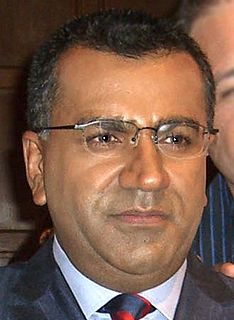
Martin Henry Bashir is a British journalist. He was a presenter on British and American television and for the BBC's Panorama programme, for which he interviewed Diana, Princess of Wales in 1995. Although the interview was much heralded at the time, it was later determined that he had used forgery and deception to gain it.
John Bercow, English politician, Speaker of the House of Commons births

John Simon Bercow is a British former politician who was Speaker of the House of Commons from 2009 to 2019, and Member of Parliament (MP) for Buckingham between 1997 and 2019. A member of the Conservative Party prior to becoming Speaker, he was the first MP since Selwyn Lloyd in 1971 to be elected Speaker without having been a Deputy Speaker. After resigning as Speaker in 2019 and opting not to seek re-election as MP for Buckingham in the 2019 general election, Bercow left Parliament. In 2021, he joined the Labour Party but was suspended in 2022.

The speaker of the House of Commons is the presiding officer of the House of Commons, the lower house and primary chamber of the Parliament of the United Kingdom. The current speaker, Sir Lindsay Hoyle, was elected Speaker on 4 November 2019, following the retirement of John Bercow. Hoyle began his first full parliamentary term in the role on 17 December 2019, having been unanimously re-elected after the 2019 general election.
Clement Smoot, American golfer (b. 1884) deaths

Clement Eyer Smoot was an American golfer who competed in the 1904 Summer Olympics. He was born in Illinois and died in Los Angeles, California. In 1904 he was part of the American team which won the gold medal. He finished 6th in this competition. In the individual competition he finished 22nd in the qualification and was eliminated in the first round of the match play.
Hans Daams, Dutch cyclist births
Johannes ("Hans") Wilhelmus Antonius Daams is a retired road bicycle racer from the Netherlands, who was a professional rider from 1985 to 1989. He represented his native country at the 1984 Summer Olympics in Los Angeles, California, in the individual road race where he didn't finish the race.
Chris Sabo, American baseball player and coach births

Christopher Andrew Sabo is a former third baseman in Major League Baseball who played for the Cincinnati Reds, Baltimore Orioles, Chicago White Sox, and St. Louis Cardinals between 1988 and 1996. He was the head baseball coach of the Akron Zips (2020–2022).
Jeff Van Gundy, American basketball player and coach births

Jeffrey William Van Gundy is an American commentator for ESPN and former basketball coach. He served as head coach of the New York Knicks and the Houston Rockets of the National Basketball Association (NBA). During his tenure on the Knicks, he led the team to the 1999 NBA Finals, where they ultimately lost to the San Antonio Spurs.
William Ragsdale, American actor births

William Ragsdale is an American actor known for playing teenaged vampire slayer Charley Brewster in the horror vampire film Fright Night (1985) and Herman Brooks in the television series Herman's Head (1991–94).
Wayne Hemingway, English fashion designer, co-founded Red or Dead births
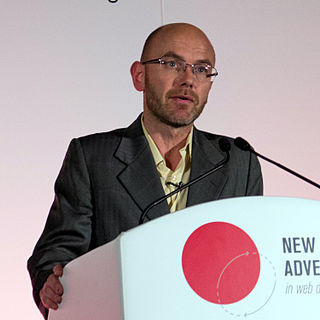
Wayne Andrew Hemingway is an English designer and co-founder of Red or Dead. He is also on the Design Council Trustee Board and having been with the Commission for Architecture and the Built Environment (CABE) for a decade since its inception is now on the Design Council CABE Committee. Hemingway is a Professor in The Built Environment Department of Northumbria University, a Doctor of Design at Wolverhampton, Lancaster and Stafford, a Fellow of Blackburn College and a Senior Fellow of Regent's University London.
Red or Dead is a fashion designer and manufacturer, started in London in 1982 by married couple Gerardine Hemingway and Wayne Hemingway. They design products such as shoes, spectacles, bags and watches.
Danese Cooper, American computer scientist and programmer births
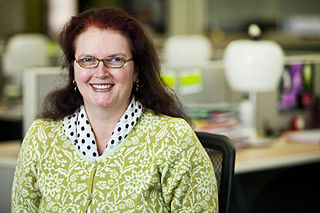
Danese Cooper is an American programmer, computer scientist and advocate of open source software.
Jeff Pilson, American bass player, songwriter, and actor births

Jeffrey Steven Pilson is an American musician best known for being the bass player in the glam metal band Dokken and currently classic rock band Foreigner. He has also had an extended stint with Dio in the 1990s. He is a multi-instrumentalist who plays guitar, cello, keyboards, piano and mellotron. Pilson played fictional heavy metal bassist Jörgen in the 2001 film Rock Star, and voiced Johnny Cage in the 2011 video game Mortal Kombat.
Thomas Kinkade, American painter (d. 2012) births

William Thomas Kinkade III was an American painter of popular realistic, pastoral, and idyllic subjects. He is notable for achieving success during his lifetime with the mass marketing of his work as printed reproductions and other licensed products by means of the Thomas Kinkade Company. According to Kinkade's company, one in every twenty American homes owned a copy of one of his paintings.
Ottis Anderson, American football player and sportscaster births
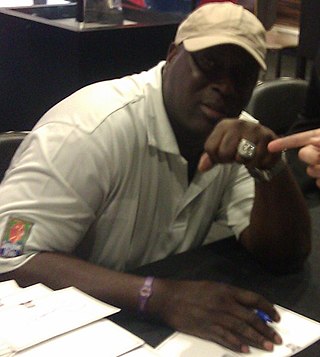
Ottis Jerome Anderson is an American former football running back who played in the National Football League (NFL) for 14 seasons with the St. Louis Cardinals and New York Giants. He played college football at Miami and was selected eighth overall in the 1979 NFL Draft by the Cardinals, where he spent his first eight seasons. In his first season, Anderson was named Offensive Rookie of the Year and received Pro Bowl and first-team All-Pro honors when he set the Cardinals all-time record for rushing yards. He also received a second Pro Bowl selection the following year. Traded to the Giants in 1986 amid a production decline, Anderson won two Super Bowl titles in Super Bowl XXI and Super Bowl XXV. Anderson was named MVP of the latter after playing a central part in the Giants' ball-control offense that allowed them to set the Super Bowl record for time of possession.
Roger Ashton-Griffiths, English actor, screenwriter and film director births

Roger Ashton-Griffiths is an English character actor, screenwriter and film director. He is best known for his role as Mace Tyrell in the HBO fantasy series Game of Thrones.
Kenneth McClintock, Puerto Rican public servant and politician, 22nd Secretary of State of Puerto Rico births

Kenneth Davison McClintock-Hernández is a politician who served as the twenty-second Secretary of State of Puerto Rico, one of the four longest serving in that post. McClintock served as co-chair of Hillary Clinton’s National Hispanic Leadership Council in 2008, he co-chaired her successful Puerto Rico primary campaign that year and served as the Thirteenth President of the Senate of Puerto Rico until December 31, 2008. He chaired Luis Fortuño’s Incoming Committee on Government Transition in 2008 and the Outgoing Committee on Government Transition in 2012, the only Puerto Rican to serve in both capacities. He was sworn into office as secretary of state on January 2, 2009, by Chief Justice Federico Hernández Denton, fulfilling the role of lieutenant governor in the island.

The secretary of state of Puerto Rico leads all efforts that promote the cultural, political, and economical relations between Puerto Rico and foreign countries, and other jurisdictions of the United States. The post was created by Article IV of the Constitution of Puerto Rico which merely establishes that the secretary serves as acting governor when the governor is unable to perform his duties—a post similar to that of a lieutenant governor in U.S. politics. In recent times, however, the post has evolved into one similar to that of a foreign minister. Today, the secretary is the officer in charge of Puerto Rico's foreign relations, albeit under the consent of Congress or the U.S. Department of State due to Puerto Rico's political status.
József Dudás, Romanian-Hungarian activist and politician (b. 1912) deaths

József Dudás, a Hungarian politician and resistance fighter, was born in Marosvásárhely in Austria-Hungary.
Carman, American singer-songwriter, actor, and television host (d. 2021) births

Carmelo Domenic Licciardello, known by his stage name Carman, was an American contemporary Christian music singer, songwriter, television host and evangelist. He was nominated for four Grammys, and sold over 10 million records.
Susan Solomon, American atmospheric chemist births

Susan Solomon is an American atmospheric chemist, working for most of her career at the National Oceanic and Atmospheric Administration. In 2011, Solomon joined the faculty at the Massachusetts Institute of Technology, where she serves as the Ellen Swallow Richards Professor of Atmospheric Chemistry & Climate Science. Solomon, with her colleagues, was the first to propose the chlorofluorocarbon free radical reaction mechanism that is the cause of the Antarctic ozone hole.
Sir Simon Rattle, English orchestral conductor births

Sir Simon Denis Rattle is a British-German conductor. He rose to international prominence during the 1980s and 1990s, while music director of the City of Birmingham Symphony Orchestra (1980–1998). Rattle was principal conductor of the Berlin Philharmonic from 2002 to 2018. He has been the music director of the London Symphony Orchestra since September 2017. Among the world's leading conductors, in a 2015 Bachtrack poll, he was ranked by music critics as one of the world's best living conductors.
Katey Sagal, American actress and singer births

Catherine Louise Sagal, known as Katey Sagal, is an American actress and singer. She is known for playing Peggy Bundy on Married... with Children (1987–1997), Leela on Futurama, Cate Hennessy on 8 Simple Rules (2002–2005), Gemma Teller Morrow on the FX series Sons of Anarchy (2008–2014), for which she won the Golden Globe Award for Best Actress – Television Series Drama in 2011, Dr. Jones on Shameless (2018–2019), and Louise Goldufski-Conner on The Conners (2018–present).
Cindy Sherman, American photographer and director births

Cynthia Morris Sherman is an American artist whose work consists primarily of photographic self-portraits, depicting herself in many different contexts and as various imagined characters.
Esther Shkalim, Israeli poet and Mizrahi feminist births

Esther Shkalim is an Israeli, Mizrahi feminist poet. Shkalim is a researcher of Jewish communities, and a curator of Jewish art. In her poetry Shekalim describes the experience of the female, Jewish and Mizrahi identities, in the family and public spheres.
Theodor Kaluza, German mathematician and physicist (b. 1885) deaths
Theodor Franz Eduard Kaluza was a German mathematician and physicist known for the Kaluza–Klein theory, involving field equations in five-dimensional space-time. His idea that fundamental forces can be unified by introducing additional dimensions re-emerged much later in string theory.
Desi Arnaz, Jr., American actor and singer births
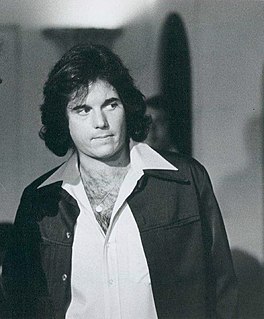
Desiderio Alberto Arnaz IV, known professionally as Desi Arnaz Jr., is an American actor and musician. He is the son of Lucille Ball and Desi Arnaz.
Richard Legendre, Canadian tennis player and politician births
Richard Legendre is a former professional tennis player and politician in Quebec, Canada.
Wayne Schimmelbusch, Australian footballer and coach births
Wayne Schimmelbusch is a former Australian rules footballer in the (then) Victorian Football League (VFL).
Dewey Bunnell, British-American singer-songwriter and guitarist births

Lee Merton "Dewey" Bunnell is a British-American musician, singer, guitarist, and songwriter, best known as a member of the folk rock band America.
Nadiuska, German television actress births
Nadiuska is a retired Polish and Russian model and actress who became a well-known celebrity in Spain during the 1970s. Born as Roswicha Bertasha Smid Honczar in 1952 in Bavaria to Polish and Russian parents, she moved to Barcelona in 1971 and her career rapidly took off. She appeared in a number of sex comedies over the next decade, and appeared nude in Playboy. She played Conan's mother in the 1982 Arnold Schwartzenegger film "Conan the Barbarian". She co-starred with Spanish horror star Paul Naschy in his science fiction film The People Who Own The Dark. Years later she was committed to a psychiatric ward with schizophrenia.
Bruce Jay Nelson, American computer scientist (d. 1999) births
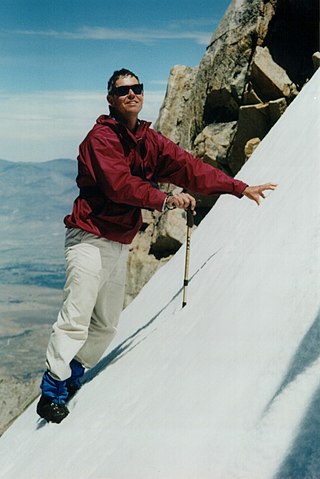
Bruce Jay Nelson was an American computer scientist best known as the inventor of the remote procedure call concept for computer network communications.
Martha Davis, American singer births

Martha Emily Davis is an American rock and new wave singer-songwriter from Berkeley, California. She is most famous for being the lead singer of the band The Motels, but has also made several solo albums, contributed many songs to motion pictures, been on television, and worked onstage with Teatro ZinZanni.
Sébastien Dhavernas, Canadian actor births
Sébastien Dhavernas is a Canadian actor.
Arend Langenberg, Dutch voice actor and radio host (d. 2012) births

Arend Willem Langenberg was a Dutch voice-over, voice actor and radio presenter. He died at the age of 63 from colon cancer.
Robert Palmer, English singer-songwriter and guitarist (d. 2003) births

Robert Allen Palmer was an English singer-songwriter, musician and record producer. He was known for his powerful, soulful voice and sartorial elegance, and for his stylistic explorations, combining soul, funk, jazz, rock, pop, reggae, and blues. While his "four-decade career incorporated every genre of music", Palmer is best known "for the pounding rock-soul classic, "Addicted to Love", and its accompanying video, which came to epitomise the glamour and excesses of the 1980s."
Nancy Lynch, American computer scientist and academic births
Nancy Ann Lynch is a mathematician, a theorist, and a professor at the Massachusetts Institute of Technology. She is the NEC Professor of Software Science and Engineering in the EECS department and heads the "Theory of Distributed Systems" research group at MIT's Computer Science and Artificial Intelligence Laboratory.
Frank McKenna, Canadian politician and diplomat, 27th Premier of New Brunswick births

Francis Joseph McKenna is a Canadian businessman and former politician and diplomat. He is currently Deputy Chairman of the Toronto-Dominion Bank. He served as Canadian Ambassador to the United States from 2005 to 2006. He served as the 27th premier of New Brunswick from 1987 to 1997, winning every seat in the province in his first election.

The premier of New Brunswick is the first minister and head of government for the Canadian province of New Brunswick.
Mal Reilly, English rugby league player and coach births
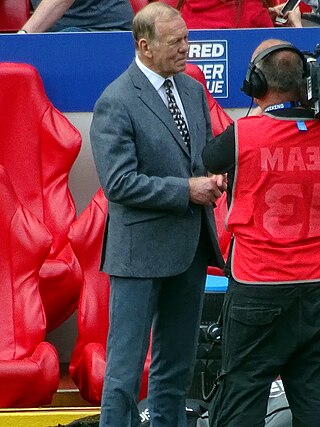
Malcolm John Reilly OBE is an English former rugby league player and coach. He played in the 1960s, 1970s and 1980s, and coached in the 1970s, 1980s, 1990s and 2000s. He played at representative level for Great Britain, England and Yorkshire, and at club level for Castleford in England, and Manly-Warringah Sea Eagles in Australia, as a loose forward,
Tony Garnier, French architect and urban planner, designed the Stade de Gerland (b. 1869) deaths
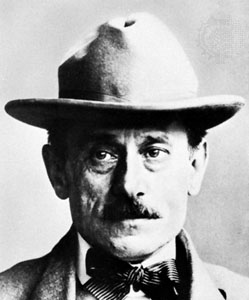
Tony Garnier was a noted French architect and city planner. He was most active in his home city of Lyon, where he notably designed the Halle Tony Garnier and Stade de Gerland. Garnier is considered one of the forerunners of 20th-century French architects.

The Stade de Gerland is a stadium in the city of Lyon, France, which serves as home to Top 14 rugby club Lyon OU. It has a seating capacity of 35,000.
Frank Aarebrot, Norwegian political scientist and academic (d. 2017) births
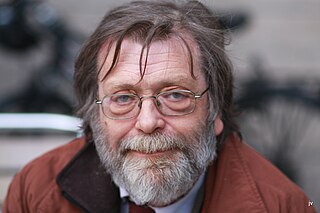
Frank Henrik Aarebrot was a Norwegian political scientist, political commentator, and professor of comparative politics. Among the most quoted and popular academics in the Norwegian press, he became better known during his later years for his televised "marathon lectures" and his recurring role in coverage of national and international elections on Norwegian television.
Paula Deen, American chef and author births

Paula Ann Hiers Deen is an American chef, cookbook author, and TV personality. Deen resides in Savannah, Georgia, where she owns and operates The Lady & Sons restaurant and Paula Deen's Creek House with her sons, Jamie and Bobby Deen. She has published fifteen cookbooks.
Rod Evans, English singer-songwriter births

Roderic Evans is a British former singer.
Julian Barnes, English novelist, short story writer, essayist, and critic births

Julian Patrick Barnes is an English writer. He won the Man Booker Prize in 2011 with The Sense of an Ending, having been shortlisted three times previously with Flaubert's Parrot, England, England, and Arthur & George. Barnes has also written crime fiction under the pseudonym Dan Kavanagh. In addition to novels, Barnes has published collections of essays and short stories.
Dolly Parton, American singer-songwriter and actress births

Dolly Rebecca Parton is an American singer-songwriter, actress, philanthropist, and businesswoman, known primarily for her work in country music. After achieving success as a songwriter for others, Parton made her album debut in 1967 with Hello, I'm Dolly, which led to success during the remainder of the 1960s, before her sales and chart peak came during the 1970s and continued into the 1980s. Parton's albums in the 1990s did not sell as well, but she achieved commercial success again in the new millennium and has released albums on various independent labels since 2000, including her own label, Dolly Records. She has sold more than 100 million records worldwide.
Trevor Williams, English singer-songwriter and bass player births
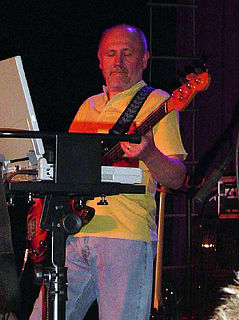
Trevor Williams is a bass guitarist, vocalist and lyricist known primarily for his work with Audience, British art rock band which ran from 1969 to 1972 and from 2004 -2013.
Gustave Mesny, French general (b. 1886) deaths

Gustave Marie Maurice Mesny was a French Army general in command of the 5th North African Infantry Division who was captured during the Second World War. He was victim of a war crime, unlawfully executed in retribution for the death of German general Fritz von Brodowski.
Shelley Fabares, American actress and singer births
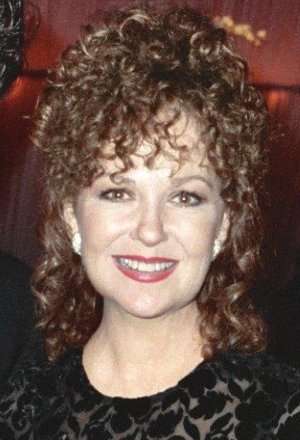
Michele Ann Marie "Shelley" Fabares is an American actress and singer. She is best known for her television roles as Mary Stone on the sitcom The Donna Reed Show (1958–1963) and as Christine Armstrong on the sitcom Coach (1989–97), the latter of which earned her two Primetime Emmy Awards nominations.
Thom Mayne, American architect and academic, designed the San Francisco Federal Building and Phare Tower births
Thom Mayne is an American architect. He is based in Los Angeles. In 1972, Mayne helped found the Southern California Institute of Architecture (SCI-Arc), where he is a trustee and the coordinator of the Design of Cities postgraduate program. Since then he has held teaching positions at SCI-Arc, the California State Polytechnic University, Pomona and the University of California, Los Angeles (UCLA). He is principal of Morphosis Architects, an architectural firm based in Culver City, California and New York City, New York. Mayne received the Pritzker Architecture Prize in March 2005.

The San Francisco Federal Building is an 18-story, 234 ft-tall (71.3 m) building at 90 7th Street on the corner of Mission and 7th streets in the South of Market neighborhood of San Francisco, California. The federal building was designed by the Morphosis architectural firm, as a supplement to the Phillip Burton Federal Building several blocks away. Thom Mayne of Morphosis designed the building using a juxtaposition of gray concrete walls, perforated metal panels, and custom, faceted wood ceilings. The building was expected to be completed in 2005, but construction issues and delays pushed the project completion to 2007.
The Phare Tower, in English, "Beacon Tower", was a planned approx. 300-metre (984 ft) tall skyscraper with 71 floors designed as a green building to be built in Courbevoie (Hauts-de-Seine), France, in the La Défense district of suburban Paris. The building was being designed by Los Angeles-based Morphosis, headed by architect Thom Mayne, and would have been completed in 2018. Had it been built, it would have been the tallest skyscraper in Paris and one of the tallest in the European Union. Tour Phare was cancelled and could be replaced by Sister Towers.
Dan Reeves, American football player and coach (d. 2022) births
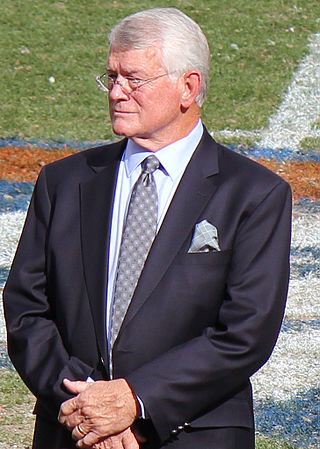
Daniel Edward Reeves was an American football running back and coach in the National Football League (NFL). During his 38 years in the NFL, Reeves participated in nine Super Bowls, the third most for an individual. He was a head coach for 23 seasons, a position he held with the Denver Broncos from 1981 to 1992, the New York Giants from 1993 to 1996, and the Atlanta Falcons from 1997 to 2003. As a player, he spent his eight-season career with the Dallas Cowboys, who signed him as an undrafted free agent in 1965.
Larry Clark, American director, producer, and screenwriter births
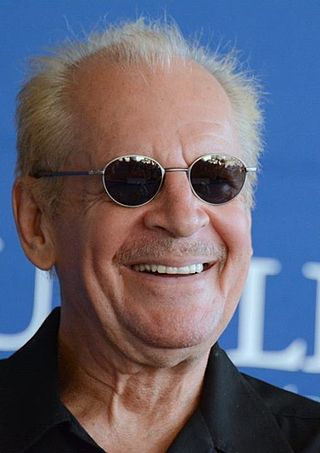
Lawrence Donald Clark is an American film director, photographer, writer and film producer who is best known for his controversial teen film Kids (1995) and his photography book Tulsa (1971). His work focuses primarily on youth who casually engage in illegal drug use, underage sex, and violence, and who are part of a specific subculture, such as surfing, punk rock, or skateboarding.
Janis Joplin, American singer-songwriter (d. 1970) births
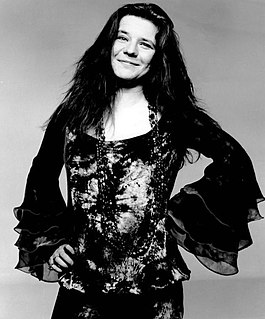
Janis Lyn Joplin was an American singer and musician. One of the most successful and widely known rock stars of her era, she was noted for her powerful mezzo-soprano vocals and "electric" stage presence.
Princess Margriet of the Netherlands births

Princess Margriet Francisca of the Netherlands is the third daughter of Queen Juliana and Prince Bernhard. As an aunt of the reigning monarch, King Willem-Alexander, she is a member of the Dutch Royal House and currently eighth and last in the line of succession to the throne.
Michael Crawford, English actor and singer births

Michael Patrick Smith,, known professionally as Michael Crawford, is an English tenor, actor and comedian.
Colin Gunton, English theologian and academic (d. 2003) births
Colin Ewart Gunton was an English Reformed systematic theologian. He made contributions to the doctrine of creation and the doctrine of the Trinity. He was Professor of Christian Doctrine at King's College, London, from 1984 and co-founder with Christoph Schwoebel of the Research Institute for Systematic Theology in 1988. Gunton was actively involved in the United Reformed Church in the United Kingdom where he had been a minister since 1972.
Pat Patterson, Canadian wrestler, trainer, and referee (d. 2020) births

Pat Patterson was a Canadian–American professional wrestler and producer, widely known for his long tenure in the professional wrestling promotion WWE, first as a wrestler, then as a creative consultant and producer ("booker"). He is recognized by the company as their first Intercontinental Champion and creator of the Royal Rumble match. He was inducted into the WWF Hall of Fame as part of the class of 1996.
Paolo Borsellino, Italian lawyer and judge (d. 1992) births

Paolo Emanuele Borsellino was an Italian judge and prosecuting magistrate. From his office in the Palace of Justice in Palermo, Sicily, he spent most of his professional life trying to overthrow the power of the Sicilian Mafia. After a long and distinguished career, culminating in the Maxi Trial in 1986–1987, on 19 July 1992, Borsellino was killed by a car bomb in Via D'Amelio, near his mother's house in Palermo.
Phil Everly, American singer-songwriter and guitarist (d. 2014) births

The Everly Brothers were an American rock duo, known for steel-string acoustic guitar playing and close harmony singing. Consisting of Isaac Donald "Don" Everly and Phillip "Phil" Everly, the duo combined elements of rock and roll, country, and pop, becoming pioneers of country rock.
Branislav Nušić, Serbian author, playwright, and journalist (b. 1864) deaths

Branislav Nušić was a Serbian playwright, satirist, essayist, novelist and founder of modern rhetoric in Serbia. He also worked as a journalist and a civil servant.
John Lions, Australian computer scientist and academic (d. 1998) births

John Lions was an Australian computer scientist. He is best known as the author of Lions' Commentary on UNIX 6th Edition, with Source Code, commonly known as the Lions Book.
Ziaur Rahman, Bangladeshi general and politician, seventh President of Bangladesh (d. 1981) births
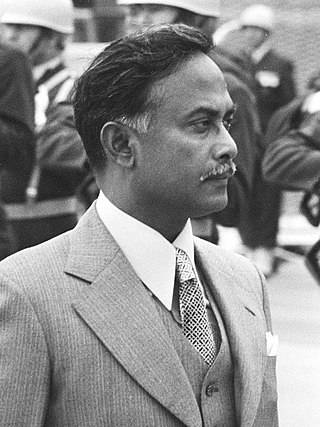
Lt. General Ziaur Rahman BU HJ, was a Bangladeshi military officer and politician who served as the President of Bangladesh from 1977 to 1981. He was assassinated on 30 May 1981 in Chittagong in an army coup d'état.
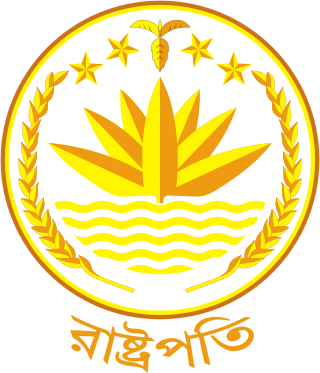
The president of Bangladesh officially the President of the People's Republic of Bangladesh is the head of state of Bangladesh and commander-in-chief of the Bangladesh Armed Forces.
Willie "Big Eyes" Smith, American singer, harmonica player, and drummer (d. 2011) births

Willie Lee "Big Eyes" Smith was an American electric blues vocalist, harmonica player, and drummer. He was best known for several stints with the Muddy Waters band beginning in the early 1960s.
Fred J. Lincoln, American actor, director, producer, and screenwriter (d. 2013) births
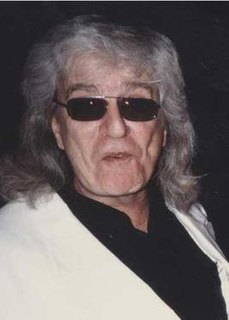
Fred J. Lincoln was an American director, producer, screenwriter, actor, editor, and cinematographer of pornographic films.
Johnny O'Keefe, Australian singer-songwriter (d. 1978) births

John Michael O'Keefe was an Australian rock and roll singer whose career began in the 1950s. Some of his hits include "Wild One" (1958), "Shout!" and "She's My Baby". In his twenty-year career, O'Keefe released over fifty singles, 50 EPs and 100 albums. O'Keefe was also a radio and television entertainer and presenter
George Coyne, American priest, astronomer, and theologian (d. 2020) births

George Vincent Coyne, S.J. was an American Jesuit priest and astronomer who directed the Vatican Observatory and headed its research group at the University of Arizona from 1978 to 2006. From January 2012 until his death, he taught at Le Moyne College in Syracuse, New York. His career was dedicated to the reconciliation of theology and science, while his stance on scripture was absolute: "One thing the Bible is not," he said in 1994, "is a scientific textbook. Scripture is made up of myth, of poetry, of history. But it is simply not teaching science."
Russ Hamilton, English singer-songwriter (d. 2008) births
Russ Hamilton was an English singer and songwriter. Hamilton made the Top 10 in the United Kingdom with "We Will Make Love", but in the United States, it was the B-side, "Rainbow", which made the Top 10.
Richard Lester, American-English director, producer, and screenwriter births
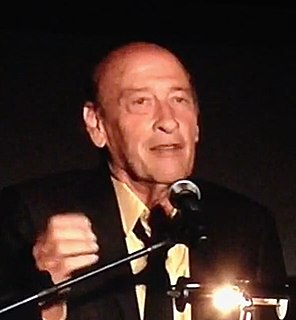
Richard Lester Liebman is an American retired film director based in the United Kingdom.
Harry Lonsdale, American chemist, businessman, and politician (d. 2014) births
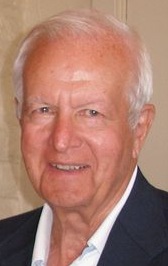
Harold K. Lonsdale was an American scientist, businessman, and politician. A Democrat, he ran for United States Senate in the U.S. state of Oregon three times, losing twice in the primaries and once as the Democratic candidate, losing in the 1990 general election to incumbent Republican Mark Hatfield. In 2011 Lonsdale sponsored a research challenge to determine the origin of life on Earth.
Robert MacNeil, Canadian-American journalist and author births

Robert Breckenridge Ware MacNeil, OC is a Canadian-American journalist and writer. He is a retired television news anchor who partnered with Jim Lehrer to create The MacNeil/Lehrer Report in 1975.
Tippi Hedren, American model, actress, and animal rights-welfare activist births
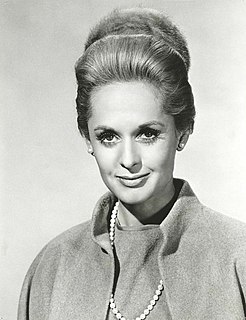
Nathalie Kay "Tippi" Hedren is an American actress, animal rights activist, and former fashion model.
John Waite, South African cricketer (d. 2011) births

John Henry Bickford Waite was a South African cricketer who played in fifty Tests from 1951 to 1965.
Frank P. Ramsey, British mathematician, philosopher and economist (b. 1903) deaths
Frank Plumpton Ramsey was a British philosopher, mathematician, and economist who made major contributions to all three fields before his death at the age of 26. He was a close friend of Ludwig Wittgenstein and, as an undergraduate, translated Wittgenstein's Tractatus Logico-Philosophicus into English. He was also influential in persuading Wittgenstein to return to philosophy and Cambridge. Like Wittgenstein, he was a member of the Cambridge Apostles, the secret intellectual society, from 1921.
Liang Qichao, Chinese journalist, philosopher, and scholar (b. 1873) deaths

Liang Qichao was a Chinese politician, social and political activist, journalist, and intellectual. His thought had a significant influence on the political reformation of modern China. He inspired Chinese scholars and activists with his writings and reform movements. His translations of Western and Japanese books into Chinese further introduced new theories and ideas and inspired young activists.
Hans Massaquoi, German-American journalist and author (d. 2013) births

Hans-Jürgen Massaquoi was a German-American journalist and author. He was born in Hamburg, Germany, to a German mother and a Liberian father of Vai ethnicity, the grandson of Momulu Massaquoi, the consul general of Liberia in Germany at the time.
Fritz Weaver, American actor (d. 2016) births
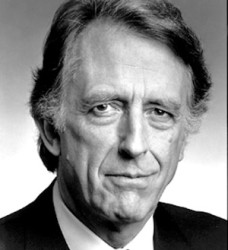
Fritz William Weaver was an American actor in television, stage, and motion pictures. He portrayed Dr. Josef Weiss in the 1978 epic television drama, Holocaust for which he was nominated for a Primetime Emmy Award. In cinema, he made his debut in the film Fail Safe (1964) and also appeared in Marathon Man (1976), Creepshow (1982), and The Thomas Crown Affair (1999). Among many television roles, he performed in the movie The Legend of Lizzie Borden (1975). He also worked in science fiction and fantasy, especially in television series and movies like The Twilight Zone, 'Way Out, Night Gallery, The X-Files, The Martian Chronicles, and Demon Seed. Weaver also narrated educational TV programs.
Nina Bawden, English author (d. 2012) births
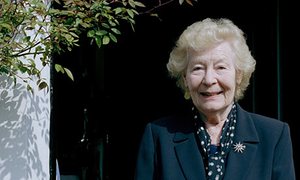
Nina Bawden CBE, FRSL, JP was an English novelist and children's writer. She was shortlisted for the Booker Prize in 1987 and the Lost Man Booker Prize in 2010. She is one of very few who have both served as a Booker judge and made a Booker shortlist as an author. She was a recipient of the Golden PEN Award.
Nicholas Colasanto, American actor and director (d. 1985) births

Nicholas Colasanto was an American actor and television director who is best known for his role as "Coach" Ernie Pantusso in the American television sitcom Cheers. He served in the United States Navy during World War II and later attended the American Academy of Dramatic Arts in the 1950s.
Jean-François Revel, French philosopher (d. 2006) births

Jean-François Revel was a French philosopher, journalist, and author. A prominent public intellectual, Revel was a socialist in his youth but later became a prominent European proponent of classical liberalism and free market economics. He was a member of the Académie française after June 1998. He is best known for his book Without Marx or Jesus: The New American Revolution Has Begun, published in French in 1970.
Jean Stapleton, American actress and singer (d. 2013) births

Jean Stapleton was an American character actress of stage, television and film.
Arthur Morris, Australian cricketer and journalist (d. 2015) births
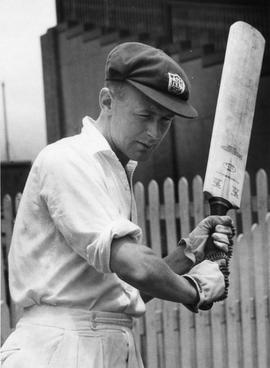
Arthur Robert Morris was an Australian cricketer who played 46 Test matches between 1946 and 1955. An opener, Morris is regarded as one of Australia's greatest left-handed batsmen. He is best known for his key role in Don Bradman's Invincibles side, which made an undefeated tour of England in 1948. He was the leading scorer in the Tests on the tour, with three centuries. His efforts in the Fourth Test at Headingley helped Australia to reach a world record victory target of 404 on the final day. Morris was named in the Australian Cricket Board's Team of the Century in 2000 and was inducted into the Australian Cricket Hall of Fame in 2001.
Miguel Muñoz, Spanish footballer and manager (d. 1990) births

Miguel Muñoz Mozún was a Spanish football player and manager.
Patricia Highsmith, American novelist and short story writer (d. 1995) births

Patricia Highsmith was an American novelist and short story writer widely known for her psychological thrillers, including her series of five novels featuring the character Tom Ripley.
Bernard Dunstan, English painter and educator (d. 2017) births
Bernard Dunstan was a British artist, teacher, and author, best known for his studies of figures in interiors and landscapes. At the time of his death, he was the longest serving Royal Academician.
Javier Pérez de Cuéllar, Peruvian politician and diplomat, 135th Prime Minister of Peru (d. 2020) births

Javier Felipe Ricardo Pérez de Cuéllar de la Guerra was a Peruvian diplomat and politician who served as the fifth Secretary-General of the United Nations from 1982 to 1991. He later served as Prime Minister of Peru from 2000 to 2001.

The president of the Council of Ministers of Peru, informally called Premier or Prime Minister, is the most senior member of the Council of Ministers. The president of the Council of Ministers is appointed by the President.
John H. Johnson, American publisher, founded the Johnson Publishing Company (d. 2005) births
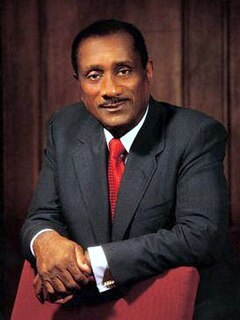
John Harold Johnson was an American businessman and publisher. Johnson was the founder in 1942 of the Johnson Publishing Company, headquartered in Chicago, Illinois. Johnson's company, with its Ebony (1945) and Jet (1951) magazines, was among the most influential African-American business in media in the second half of the twentieth century. In 1982, Johnson became the first African American to appear on the Forbes 400. In 1987, Johnson was named Black Enterprise Entrepreneur of the year. in 1996, he was awarded the Presidential Medal of Freedom.

Johnson Publishing Company, Inc. (JPC) was an American publishing company founded in November 1942 by African-American businessman John H. Johnson. It was headquartered in Chicago, Illinois. JPC was privately held and run by Johnson until his death in 2005. His publications "forever changed the popular representation of African Americans." The writing portrayed African Americans as they saw themselves and its photojournalism made history. Led by its flagship publication, Ebony, Johnson Publishing was at one time the largest African-American-owned publishing firm in the United States. JPC also published Jet, a weekly news magazine, from November 1951 until June 2014, when it became digital only. In the 1980s, the company branched into film and television.
Rex Ingamells, Australian author and poet (d. 1955) births

Reginald Charles (Rex) Ingamells was an Australian poet, generally credited with being the leading light of the Jindyworobak Movement.
Rudolf Wanderone, American professional pocket billiards player (d. 1996) births
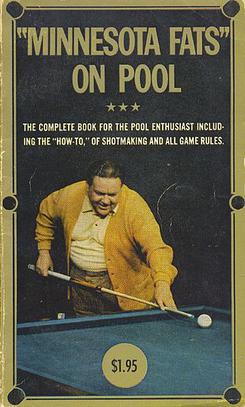
Rudolf Walter Wanderone, commonly known as Minnesota Fats, was an American professional billiards player. Although he never won a major pool tournament as "Fats", he was at one time perhaps the most publicly recognized pool player in the United States—not only as a player, but also as an entertainer. Wanderone was inducted in 1984 into the Billiard Congress of America Hall of Fame for his decades-long public promotion of pool.
Leonid Kantorovich, Russian mathematician and economist, Nobel Prize laureate (d. 1986) births

Leonid Vitaliyevich Kantorovich was a Soviet mathematician and economist, known for his theory and development of techniques for the optimal allocation of resources. He is regarded as the founder of linear programming. He was the winner of the Stalin Prize in 1949 and the Nobel Memorial Prize in Economic Sciences in 1975.

The Nobel Memorial Prize in Economic Sciences, officially the Sveriges Riksbank Prize in Economic Sciences in Memory of Alfred Nobel, is an economics award administered by the Nobel Foundation.
Choor Singh, Indian-Singaporean lawyer and judge (d. 2009) births

Choor Singh Sidhu, known professionally as Choor Singh, was a Singaporean lawyer who served as a judge of the Supreme Court of Singapore and, particularly after his retirement from the bench, a philanthropist and writer of books about Sikhism. Born to a family of modest means in Punjab, India, he came to Singapore at four years of age. He completed his secondary education in the top class at Raffles Institution in 1929, then worked as a clerk in a law firm before becoming a civil servant in the Official Assignee's office.
Ish Kabibble, American comedian and cornet player (d. 1994) births

Ish Kabibble was an American comedian and cornet player.
Aleksandr Gennadievich Kurosh, Russian mathematician and theorist (d. 1971) births
Alexander Gennadyevich Kurosh was a Soviet mathematician, known for his work in abstract algebra. He is credited with writing The Theory of Groups, the first modern and high-level text on group theory, published in 1944.
Briggs Cunningham, American race car driver, sailor, and businessman (d. 2003) births
Briggs Swift Cunningham II was an American entrepreneur and sportsman. He is best known for skippering the yacht Columbia to victory in the 1958 America's Cup race, and for his efforts as a driver, team owner, and constructor in sports car racing, including the 24 Hours of Le Mans.
Bartolomé Mitre, Argentinian historian and politician, sixth President of Argentina (b. 1821) deaths
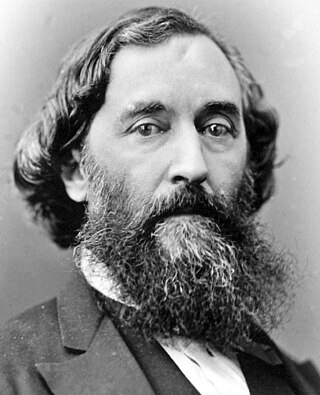
Bartolomé Mitre Martínez was an Argentine statesman, soldier and author. He was President of Argentina from 1862 to 1868 and the first president of unified Argentina.

The president of Argentina, officially known as the president of the Argentine Nation, is both head of state and head of government of Argentina. Under the national constitution, the president is also the chief executive of the federal government and commander-in-chief of the armed forces.
Stanley Hawes, English-Australian director and producer (d. 1991) births
Stanley Gilbert Hawes was a British-born documentary film producer and director who spent most of his career in Australia, though he commenced his career in England and Canada. He was born in London, England and died in Sydney, Australia. He is best known as the Producer-in-Chief (1946–1969) of the Australian Government's filmmaking body, which was named, in 1945, the Australian National Film Board, and then, in 1956, the Commonwealth Film Unit. In 1973, after he retired, it became Film Australia.
Boris Blacher, German composer and playwright (d. 1975) births
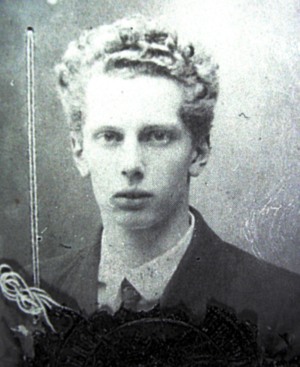
Boris Blacher was a German composer and librettist.
António Luís de Seabra, 1st Viscount of Seabra, Portuguese magistrate and politician (b. 1798) deaths

D. António Luís de Seabra e Sousa, 1st Viscount of Seabra was a Portuguese politician, jurist, and magistrate. A notable figure of the Constitutional Monarchy period, he was a government minister, a rector of the University of Coimbra, a judge in the Oporto appellate court, a member of Parliament, a Peer of the Realm, and a judge of the Supreme Court of Justice.
Magda Tagliaferro, Brazilian pianist and educator (d. 1986) births

Magdalena Maria Yvonne Tagliaferro was a Brazilian-born pianist of French parentage.
Ólafur Thors, Icelandic lawyer and politician, Prime Minister of Iceland (d. 1964) births

Ólafur Tryggvason Thors was an Icelandic politician of the Independence Party, who served five times as prime minister of Iceland.

The prime minister of Iceland is Iceland's head of government. The prime minister is appointed formally by the president and exercises executive authority along with the cabinet subject to parliamentary support.
Sophie Taeuber-Arp, Swiss painter and sculptor (d. 1943) births

Sophie Henriette Gertrud Taeuber-Arp was a Swiss artist, painter, sculptor, textile designer, furniture and interior designer, architect, and dancer.
Alexander Woollcott, American actor, playwright, and critic (d. 1943) births

Alexander Humphreys Woollcott was an American drama critic and commentator for The New Yorker magazine, a member of the Algonquin Round Table, an occasional actor and playwright, and a prominent radio personality.
Hermann Abendroth, German conductor (d. 1956) births

Hermann Paul Maximilian Abendroth was a German conductor.
John Cain Sr., Australian politician, 34th Premier of Victoria (d. 1957) births

John Cain was an Australian politician, who became the 34th premier of Victoria, and was the first Labor Party leader to win a majority in the Victorian Legislative Assembly. He is the only premier of Victoria to date whose son has also served as premier.

The premier of Victoria is the head of government in the Australian state of Victoria. The premier is appointed by the governor of Victoria, and is the leader of the political party able to secure a majority in the Victorian Legislative Assembly.
Boris Savinkov, Russian soldier and author (d. 1925) births

Boris Viktorovich Savinkov was a Russian writer and revolutionary. As one of the leaders of the Fighting Organisation, the paramilitary wing of the Socialist Revolutionary Party, Savinkov was involved in the assassinations of several high-ranking imperial officials in 1904 and 1905.
Herbert Chapman, English footballer and manager (d. 1934) births

Herbert Chapman was an English football player and manager. Though he had an undistinguished playing career, he went on to become one of the most influential and successful managers in the early 20th century, before his sudden death in 1934. He is regarded as one of the game's greatest innovators.
Henri Victor Regnault, French physicist and chemist (b. 1810) deaths

Henri Victor Regnault was a French chemist and physicist best known for his careful measurements of the thermal properties of gases. He was an early thermodynamicist and was mentor to William Thomson in the late 1840s. He never used his first given name, and was known throughout his lifetime as Victor Regnault.
Wakashima Gonshirō, Japanese sumo wrestler, the 21st Yokozuna (d. 1943) births

Wakashima Gonshirō was a Japanese professional sumo wrestler from Ichikawa, Chiba Prefecture. He was the sport's 21st yokozuna.

Makuuchi (幕内), or makunouchi (幕の内), is the top division of the six divisions of professional sumo. Its size is fixed at 42 wrestlers (rikishi), ordered into five ranks according to their ability as defined by their performance in previous tournaments.
Dragotin Kette, Slovenian poet and author (d. 1899) births
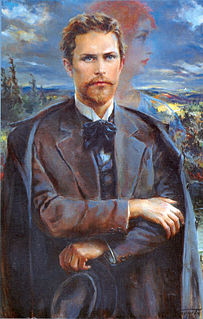
Dragotin Kette was a Slovene Impressionist and Neo-Romantic poet. Together with Josip Murn, Ivan Cankar, and Oton Župančič, he is considered the founder of modernism in Slovene literature.
Hitachiyama Taniemon, Japanese sumo wrestler, the 19th Yokozuna (d. 1922) births

Hitachiyama Taniemon was a Japanese professional sumo wrestler from Mito, Ibaraki Prefecture. He was the sport's 19th yokozuna from 1903 till 1914. His great rivalry with Umegatani Tōtarō II created the "Ume-Hitachi Era" and did much to popularise sumo. He is remembered as much for his exploits in promoting the sport as for his strength on the dohyō. In his later years as head coach of Dewanoumi stable he trained hundreds of wrestlers, including three yokozuna. Many consider him the most honorable yokozuna in sumo history, which earned him the nickname "Kakusei" (角聖), or "sumo saint".

Makuuchi (幕内), or makunouchi (幕の内), is the top division of the six divisions of professional sumo. Its size is fixed at 42 wrestlers (rikishi), ordered into five ranks according to their ability as defined by their performance in previous tournaments.
August Heinrich Hoffmann von Fallersleben, German poet and scholar (b. 1798) deaths

August Heinrich Hoffmann was a German poet. He is best known for writing "Das Lied der Deutschen", whose third stanza is now the national anthem of Germany, and a number of popular children's songs, considered part of the Young Germany movement.
Dame Gruev, Bulgarian educator and activist, co-founded the Internal Macedonian Revolutionary Organization (d. 1906) births
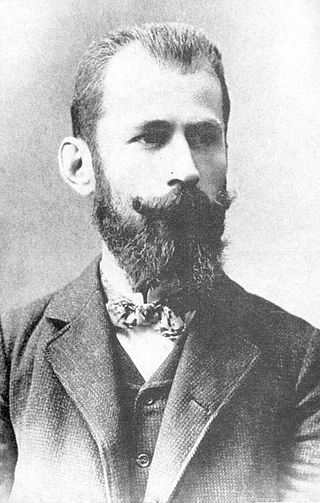
Damyan Yovanov Gruev was а Bulgarian teacher, revolutionary and insurgent leader in the Ottoman regions of Macedonia and Thrace. He was one of the six founders of the Internal Macedonian Revolutionary Organization. Despite his Bulgarian self-identification, according to the post-World War II Macedonian historiography, he was an ethnic Macedonian.
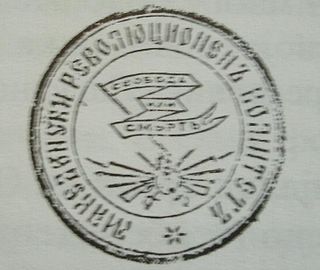
The Internal Macedonian Revolutionary Organization, was a secret revolutionary society founded in the Ottoman territories in Europe, that operated in the late 19th and early 20th centuries.
Carl Reichenbach, German chemist and philosopher (b. 1788) deaths

Carl Ludwig von Reichenbach was a German chemist, geologist, metallurgist, naturalist, industrialist and philosopher, and a member of the Prussian Academy of Sciences. He is best known for his discoveries of several chemical products of economic importance, extracted from tar, such as eupione, waxy paraffin, pittacal and phenol. He also dedicated himself in his last years to research an unproved field of energy combining electricity, magnetism and heat, emanating from all living things, which he called the Odic force.
Harry Davenport, American stage and film actor (d. 1949) births
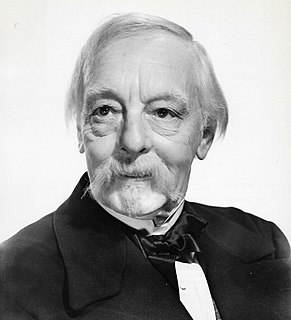
Harold George Bryant Davenport was an American film and stage actor who worked in show business from the age of six until his death. After a long and prolific Broadway career, he came to Hollywood in the 1930s, where he often played grandfathers, judges, doctors, and ministers. His roles include Dr. Meade in Gone with the Wind (1939) and Grandpa in Meet Me in St. Louis (1944). Bette Davis once called Davenport "without a doubt [. . .] the greatest character actor of all time."
Pierre-Joseph Proudhon, French philosopher and politician (b. 1809) deaths

Pierre-Joseph Proudhon was a French socialist, politician, philosopher, economist and the founder of mutualist philosophy. He was the first person to declare himself an anarchist, using that term, and is widely regarded as one of anarchism's most influential theorists. Proudhon is considered by many to be the "father of anarchism". Proudhon became a member of the French Parliament after the Revolution of 1848, whereafter he referred to himself as a federalist. Proudhon described the liberty he pursued as "the synthesis of communism and property". Some consider his mutualism to be part of individualist anarchism while others regard it to be part of social anarchism.
Werner Sombart, German economist and sociologist (d. 1941) births

Werner Sombart was a German economist and sociologist, the head of the "Youngest Historical School" and one of the leading Continental European social scientists during the first quarter of the 20th century. The term late capitalism is accredited to him. The concept of creative destruction associated with capitalism is also of his coinage. His magnum opus was Der moderne Kapitalismus. It was published in 3 volumes from 1902 through 1927. In Kapitalismus he described four stages in the development of capitalism from its earliest iteration as it evolved out of feudalism, which he called proto-capitalism to early, high and, finally, late capitalism —Spätkapitalismus— in the post World War I period.
Karl Faber, German historian and academic (b. 1773) deaths
Karl Peter Andreas Faber was a Prussian archivist and historian.
Thomas Price, Welsh-Australian politician, 24th Premier of South Australia (d. 1909) births
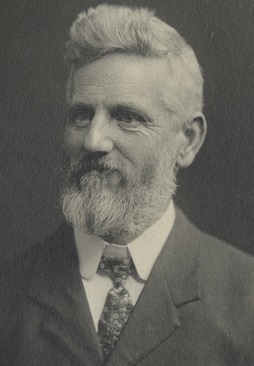
Thomas Price, commonly referred to as Tom Price, served as the South Australian United Labor Party's first Premier of South Australia. He formed a minority government at the 1905 election and was re-elected with increased representation at the 1906 election, serving in the premiership until his death in 1909. It was the world's first stable Labor government. Shortly afterwards, John Verran led Labor to form the state's first of many majority governments at the 1910 election.

The premier of South Australia is the head of government in the state of South Australia, Australia. The Government of South Australia follows the Westminster system, with a Parliament of South Australia acting as the legislature. The premier is appointed by the governor of South Australia, and by modern convention holds office by virtue of his or her ability to command the support of a majority of members of the lower house of Parliament, the House of Assembly.
Jacobus Kapteyn, Dutch astronomer and academic (d. 1922) births

Prof Jacobus Cornelius Kapteyn FRS FRSE LLD was a Dutch astronomer. He carried out extensive studies of the Milky Way and was the discoverer of evidence for galactic rotation. Kapteyn was also among the first to suggest the existence of dark matter using stellar velocities as early as 1922.
Esteban Echeverría, Argentinian poet and author (b. 1805) deaths
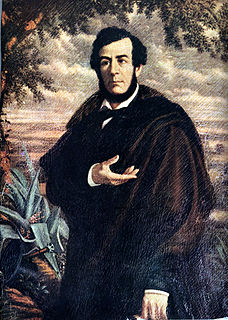
José Esteban Antonio Echeverría was an Argentine poet, fiction writer, cultural promoter, and liberal activist who played a significant role in the development of Argentine literature, not only through his own writings but also through his organizational efforts. He was one of Latin America's most important Romantic authors. Echeverría's romantic liberalism was influenced by both the democratic nationalism of Giuseppe Mazzini and the utopian socialist doctrines of Henri de Saint-Simon.
Arturo Graf, Italian poet, of German ancestry (d. 1913). births
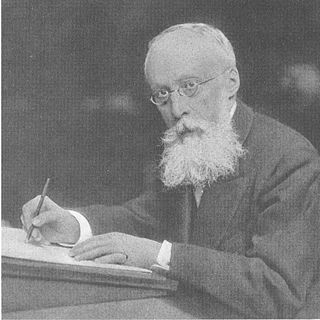
Arturo Graf (1848–1913), Italian poet, of German ancestry, was born at Athens, Greece.
John Fitzwilliam Stairs, Canadian businessman and politician (d. 1904) births

John Fitzwilliam Stairs, also known as John Fitz William Stairs was an entrepreneur and statesman, born in Halifax, Nova Scotia, a member of the prominent Stairs family of merchants and shippers founded by William Machin Stairs (1789–1865) that included the Victorian era explorer, William Grant Stairs.
Matthew Webb, English swimmer and diver (d. 1883) births
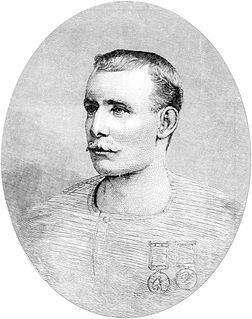
Captain Matthew Webb was an English swimmer and stuntman. He is the first recorded person to swim the English Channel for sport without the use of artificial aids. In 1875, Webb swam from Dover to Calais in less than 22 hours. This made him a celebrity, and he performed many stunts in public. He died trying to swim the Whirlpool Rapids below Niagara Falls, a feat declared impossible.
Charles Bent, American soldier and politician, first Governor of New Mexico (b. 1799) deaths

Charles Bent was an American businessman and politician who served as the first civilian United States governor of the New Mexico Territory, newly acquired by the Military Governor, Stephen Watts Kearny, in September 1846.

The governor of New Mexico is the head of government of New Mexico. The governor is the head of the executive branch of New Mexico's state government and the commander-in-chief of the New Mexico National Guard. As noted in the governor's seal, this gubernatorial office is a scion of the Spanish and Mexican governors of Nuevo México (1598) and the governors of the New Mexico Territory (1851). The officeholder is afforded the courtesy title of The Honorable for life. The current governor is Michelle Lujan Grisham, a Democrat, who was sworn in as the 32nd governor of New Mexico on January 1, 2019.
Athanasios Christopoulos, Greek poet (b. 1772) deaths
Athanasios Christopoulos was a celebrated Greek poet, playwright, a distinguished scholar and jurist. He has been proclaimed a champion of the modern Greek demotic and the forerunner of the national poet Dionysios Solomos. More importantly he is the first modern Greek poet to have his works - the Lyrika - published and read across a broad section of the European continent.
Paul Cézanne, French painter (d. 1906) births

Paul Cézanne was a French artist and Post-Impressionist painter whose work laid the foundations of the transition from the 19th-century conception of artistic endeavour to a new and radically different world of art in the 20th century. Cézanne is said to have formed the bridge between late 19th-century Impressionism and the early 20th century's new line of artistic enquiry, Cubism.
Alfred Clebsch, German mathematician and academic (d. 1872) births

Rudolf Friedrich Alfred Clebsch was a German mathematician who made important contributions to algebraic geometry and invariant theory. He attended the University of Königsberg and was habilitated at Berlin. He subsequently taught in Berlin and Karlsruhe. His collaboration with Paul Gordan in Giessen led to the introduction of Clebsch–Gordan coefficients for spherical harmonics, which are now widely used in quantum mechanics.
Ferdinand Hérold, French pianist and composer (b. 1791) deaths
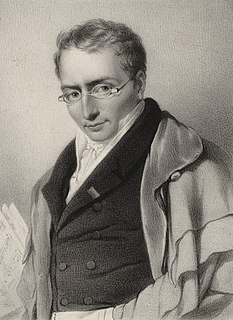
Louis Joseph Ferdinand Herold, better known as Ferdinand Hérold, was a French composer. He was celebrated in his lifetime for his operas, of which he composed more than twenty, but he also wrote ballet music, works for piano and choral pieces. He is best known today for the ballet La Fille mal gardée and the overture to the opera Zampa.
Ferdinand Laub, Czech violinist and composer (d. 1875) births

Ferdinand Laub was a Czech violinist and composer.
Henry Bessemer, English engineer and businessman (d. 1898) births

Sir Henry Bessemer was an English inventor, whose steel-making process would become the most important technique for making steel in the nineteenth century for almost one hundred years from 1856 to 1950. He also played a significant role in establishing the town of Sheffield, nicknamed ‘Steel City’, as a major industrial centre.
Talhaiarn, Welsh poet and architect (d. 1869) births

John Jones, known by his bardic name of Talhaiarn, was a Welsh poet and architect.
Edgar Allan Poe, American short story writer, poet, and critic (d. 1849) births

Edgar Allan Poe was an American writer, poet, editor, and literary critic. Poe is best known for his poetry and short stories, particularly his tales of mystery and the macabre. He is widely regarded as a central figure of Romanticism in the United States, and of American literature. Poe was one of the country's earliest practitioners of the short story, and considered to be the inventor of the detective fiction genre, as well as a significant contributor to the emerging genre of science fiction. Poe is the first well-known American writer to earn a living through writing alone, resulting in a financially difficult life and career.
Lysander Spooner, American philosopher and author (d. 1887) births

Lysander Spooner was an American individualist anarchist, abolitionist, entrepreneur, essayist, legal theorist, pamphletist, political philosopher, Unitarian and writer.
Robert E. Lee, American general and academic (d. 1870) births

Robert Edward Lee was a Confederate general during the American Civil War, towards the end of which he was appointed the overall commander of the Confederate States Army. He led the Army of Northern Virginia—the Confederacy's most powerful army—from 1862 until its surrender in 1865, earning a reputation as a skilled tactician.
Sarah Helen Whitman, American poet, essayist, and romantic interest of Edgar Allan Poe (d. 1878) births

Sarah Helen Power Whitman was an American poet, essayist, transcendentalist, spiritualist and a romantic interest of Edgar Allan Poe.

Edgar Allan Poe was an American writer, poet, editor, and literary critic. Poe is best known for his poetry and short stories, particularly his tales of mystery and the macabre. He is widely regarded as a central figure of Romanticism in the United States, and of American literature. Poe was one of the country's earliest practitioners of the short story, and considered to be the inventor of the detective fiction genre, as well as a significant contributor to the emerging genre of science fiction. Poe is the first well-known American writer to earn a living through writing alone, resulting in a financially difficult life and career.
Auguste Comte, French economist, sociologist, and philosopher (d. 1857) births

Isidore Marie Auguste François Xavier Comte was a French philosopher and writer who formulated the doctrine of positivism. He is often regarded as the first philosopher of science in the modern sense of the term. Comte's ideas were also fundamental to the development of sociology; indeed, he invented the term and treated that discipline as the crowning achievement of the sciences.
Per Daniel Amadeus Atterbom, Swedish poet and academic (d. 1855) births
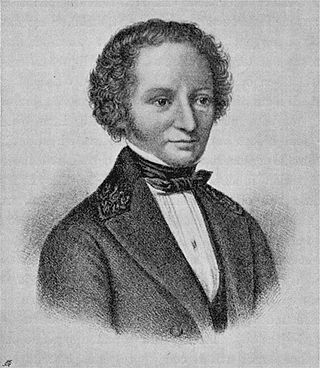
Per Daniel Amadeus Atterbom was a Swedish romantic poet, and a member of the Swedish Academy.
Pavel Kiselyov, Russian general and politician (d. 1874) births

Count Pavel Dmitrievich Kiselyov or Kiseleff is generally regarded as the most brilliant Russian reformer during Nicholas I's generally conservative reign.
Jonathan Toup, English scholar and critic (b. 1713) deaths
Jonathan Oannes Toup was an English philologist, classical scholar and critic.
Giovanni Niccolò Servandoni, Italian-French architect and painter (b. 1695) deaths

Jean-Nicolas Servan, also known as Giovanni Niccolò Servandoni was an Italian decorator, architect, scene-painter, firework designer and trompe-l'œil specialist.
Countess Augusta Reuss of Ebersdorf (d. 1831) births

Countess Augusta Caroline Sophie Reuss-Ebersdorf, was by marriage the Duchess of Saxe-Coburg-Saalfeld. She was the maternal grandmother of Queen Victoria and the paternal grandmother of Albert, Prince Consort.
Thomas Ruddiman, Scottish scholar and academic (b. 1674) deaths

Thomas Ruddiman was a Scottish classical scholar.
Jean-Pierre Christin, French physicist, mathematician, and astronomer (b. 1683) deaths

Jean-Pierre Christin was a French physicist, mathematician, astronomer, and musician. His proposal in 1743 to reverse the Celsius thermometer scale was widely accepted and is still in use today.
James Morris III, American captain (d. 1820) births
James Morris III was a Continental Army officer from Connecticut during the American Revolutionary War and founder of the Morris Academy, a pioneer in coeducation.
Joseph Bonomi the Elder, Italian architect, designed Longford Hall and Barrells Hall (d. 1808) births

Joseph Bonomi the Elder was an Italian architect and draughtsman who spent most of his career in England where he became a successful designer of country houses.

Longford Hall is a large country house in Longford, a village in Shropshire, England near the town of Newport.

Barrells Hall is a large house in the Warwickshire countryside near Henley-in-Arden. The nearest village is Ullenhall, which for many years was the estate village, large parts of it having been built by the owners of Barrells Hall, the Newtons, one of the families who formerly owned Barrells. An adjacent house named Barrells Park was built in about 1950 on part of the Barrells estate.
Giuseppe Millico, Italian soprano, composer, and educator (d. 1802) births

Vito Giuseppe Millico, called "Il Moscovita", was an Italian soprano castrato, composer, and music teacher of the 18th century who is best remembered for his performances in the operas of Christoph Willibald Gluck.
James Watt, Scottish-English chemist and engineer (d. 1819) births

James Watt was a Scottish inventor, mechanical engineer, and chemist who improved on Thomas Newcomen's 1712 Newcomen steam engine with his Watt steam engine in 1776, which was fundamental to the changes brought by the Industrial Revolution in both his native Great Britain and the rest of the world.
William Congreve, English playwright and poet (b. 1670) deaths

William Congreve was an English playwright and poet of the Restoration period. He is known for his clever, satirical dialogue and influence on the comedy of manners style of that period. He was also a minor political figure in the British Whig Party.
Jean-Philippe Baratier, German scholar and author (d. 1740) births

Jean-Philippe Baratier was a German scholar. A noted child prodigy of the 18th century, he published eleven works and authored a great quantity of unpublished manuscripts.
John Weldon, English organist and composer (d. 1736) births

John Weldon was an English composer.
Thomas Venner, English rebel leader deaths

Thomas Venner was a cooper and rebel who became the last leader of the Fifth Monarchy Men, who tried unsuccessfully to overthrow Oliver Cromwell in 1657, and subsequently led a coup in London against the newly restored government of Charles II. This event, known as "Venner's Rising", lasted four days beginning on January 6, 1661 before the Royal authorities captured the rebels. The rebel leadership suffered execution on 19 January 1661.
Marcus Gheeraerts the Younger, Flemish painter (b.1561) deaths

Marcus Gheeraerts was a Flemish artist working at the Tudor court, described as "the most important artist of quality to work in England in large-scale between Eworth and van Dyck" He was brought to England as a child by his father Marcus Gheeraerts the Elder, also a painter. He became a fashionable portraitist in the last decade of the reign of Elizabeth I under the patronage of her champion and pageant-master Sir Henry Lee. He introduced a new aesthetic in English court painting that captured the essence of a sitter through close observation. He became a favorite portraitist of James I's queen Anne of Denmark, but fell out of fashion in the late 1610s.
Charles Stanley, 8th Earl of Derby, English noble (d. 1672) births

Charles Stanley, 8th Earl of Derby was an English nobleman and politician. He was the eldest son of James Stanley, 7th Earl of Derby and Charlotte de La Trémouille.
Lucas Faydherbe, Flemish sculptor and architect (d. 1697) births

Lucas Faydherbe was a Flemish sculptor and architect who played a major role in the development of the High Baroque in the Southern Netherlands.
Maharana Pratap, Hindu Rajput king of Mewar (b.1540) deaths

Pratap Singh I, popularly known as Maharana Pratap, was a king of Mewar from the Sisodia dynasty. Pratap became a folk hero for his military resistance against the expansionism of the Mughal Empire under Akbar through guerrilla warfare which proved inspirational for later rebels against Mughals including Shivaji.

Hindus are people who religiously adhere to Hinduism. Historically, the term has also been used as a geographical, cultural, and later religious identifier for people living in the Indian subcontinent.
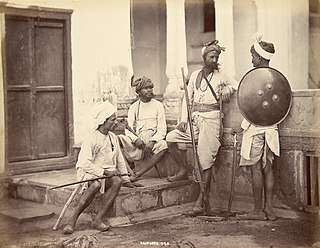
Rajput is a large multi-component cluster of castes, kin bodies, and local groups, sharing social status and ideology of genealogical descent originating from the Indian subcontinent. The term Rajput covers various patrilineal clans historically associated with warriorhood: several clans claim Rajput status, although not all claims are universally accepted. According to modern scholars, almost all Rajput clans originated from peasant or pastoral communities.

Mewar or Mewad is a region in the south-central part of Rajasthan state of India. It includes the present-day districts of Bhilwara, Chittorgarh, Pratapgarh, Rajsamand, Udaipur, Pirawa Tehsil of Jhalawar District of Rajasthan, Neemuch and Mandsaur of Madhya Pradesh and some parts of Gujarat.
Hans Sachs, German poet and playwright (b. 1494) deaths
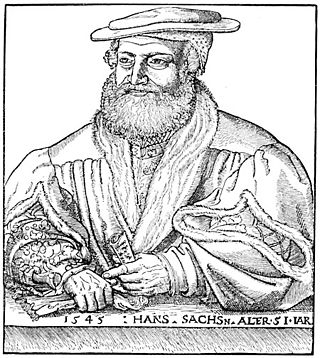
Hans Sachs was a German Meistersinger ("mastersinger"), poet, playwright, and shoemaker.
Paris Bordone, Venetian painter (b. 1495) deaths

Paris Bordone was an Italian painter of the Venetian Renaissance who, despite training with Titian, maintained a strand of Mannerist complexity and provincial vigor.
Diego Laynez, Spanish Jesuit theologian (b. 1512) deaths

Several spellings of his names are in use and some of them can be found in other Wikipedia articles
Henry Howard, Earl of Surrey, English poet (b. 1516) deaths
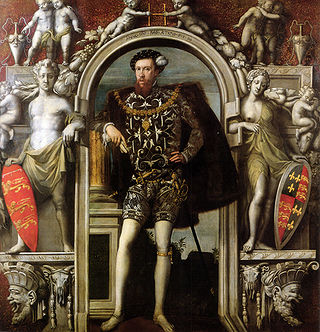
Henry Howard, Earl of Surrey, KG, was an English nobleman, politician and poet. He was one of the founders of English Renaissance poetry and was the last known person executed at the instance of King Henry VIII. He was a first cousin of the king's wives Anne Boleyn and Catherine Howard. His name is usually associated in literature with that of the poet Sir Thomas Wyatt. Owing largely to the powerful position of his father, Thomas Howard, 3rd Duke of Norfolk, Surrey took a prominent part in the court life of the time, and served as a soldier both in France and Scotland. He was a man of reckless temper, which involved him in many quarrels, and finally brought upon him the wrath of the ageing and embittered Henry VIII. He was arrested, tried for treason and beheaded on Tower Hill.
Francis II of France (d. 1560) births
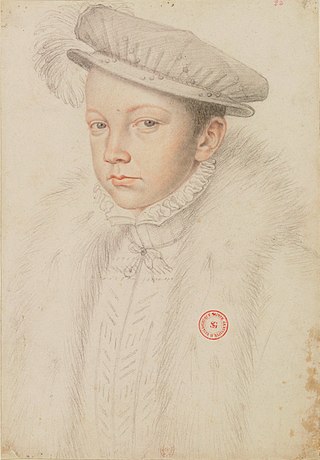
Francis II was King of France from 1559 to 1560. He was also King consort of Scotland as a result of his marriage to Mary, Queen of Scots, from 1558 until his death in 1560.
Isabella of Austria, Danish queen (b. 1501) deaths

Isabella of Austria, also known as Elizabeth, was Queen of Denmark, Norway and Sweden as the wife of King Christian II. She was the daughter of King Philip I and Queen Joanna of Castile and the sister of Emperor Charles V. She ruled Denmark as regent in 1520.
Robert Bealknap, British justice deaths
Sir Robert Belknap was a senior English judge.
Al-Hakim I, caliph of Cairo deaths
Al-Hakim I, was the second Abbasid caliph whose seat was in Cairo and who was subservient to the Mamluk Sultanate. He reigned between 1262 and 1302.
Dōgen Zenji, founder of Sōtō Zen (d. 1253) births

Dōgen Zenji, also known as Dōgen Kigen (道元希玄), Eihei Dōgen (永平道元), Kōso Jōyō Daishi (高祖承陽大師), or Busshō Dentō Kokushi (仏性伝東国師), was a Japanese Buddhist priest, writer, poet, philosopher, and founder of the Sōtō school of Zen in Japan.

Sōtō Zen or the Sōtō school is the largest of the three traditional sects of Zen in Japanese Buddhism. It is the Japanese line of the Chinese Cáodòng school, which was founded during the Tang dynasty by Dòngshān Liánjiè. It emphasizes Shikantaza, meditation with no objects, anchors, or content. The meditator strives to be aware of the stream of thoughts, allowing them to arise and pass away without interference.
Kilian of Cologne, Irish abbot deaths
Kilian of Cologne, Irish Abbot, died 19 January 1003
García I, king of León deaths

García I was the King of León from 910 until his death and eldest of three succeeding sons of Alfonso III the Great by his wife Jimena.
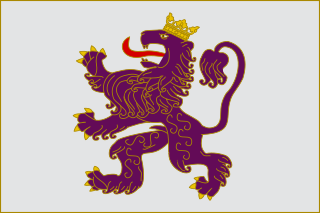
The Kingdom of León was an independent kingdom situated in the northwest region of the Iberian Peninsula. It was founded in 910 when the Christian princes of Asturias along the northern coast of the peninsula shifted their capital from Oviedo to the city of León. The kings of León fought civil wars, wars against neighbouring kingdoms, and campaigns to repel invasions by both the Moors and the Vikings, all in order to protect their kingdom's changing fortunes.
Dagobert I, Frankish king (b. 603) deaths
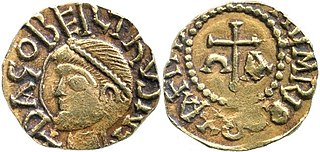
Dagobert I was the king of Austrasia (623–634), king of all the Franks (629–634), and king of Neustria and Burgundy (629–639). He has been described as the last king of the Merovingian dynasty to wield any real royal power. Dagobert was the first of the Frankish kings to be buried in the royal tombs at Saint Denis Basilica.
John of Cappadocia, patriarch of Constantinople deaths
John II, surnamed Cappadox or the Cappadocian was Patriarch of Constantinople in 518–520, during the reign of Byzantine emperor Anastasius I after an enforced condemnation of the Council of Chalcedon. His short patriarchate is memorable for the celebrated Acclamations of Constantinople, and the reunion of East and West after a schism of 34 years. At the death of Timothy I, John of Cappadocia, whom he had designated his successor, was presbyter and chancellor of the Church of Constantinople.
Pulcheria, Byzantine empress and saint (d. 453) births

Aelia Pulcheria was an Eastern Roman empress who advised her brother emperor Theodosius II during his minority and then became wife to emperor Marcian from November 450 to her death in 453.
Christian feast day: Bassianus of Lodi
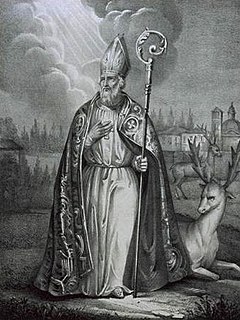
Bassianus of Lodi was an Italian saint, the patron saint of Lodi and Pizzighettone in Italy.
Christian feast day: Henry of Uppsala

Henry was a medieval English clergyman. He came to Sweden with Cardinal Nicholas Breakspeare in 1153 and was most likely designated to be the new Archbishop of Uppsala, but the independent church province of Sweden could only be established in 1164 after the civil war, and Henry would have been sent to organize the Church in Finland, where Christians had already existed for two centuries.
Christian feast day: Marius, Martha, Audifax, and Abachum
Saints Marius, Martha, Audifax, and Abachum were, according to their largely legendary passio of the 6th century, four saints of the same family. They came from Persia to Rome, and were martyred in 270 for sympathizing with Christian martyrs and burying their bodies. Some ancient martyrologies place the date of their death between 268 and 270, during the reign of Claudius II, although there was no persecution of Christians during this time.
Christian feast day: Mark of Ephesus (Eastern Orthodox Church)

Mark of Ephesus was a hesychast theologian of the late Palaiologan period of the Byzantine Empire who became famous for his rejection of the Council of Ferrara-Florence (1438–1439). As a monk in Constantinople, Mark was a prolific hymnographer and a devoted Palamite. As a theologian and a scholar, he was instrumental in the preparations for the Council of Ferrara-Florence, and as Metropolitan of Ephesus and delegate for the Patriarch of Alexandria, he was one of the most important voices at the synod. After renouncing the Council as a lost cause, Mark became the leader of the Orthodox opposition to the Union of Florence, thus sealing his reputation as a defender of Eastern Orthodoxy and pillar of the Eastern Orthodox Church.

The Eastern Orthodox Church, also called the Orthodox Church, is the second-largest Christian church, with approximately 220 million baptized members. It operates as a communion of autocephalous churches, each governed by its bishops via local synods. The church has no central doctrinal or governmental authority analogous to the head of the Roman Catholic Church—the Pope—but the Ecumenical Patriarch of Constantinople is recognized by them as primus inter pares, which may be explained as a representative of the church. As one of the oldest surviving religious institutions in the world, the Eastern Orthodox Church has played a prominent role in the history and culture of Eastern and Southeastern Europe. The Eastern Orthodox Church officially calls itself the Orthodox Catholic Church.
Christian feast day: Pontianus of Spoleto

Pontianus was a second century Christian martyr. He was martyred during the reign of the Emperor Marcus Aurelius. He is honored as a saint and martyr by the Catholic Church, the Old Catholic Church, and the Eastern Orthodox Church. In Spoleto, Italy, he is invoked for protection against earthquakes.
Christian feast day: Wulfstan, Bishop of Worcester

Wulfstan was Bishop of Worcester from 1062 to 1095. He was the last surviving pre-Conquest bishop. Wulfstan is a saint in the Western Christian churches.
Christian feast day: January 19 (Eastern Orthodox liturgics)

January 18 - Eastern Orthodox liturgical calendar - January 20
Confederate Heroes Day (Texas), and its related observance: Robert E. Lee Day (Alabama, Arkansas, Florida, Georgia and Mississippi)

Robert E. Lee Day is a state holiday in parts of the Southern US, commemorating the Confederate general Robert E. Lee.

Alabama is a state in the Southeastern region of the United States, bordered by Tennessee to the north; Georgia to the east; Florida and the Gulf of Mexico to the south; and Mississippi to the west. Alabama is the 30th largest by area and the 24th-most populous of the U.S. states. With a total of 1,500 miles (2,400 km) of inland waterways, Alabama has among the most of any state.

Arkansas is a landlocked state in the South Central United States. It is bordered by Missouri to the north, Tennessee and Mississippi to the east, Louisiana to the south, and Texas and Oklahoma to the west. Its name is from the Osage language, a Dhegiha Siouan language, and referred to their relatives, the Quapaw people. The state's diverse geography ranges from the mountainous regions of the Ozark and Ouachita Mountains, which make up the U.S. Interior Highlands, to the densely forested land in the south known as the Arkansas Timberlands, to the eastern lowlands along the Mississippi River and the Arkansas Delta.

Florida is a state located in the Southeastern region of the United States. Florida is bordered to the west by the Gulf of Mexico, to the northwest by Alabama, to the north by Georgia, to the east by the Bahamas and Atlantic Ocean, and to the south by the Straits of Florida and Cuba; it is the only state that borders both the Gulf of Mexico and the Atlantic Ocean. Spanning 65,758 square miles (170,310 km2), Florida ranks 22nd in area among the 50 states, and with a population of over 21 million, is the third-most populous. The state capital is Tallahassee and the most populous city is Jacksonville. The Miami metropolitan area, with a population of almost 6.2 million, is the most populous urban area in Florida and the ninth-most populous in the United States; other urban conurbations with over one million people are Tampa Bay, Orlando, and Jacksonville.

Georgia is a state in the Southeastern region of the United States, bordered to the north by Tennessee and North Carolina; to the northeast by South Carolina; to the southeast by the Atlantic Ocean; to the south by Florida; and to the west by Alabama. Georgia is the 24th-largest state in area and 8th most populous of the 50 United States. Its 2020 population was 10,711,908, according to the U.S. Census Bureau. Atlanta, a "beta(+)" global city, is both the state's capital and its largest city. The Atlanta metropolitan area, with a population of more than 6 million people in 2020, is the 9th most populous metropolitan area in the United States and contains about 57% of Georgia's entire population.

Mississippi is a state in the Southeastern region of the United States, bordered to the north by Tennessee; to the east by Alabama; to the south by the Gulf of Mexico; to the southwest by Louisiana; and to the northwest by Arkansas. Mississippi's western boundary is largely defined by the Mississippi River. Mississippi is the 32nd largest and 35th-most populous of the 50 U.S. states and has the lowest per-capita income in the United States. Jackson is both the state's capital and largest city. Greater Jackson is the state's most populous metropolitan area, with a population of 591,978 in 2020.
Husband's Day (Iceland)

Man's Day and Woman's Day are traditional celebration days in Iceland, which were traditionally determined according to the old Icelandic calendar.

Iceland is a Nordic island country in the North Atlantic Ocean and in the Arctic Ocean. Iceland is the most sparsely populated country in Europe. Iceland's capital and largest city is Reykjavík, which is home to over 65% of the population. Iceland is the biggest part of the Mid-Atlantic Ridge that rises above sea level, and its central volcanic plateau is erupting almost constantly. The interior consists of a plateau characterised by sand and lava fields, mountains, and glaciers, and many glacial rivers flow to the sea through the lowlands. Iceland is warmed by the Gulf Stream and has a temperate climate, despite a high latitude just outside the Arctic Circle. Its high latitude and marine influence keep summers chilly, and most of its islands have a polar climate.
Kokborok Day (Tripura, India)
Kokborok Day is a festival celebrated in the Indian state of Tripura to celebrate the development of the Kokborok language. It is observed on 19 January every year. The Kokborok language is an official language in Tripura. This day is chosen to commemorate its initial recognition as an official language in 1979. The activities include cultural programmes and literary activities.

Tripura is a state in Northeast India. The third-smallest state in the country, it covers 10,491.69 km2 (4,050.86 sq mi) and is bordered by Bangladesh to the north, south, and west, and the Indian states of Assam and Mizoram to the east. In 2011 the state had 3,671,032 residents, constituting 0.3% of the country's population.
Theophany / Epiphany (Eastern and Oriental Orthodoxy), and its related observances: Timkat, or 20 during Leap Year (Ethiopian Orthodox)

Timket is an Ethiopian Orthodox Tewahedo Church and Eritrean Orthodox Tewahedo Church celebration of Epiphany. It is celebrated on 19 January, corresponding to the 11th day of Terr in the Ge'ez calendar.
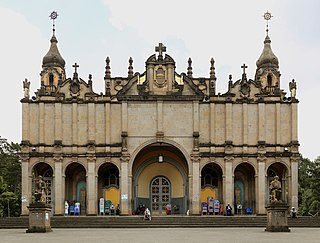
The Ethiopian Orthodox Tewahedo Church is the largest of the Oriental Orthodox Churches. One of the few Christian churches in sub-Saharan Africa originating before European colonization of the continent, the Ethiopian Orthodox Tewahedo Church dates back to the acceptance of Christianity by the Kingdom of Aksum in 330, and has between 36 million and 49.8 million adherents in Ethiopia. It is a founding member of the World Council of Churches. The Ethiopian Orthodox Tewahedo Church is in communion with the other Oriental Orthodox churches.
Theophany / Epiphany (Eastern and Oriental Orthodoxy), and its related observances: Vodici or Baptism of Jesus (North Macedonia)

Public holidays are observed in the Republic of North Macedonia for a number of reasons, including for religious and national significance. They are generally accompanied by celebrations.
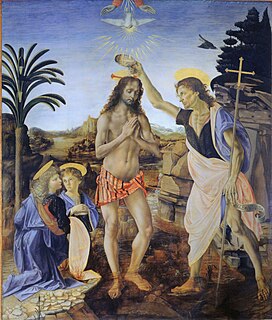
The baptism of Jesus by John the Baptist is a major event in the life of Jesus which is described in the three synoptic Gospels of the New Testament. It is considered to have taken place at Al-Maghtas, today located in Jordan.

North Macedonia, officially the Republic of North Macedonia, is a country in Southeast Europe. It gained independence in 1991 as one of the successor states of Yugoslavia. It is a landlocked country bordering Kosovo to the northwest, Serbia to the north, Bulgaria to the east, Greece to the south, and Albania to the west. It constitutes approximately the northern third of the larger geographical region of Macedonia. Skopje, the capital and largest city, is home to a quarter of the country's 1.83 million people. The majority of the residents are ethnic Macedonians, a South Slavic people. Albanians form a significant minority at around 25%, followed by Turks, Romani, Serbs, Bosniaks, Aromanians and a few other minorities.